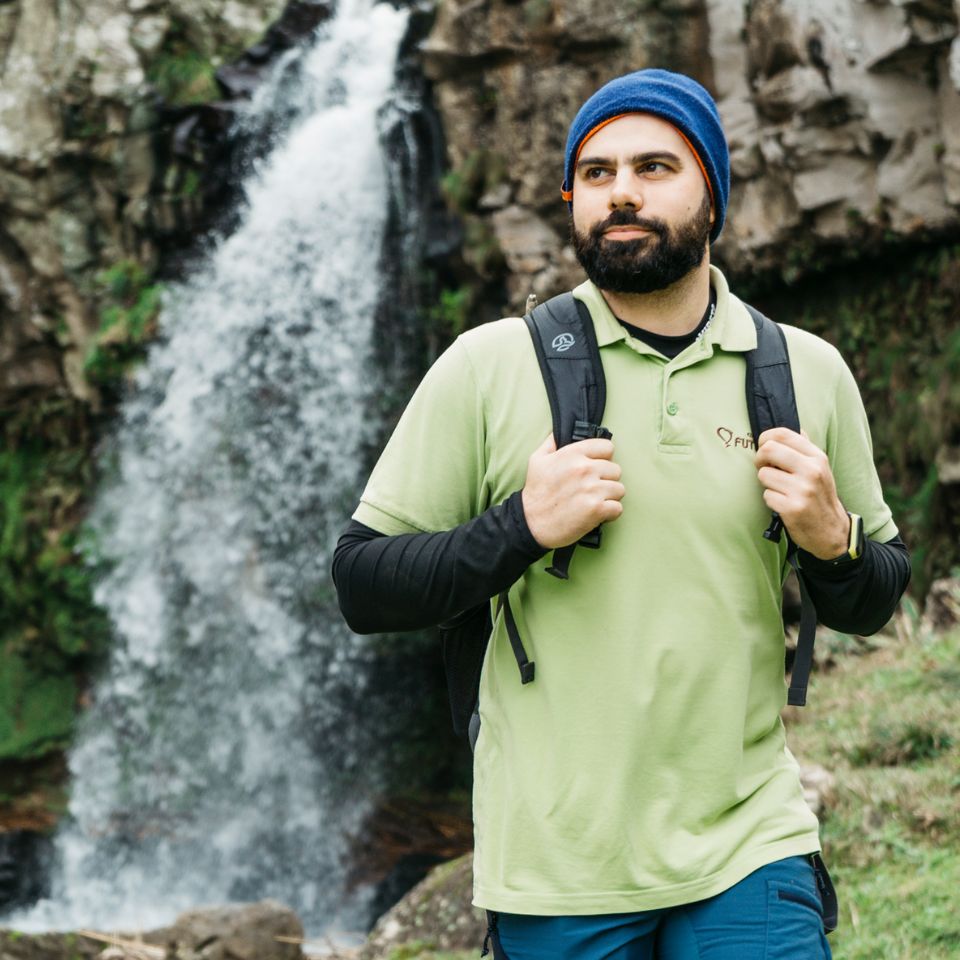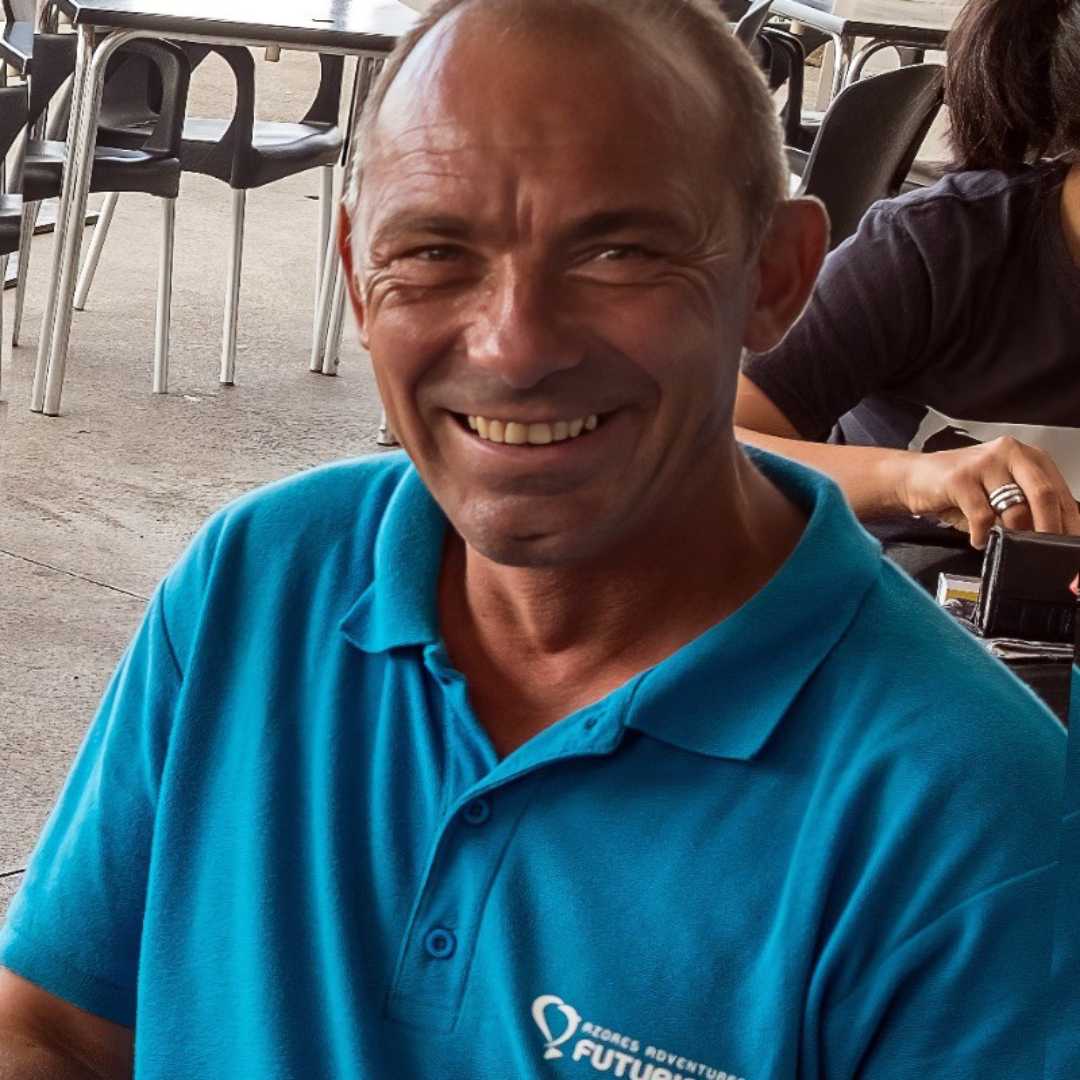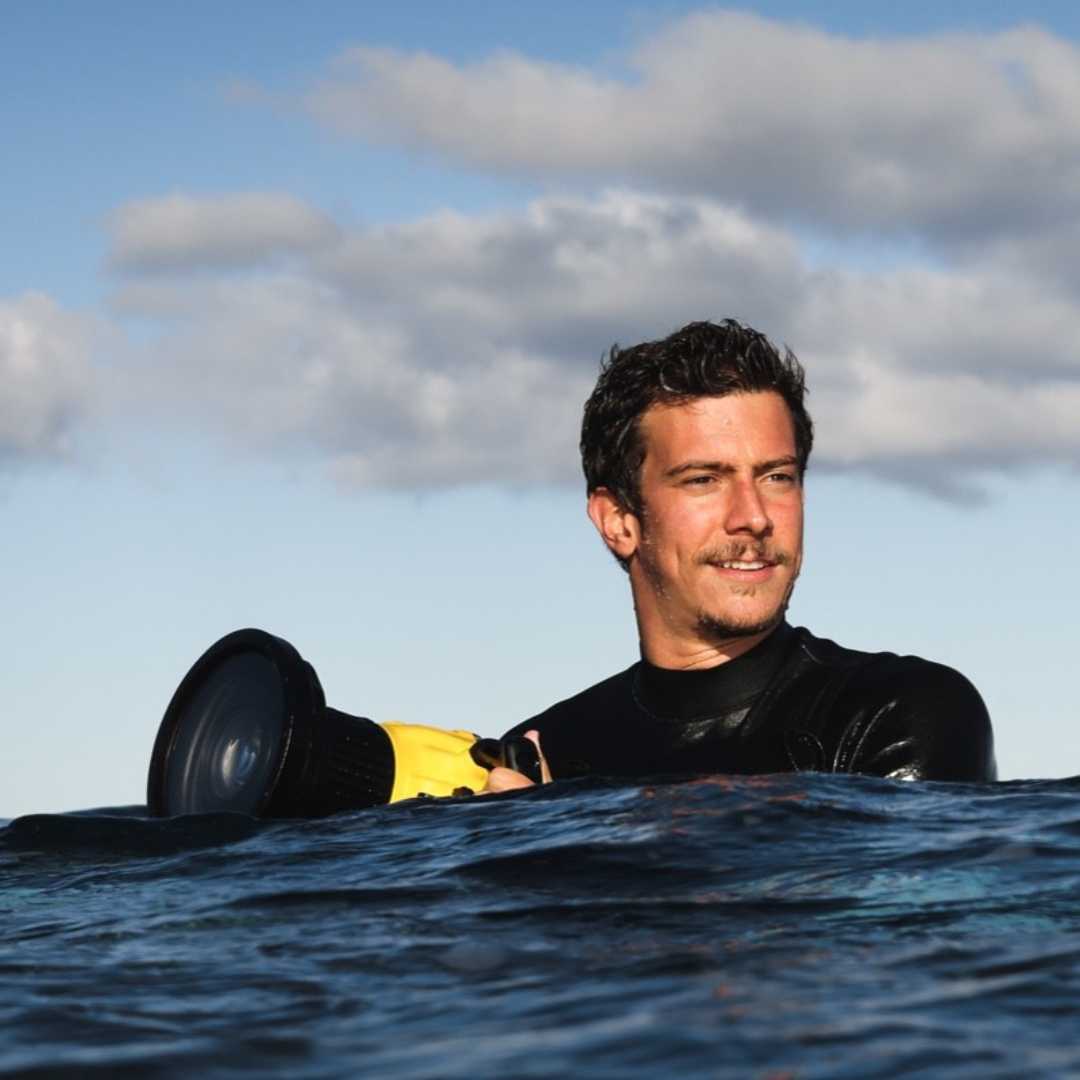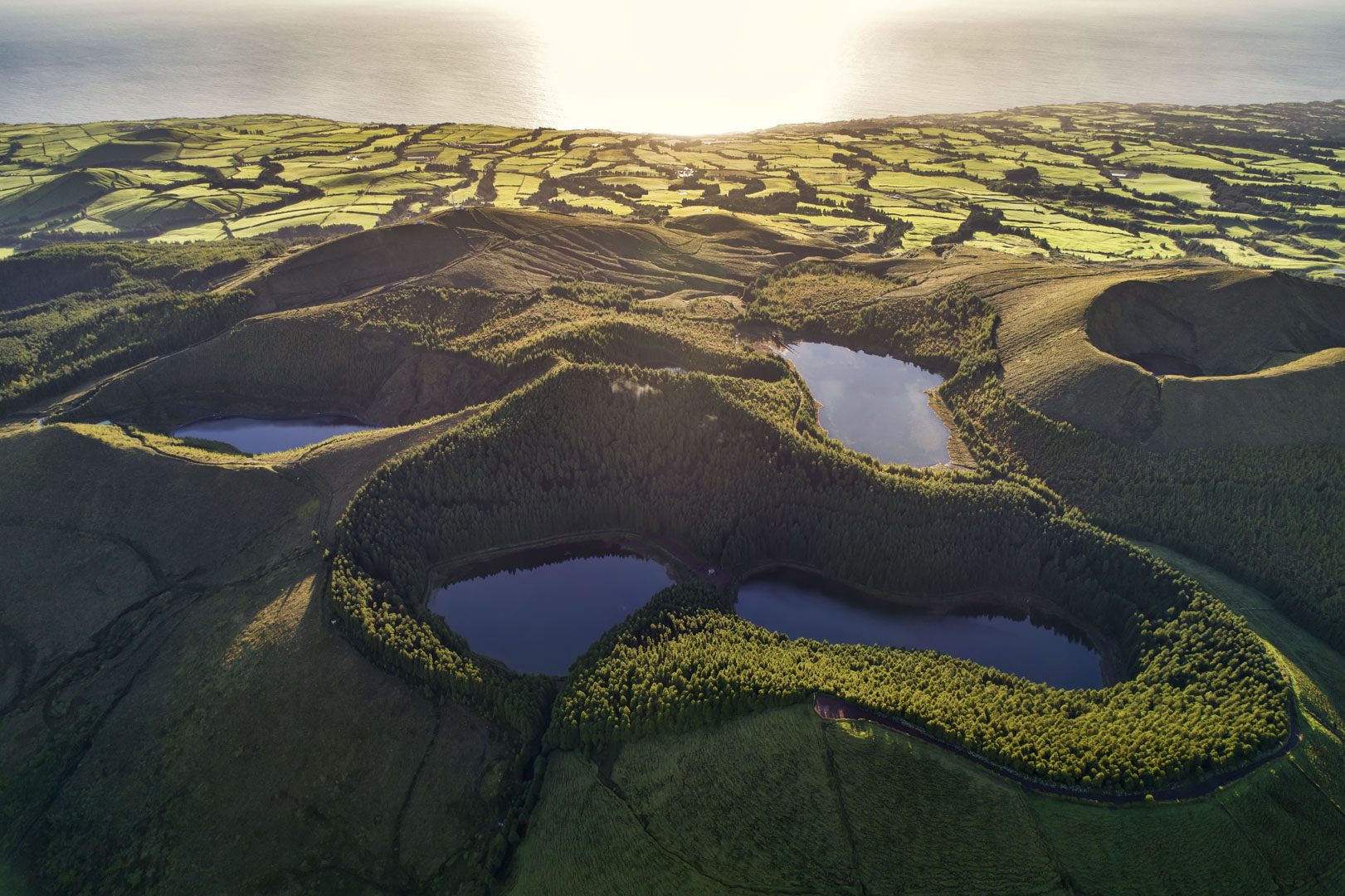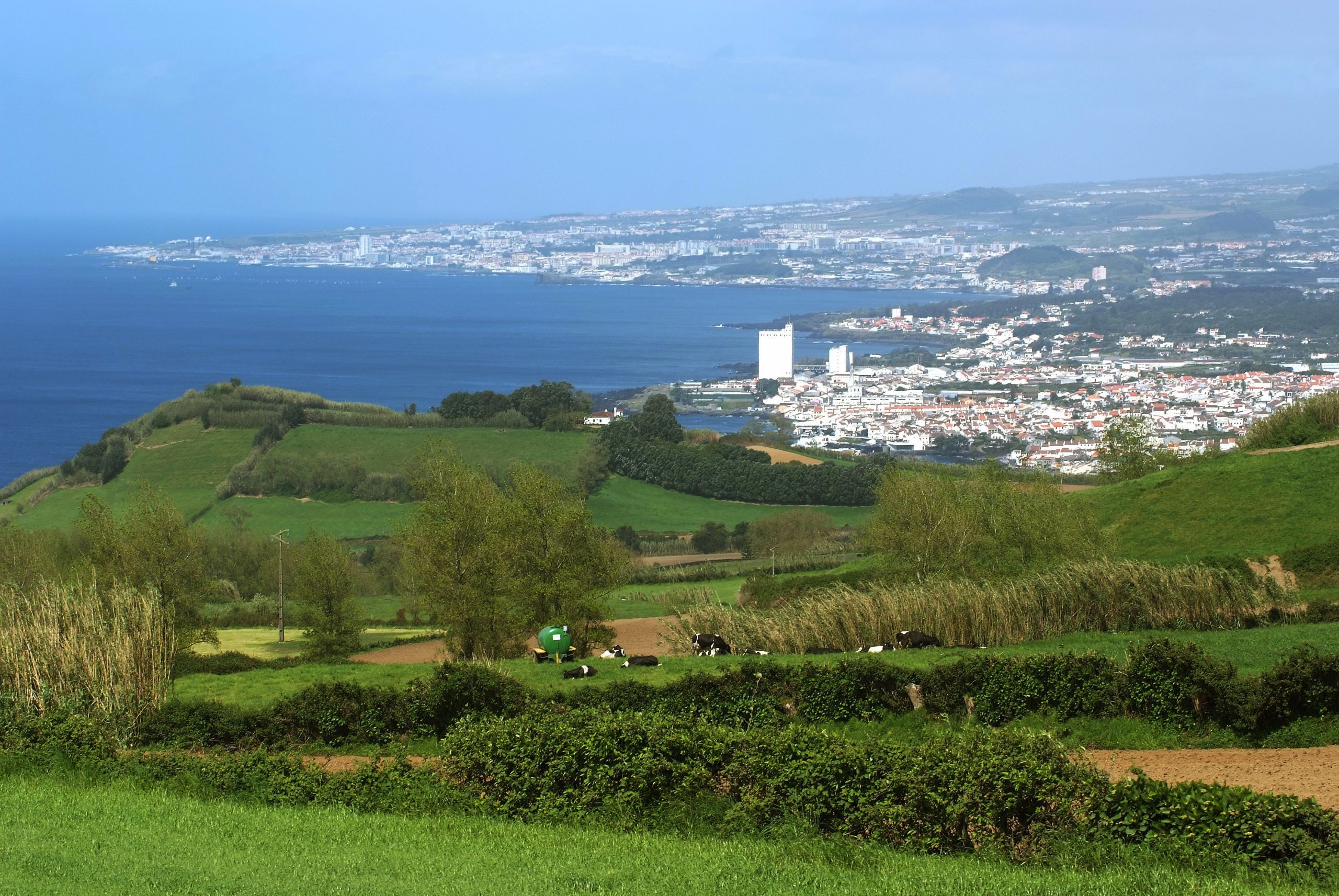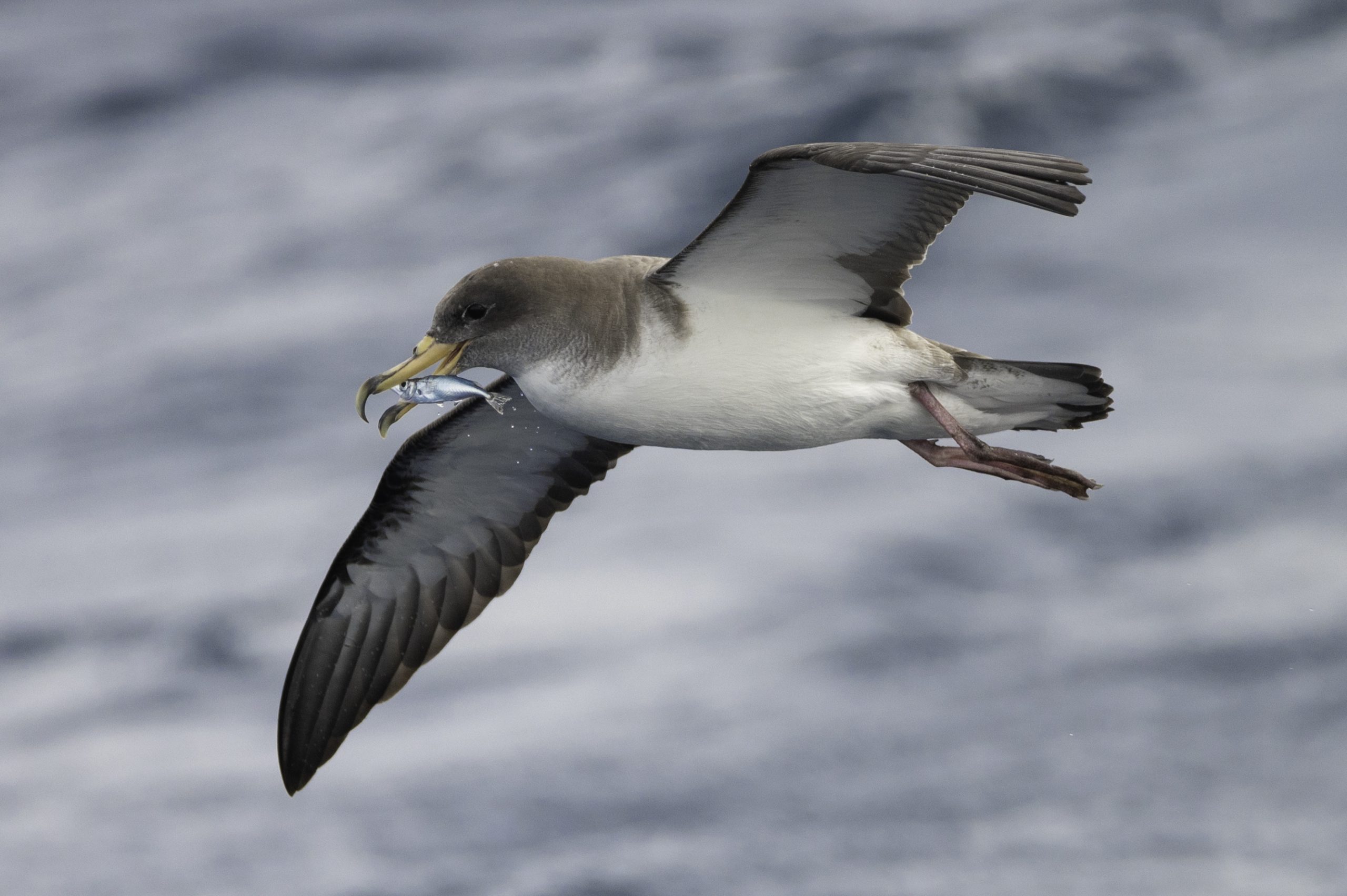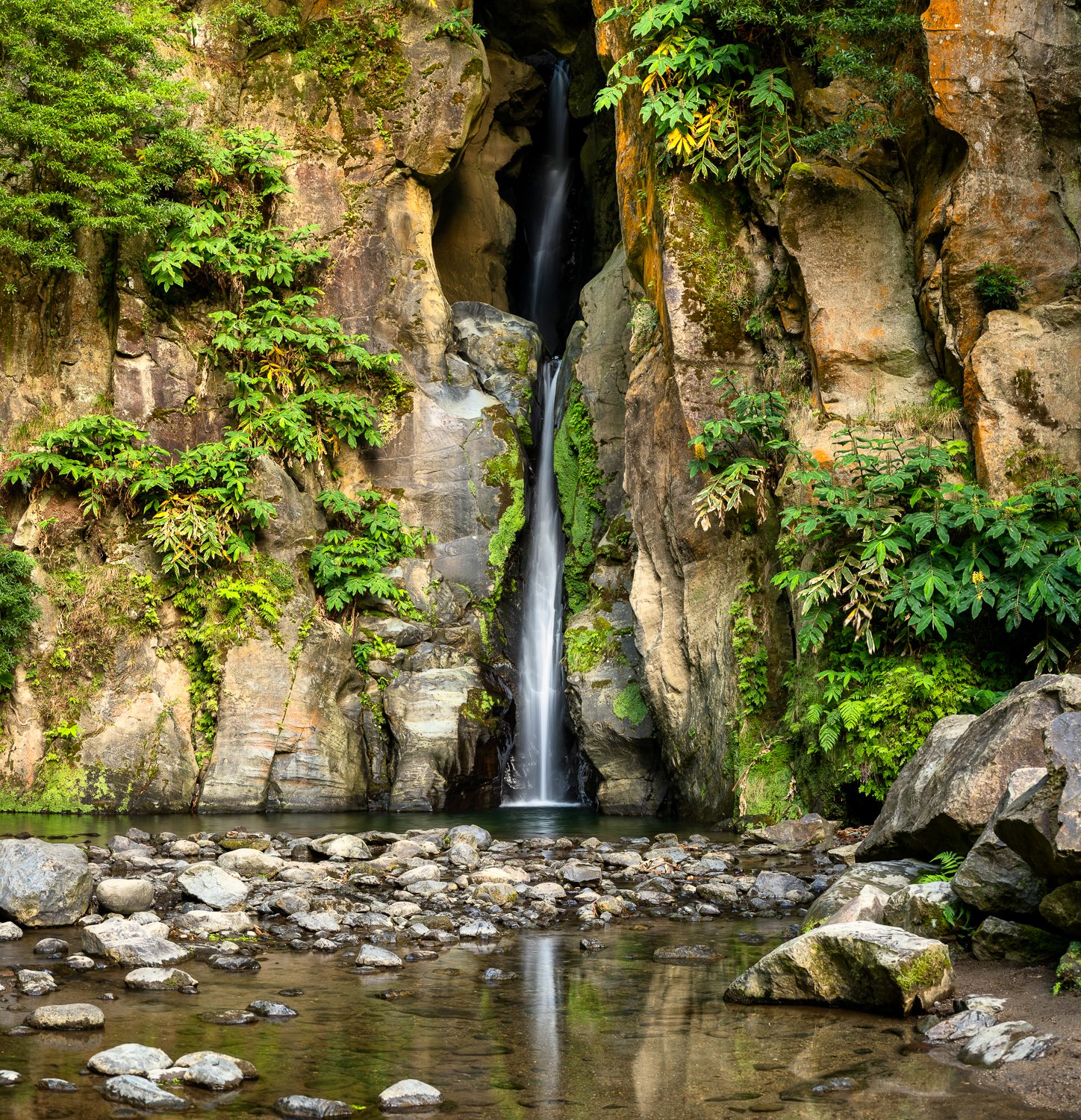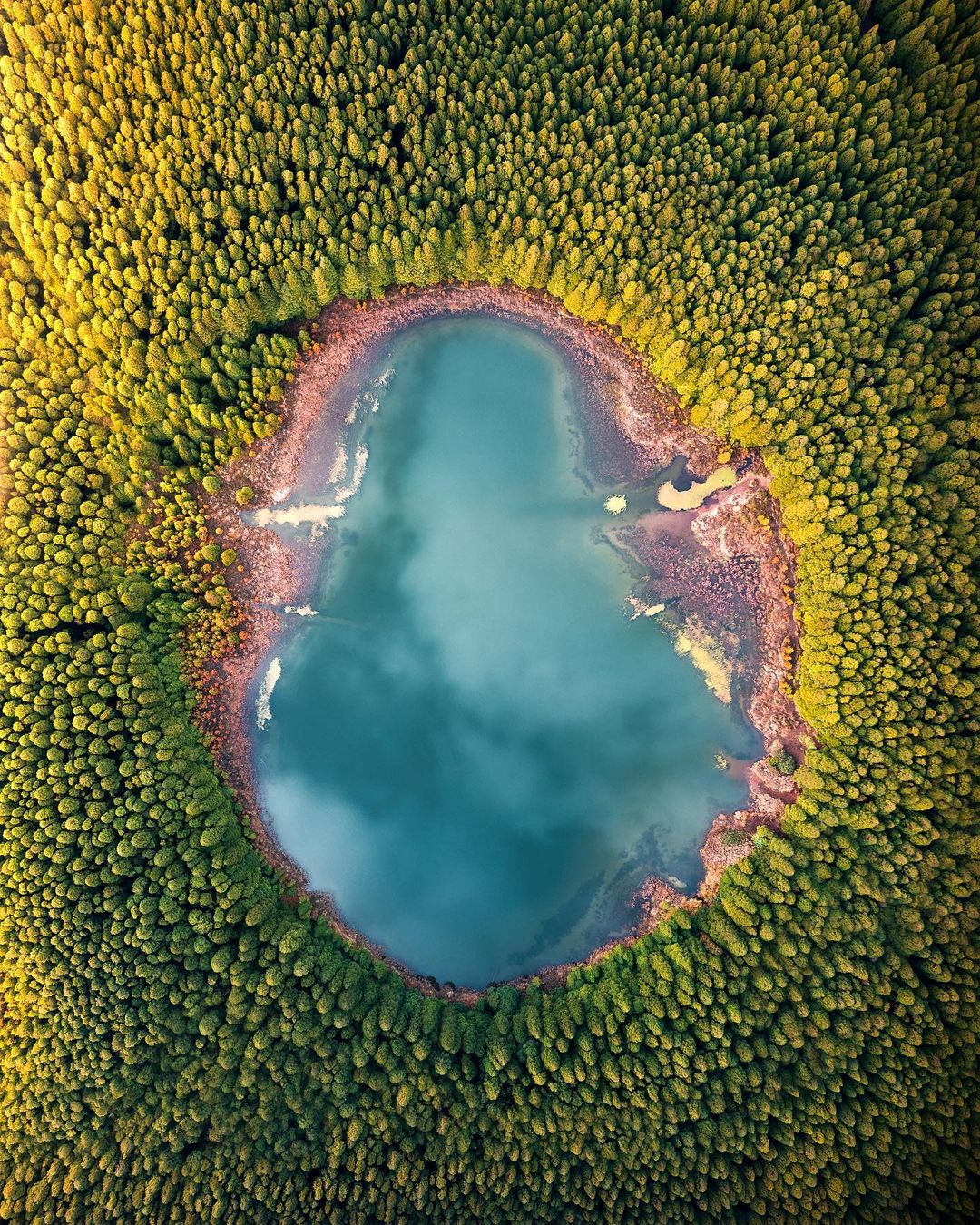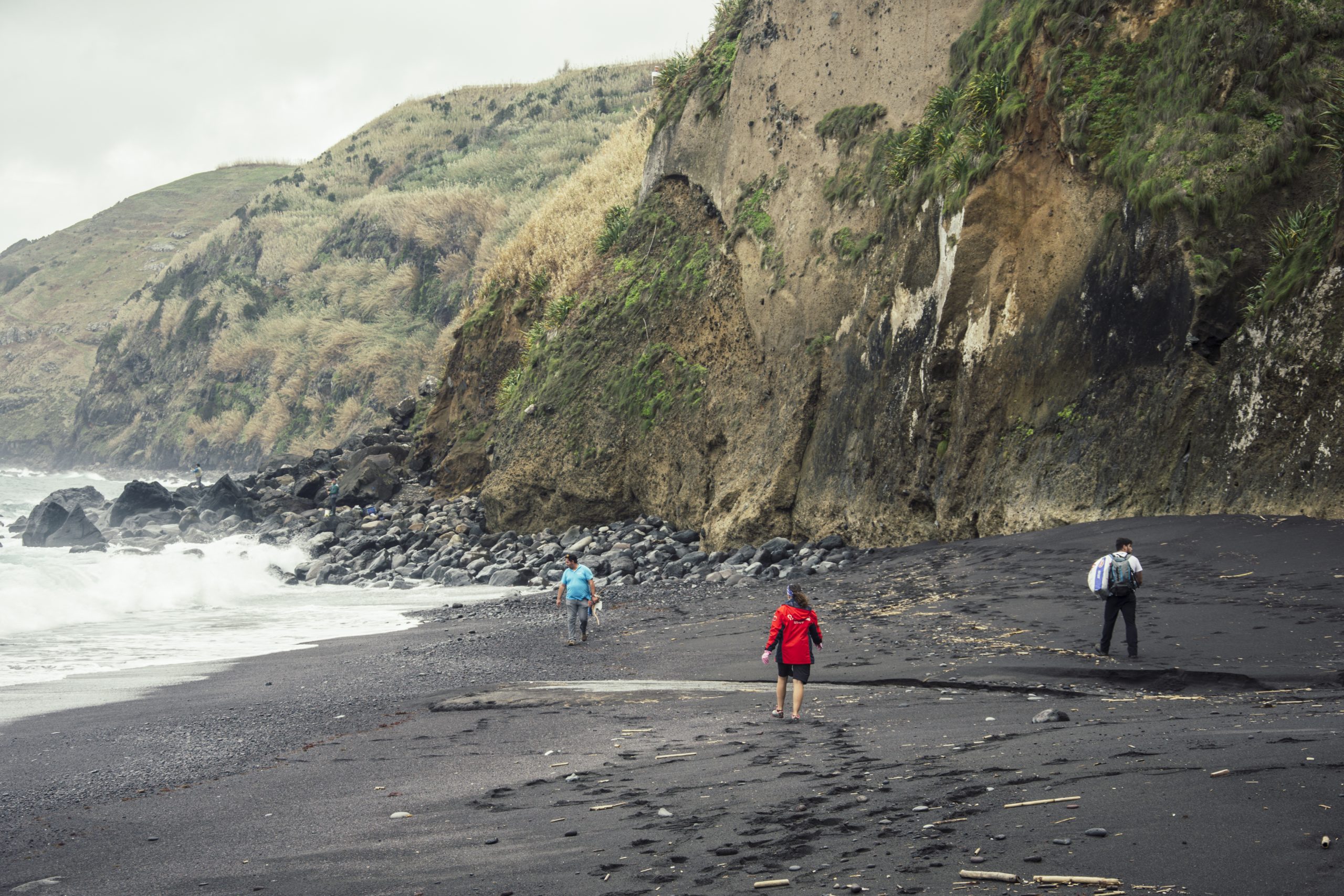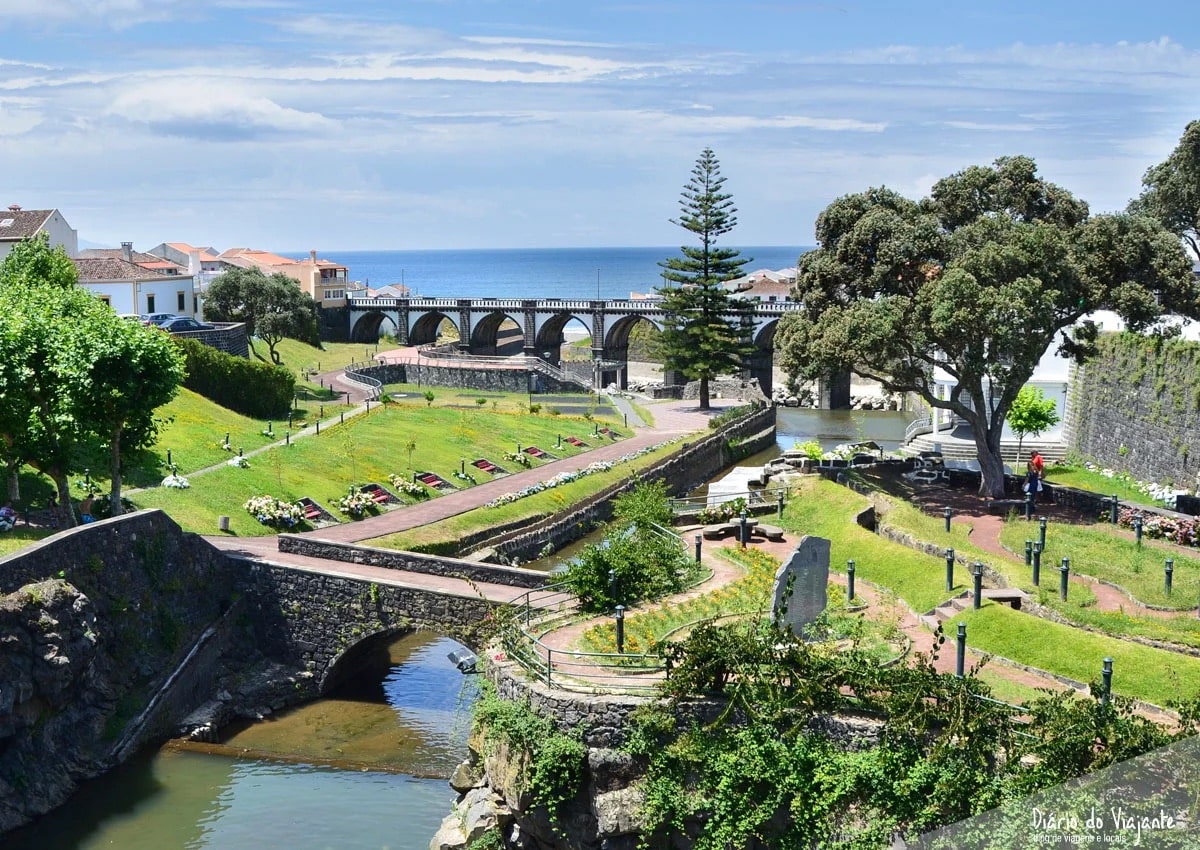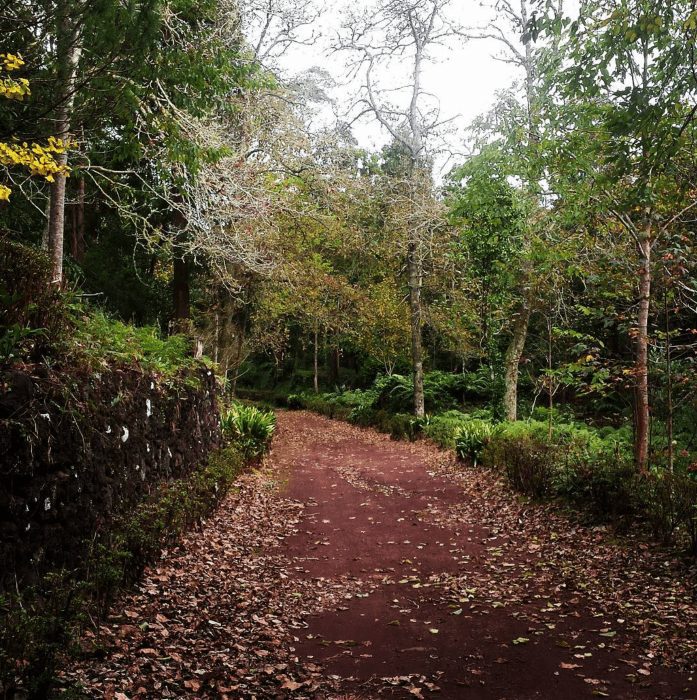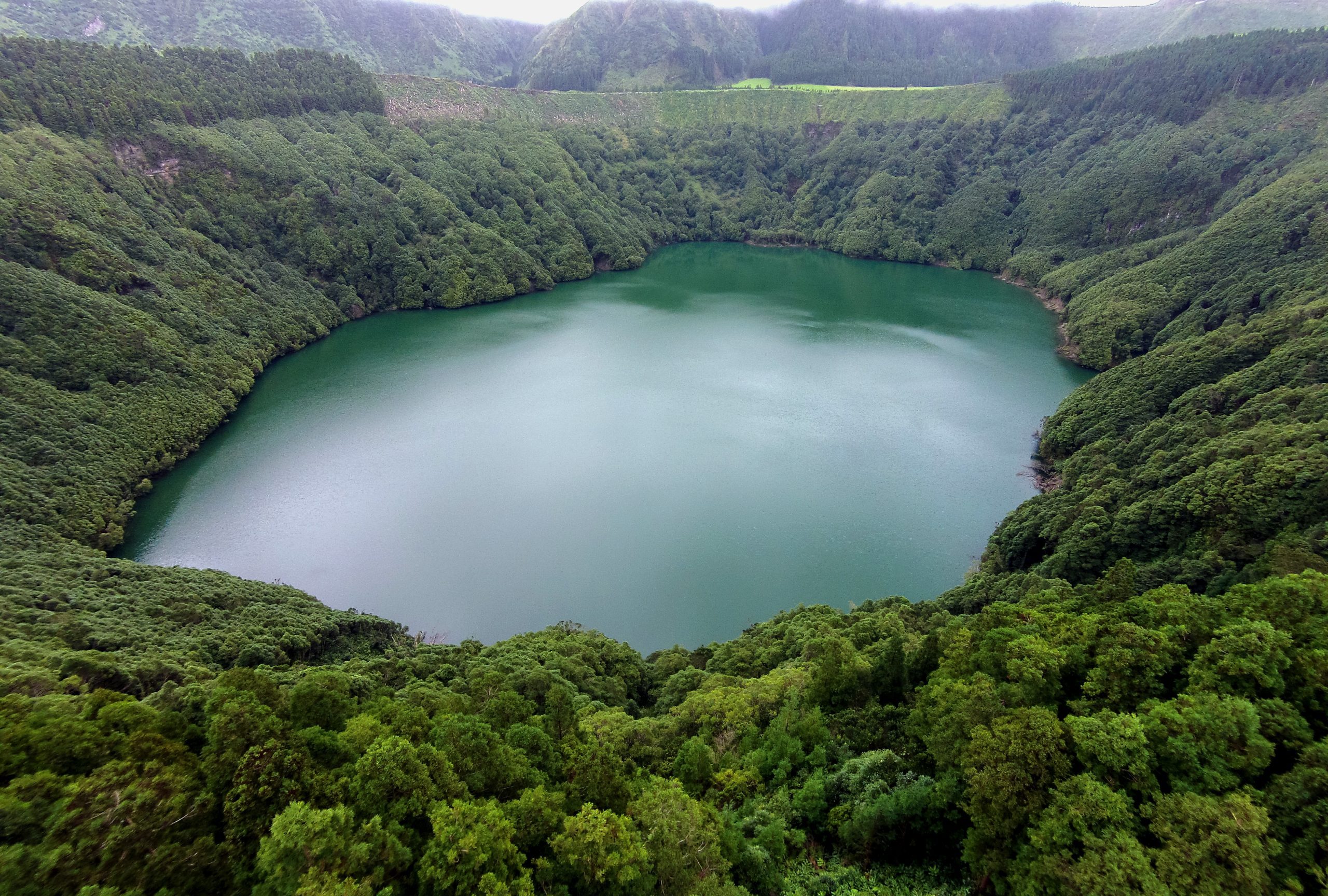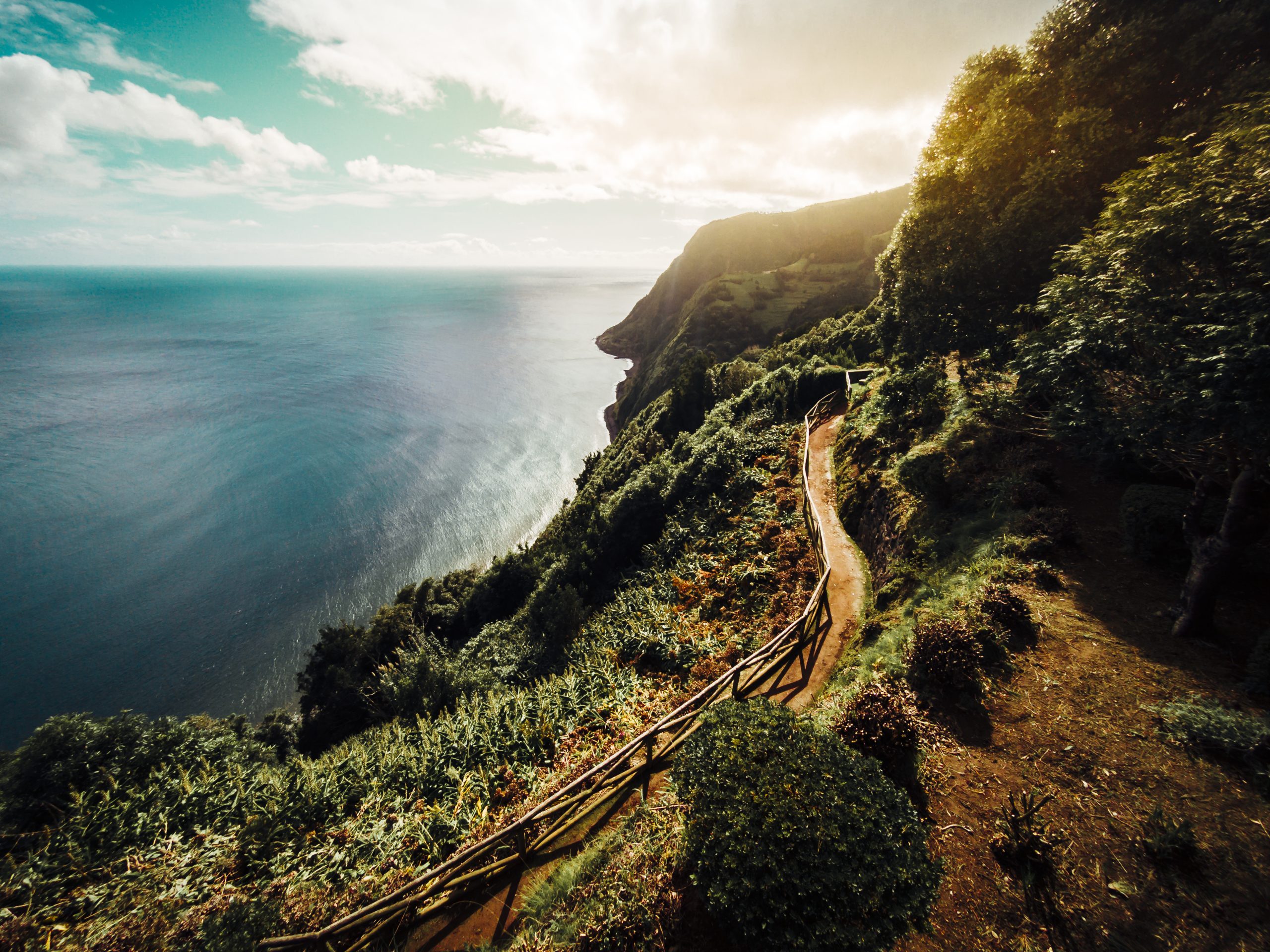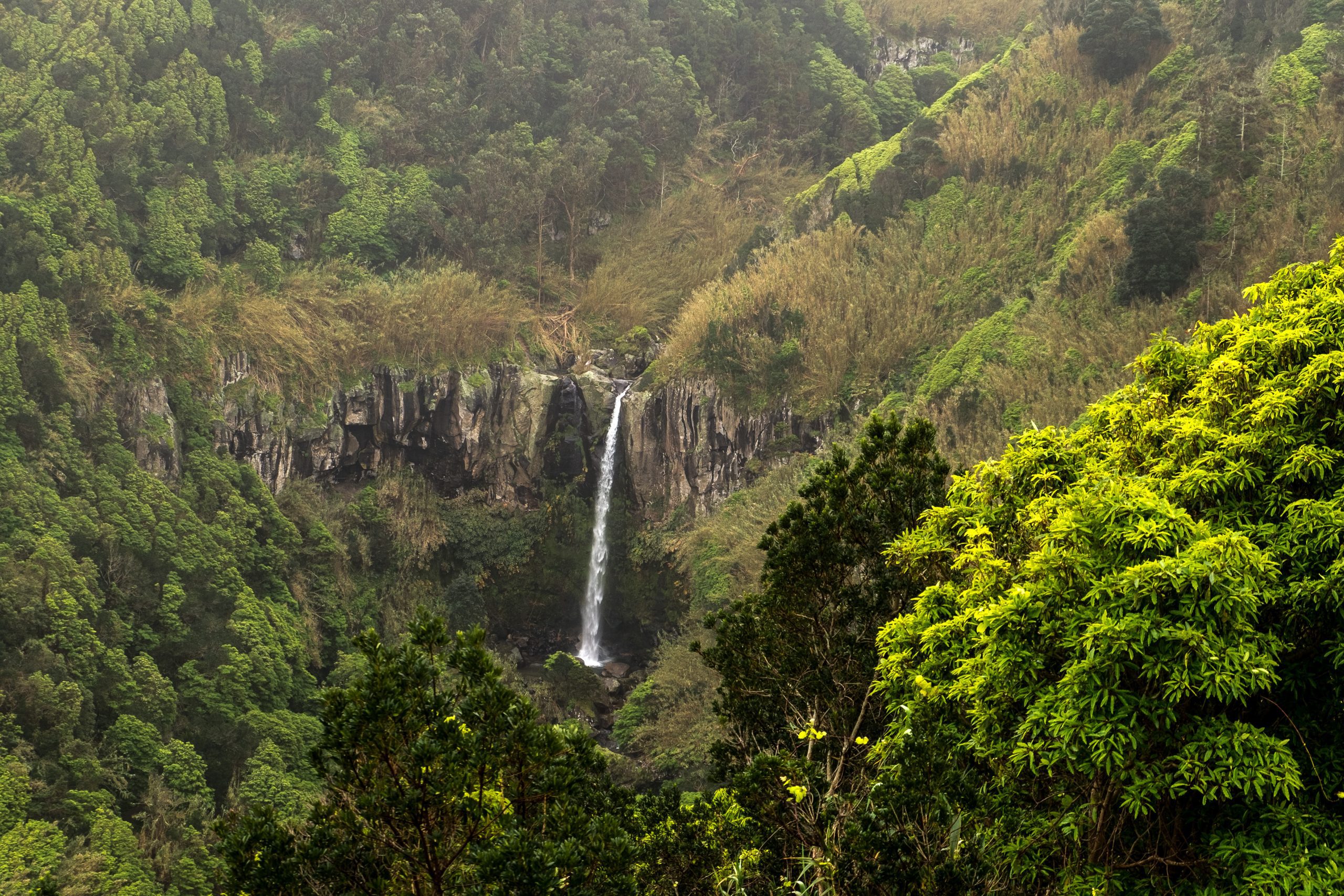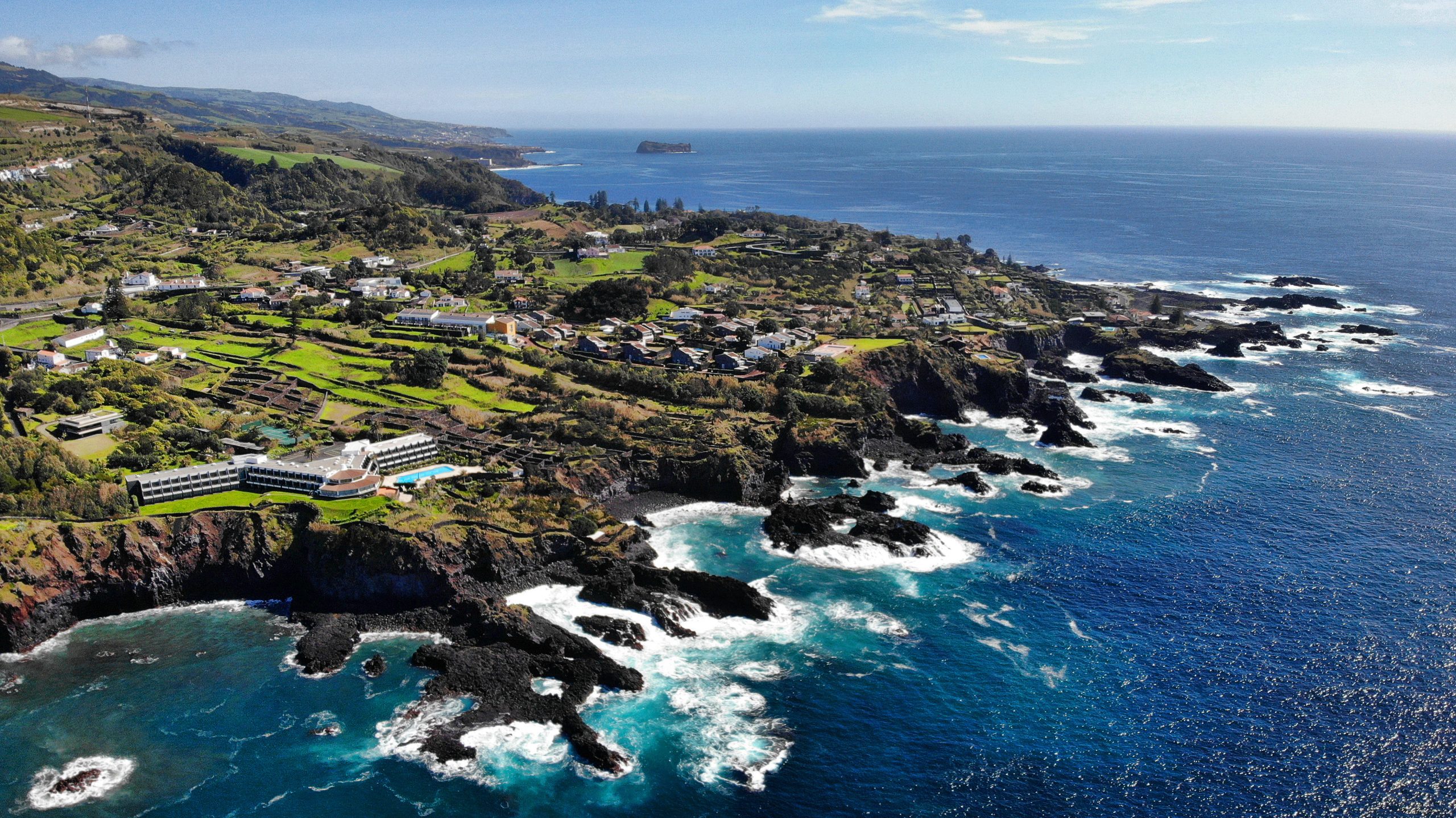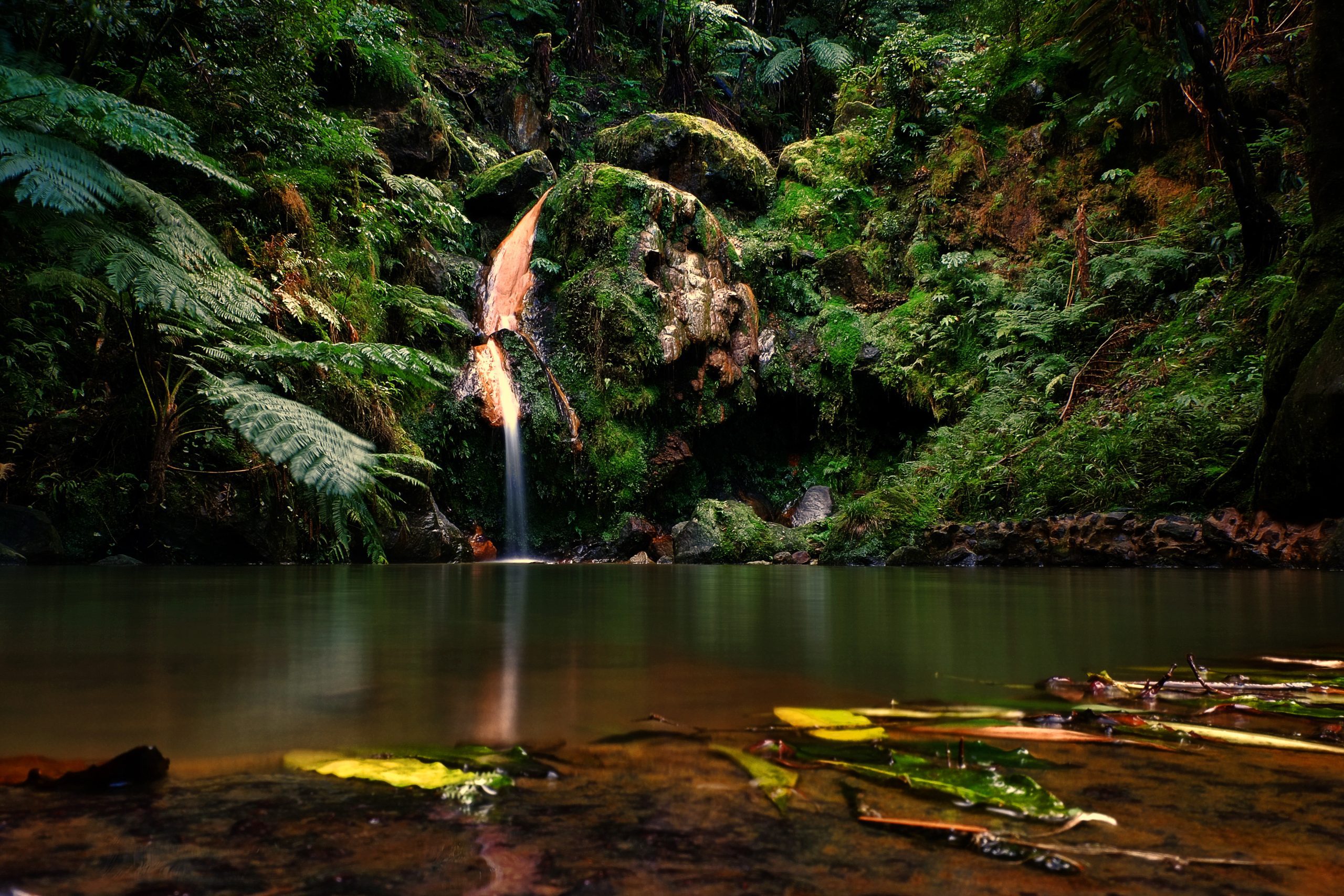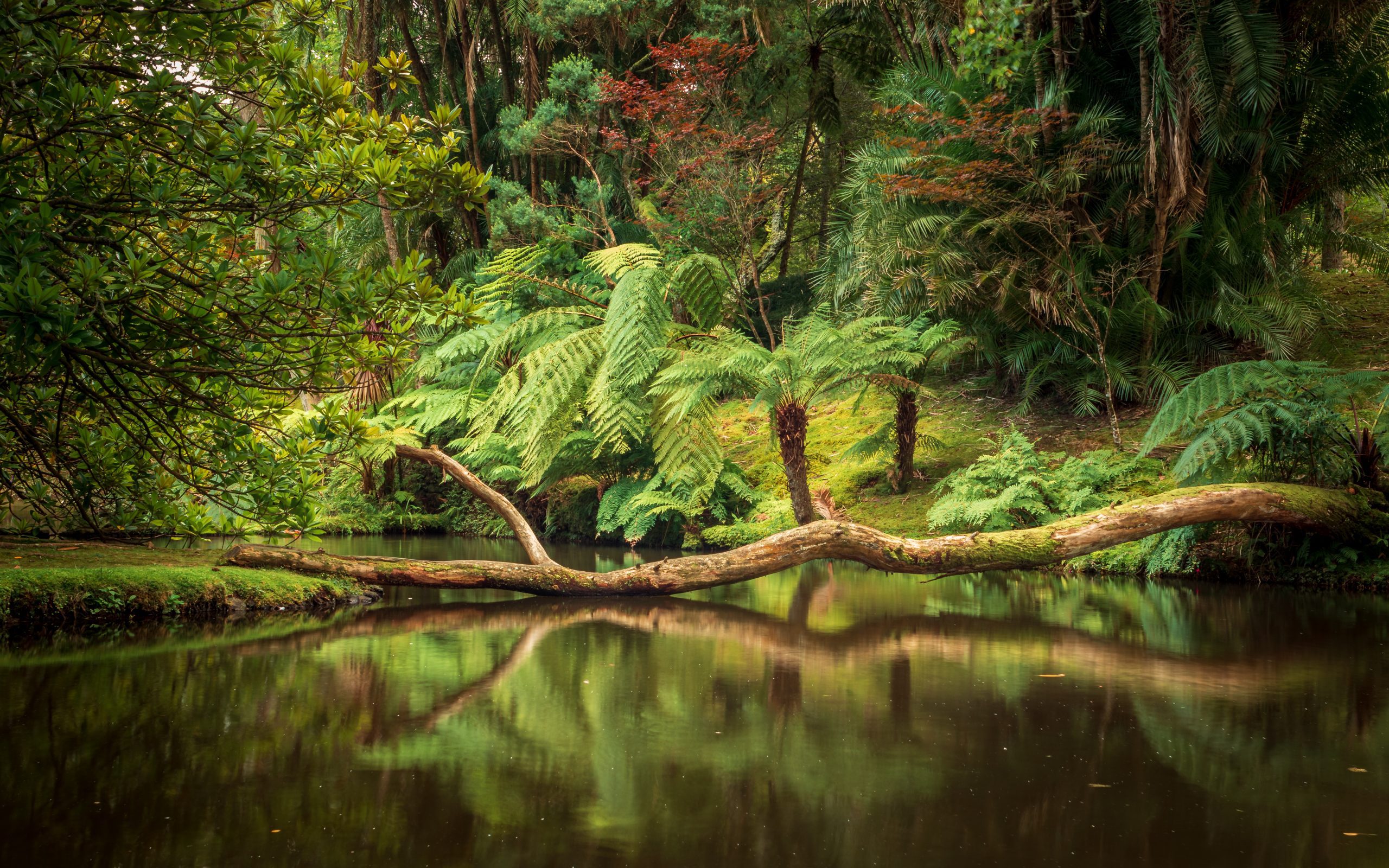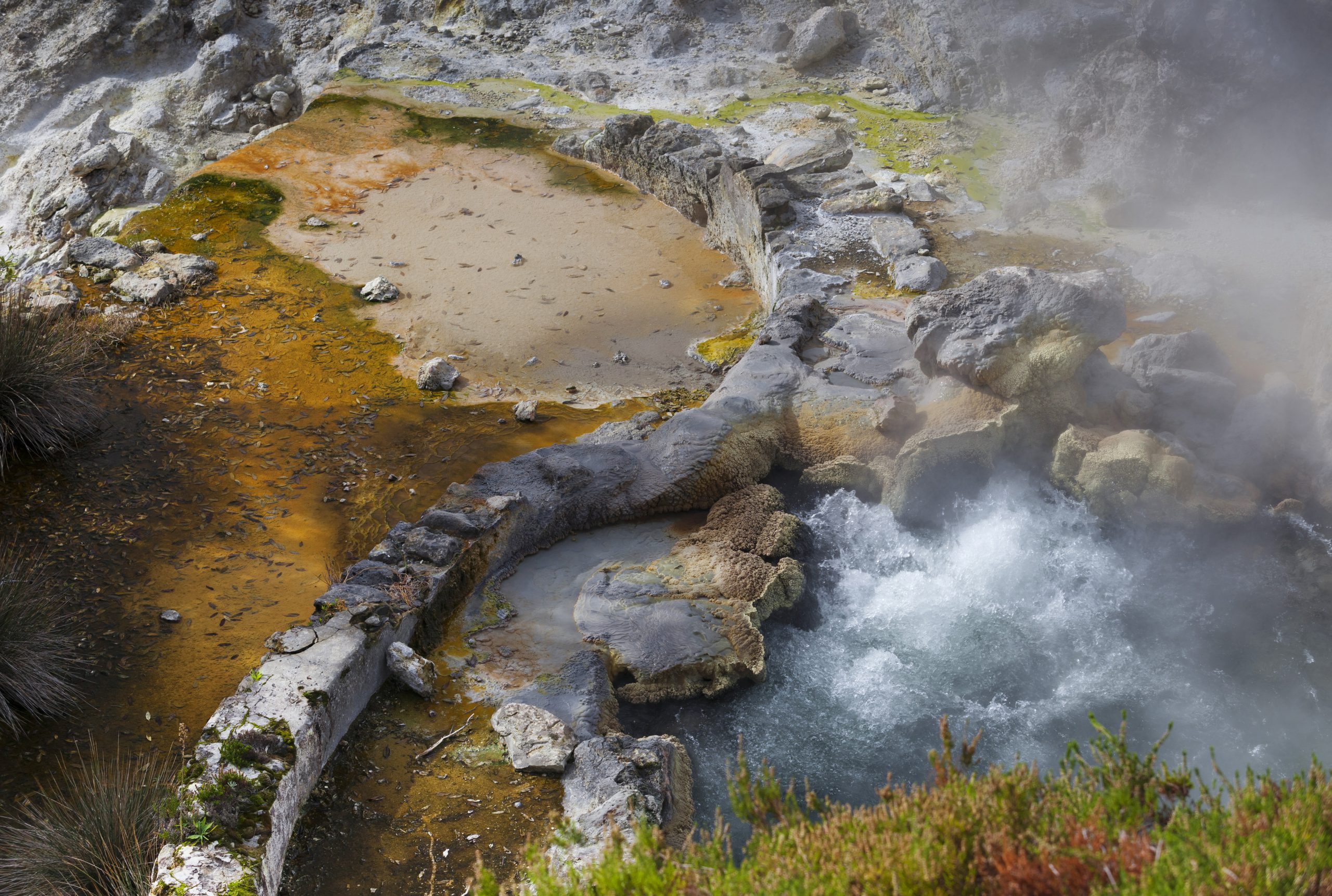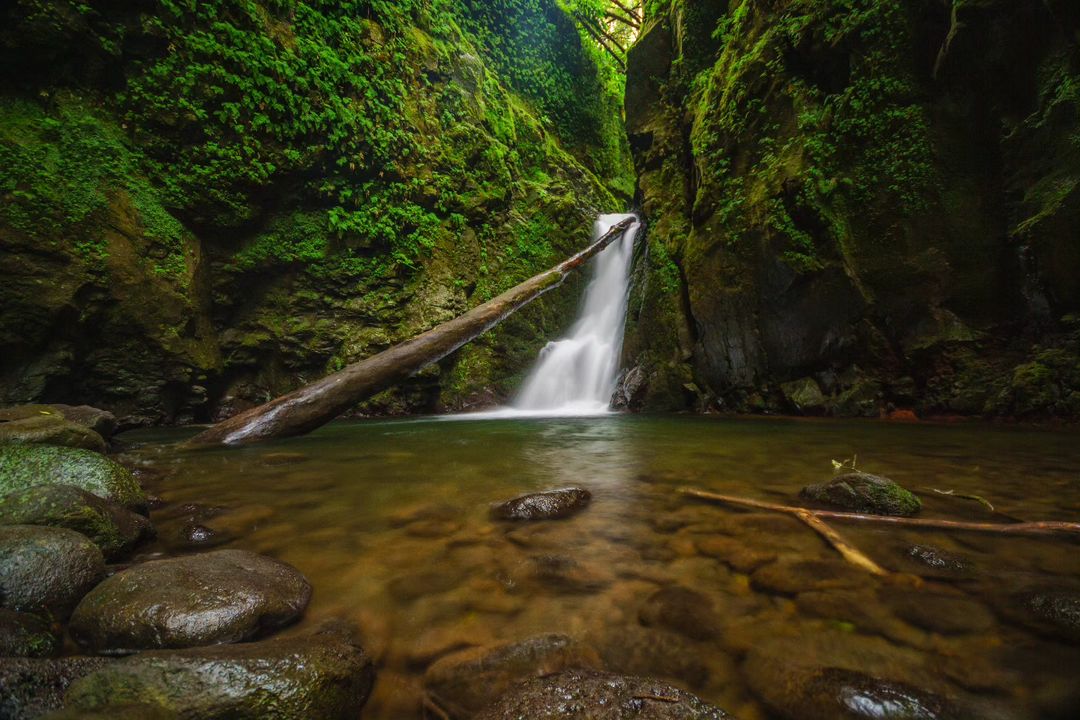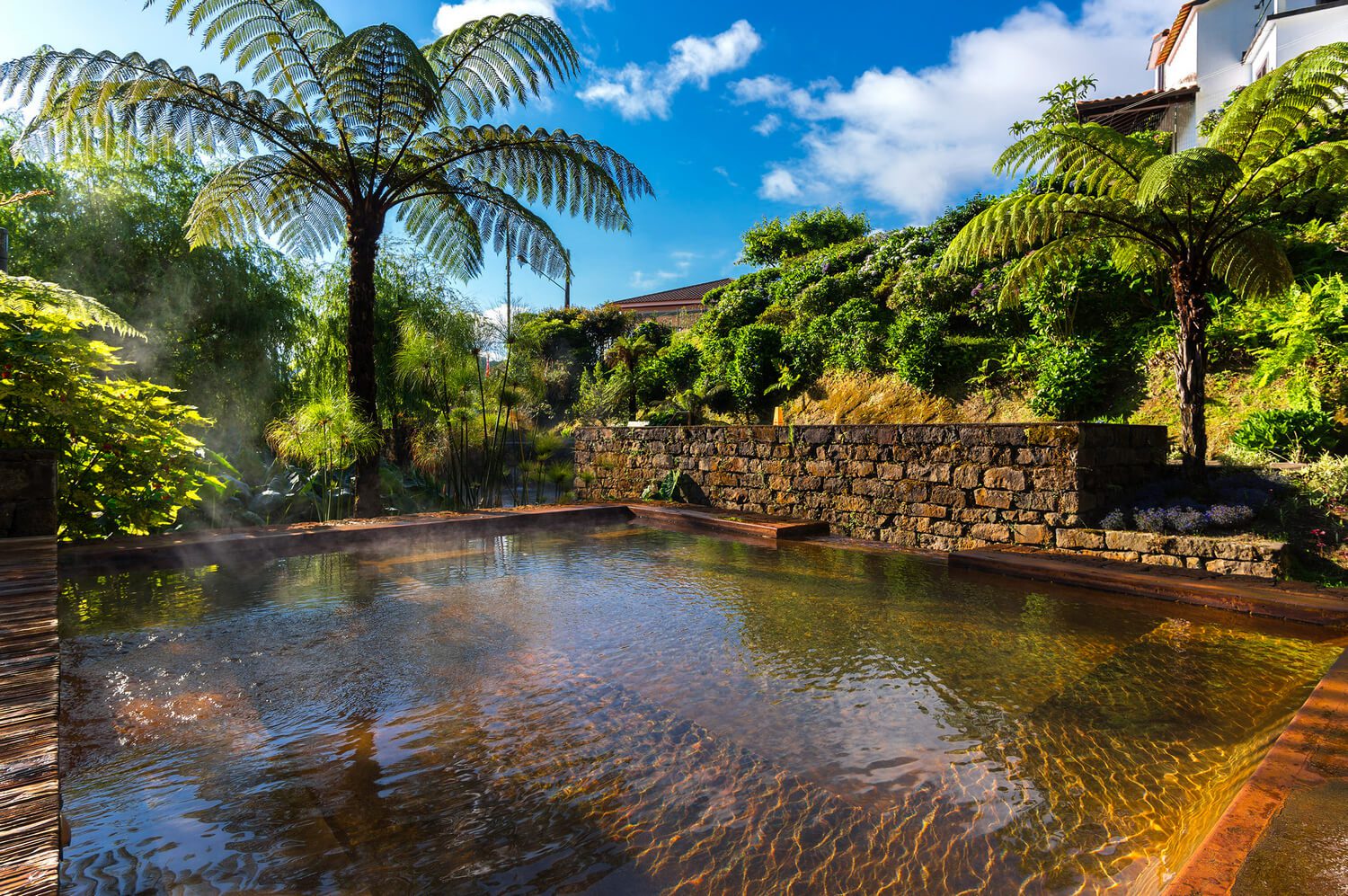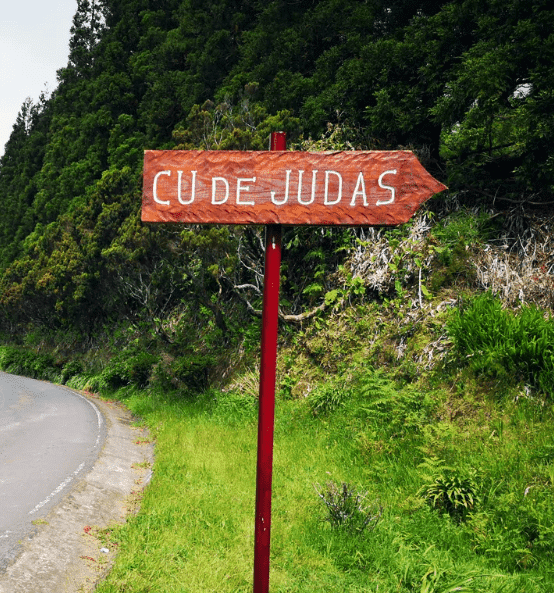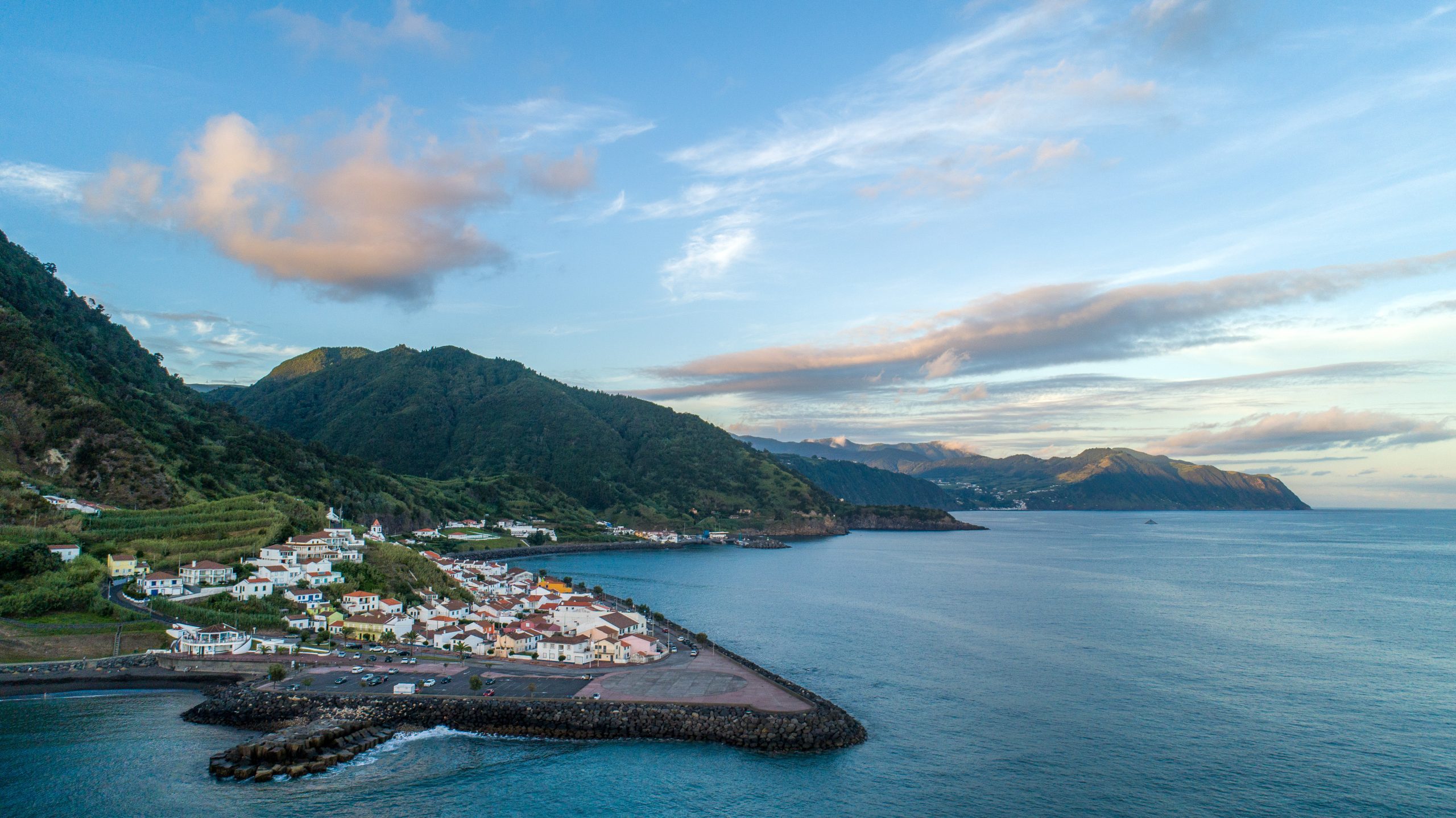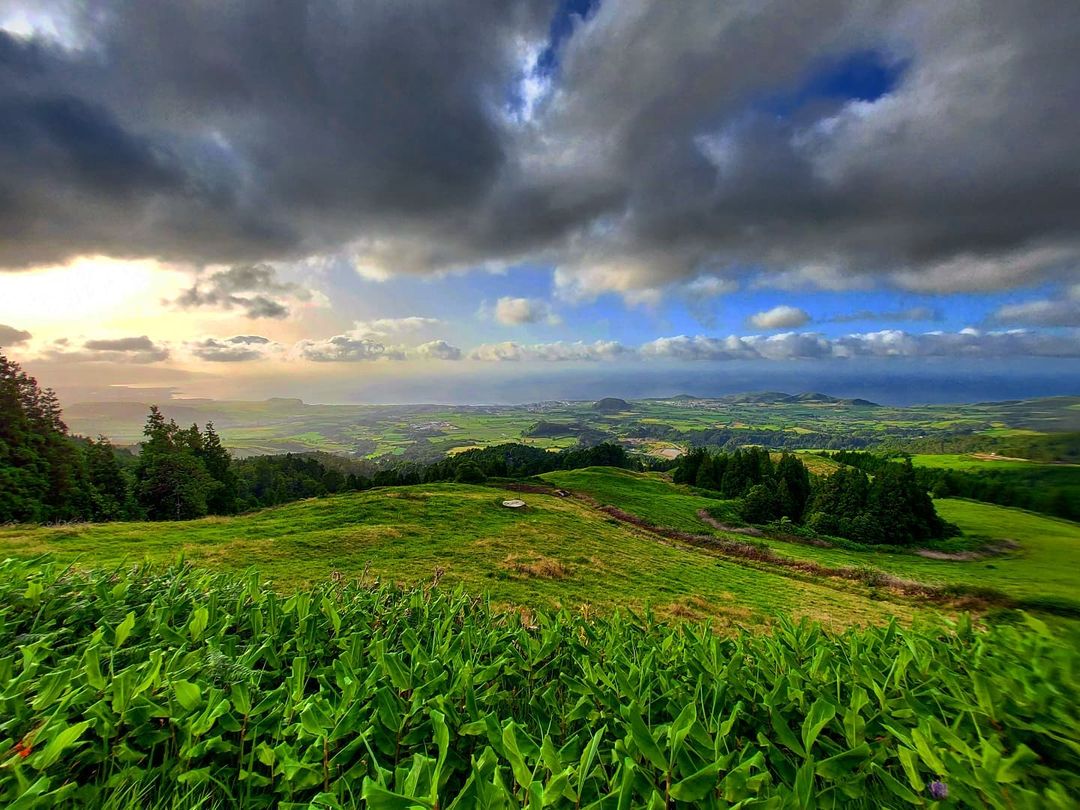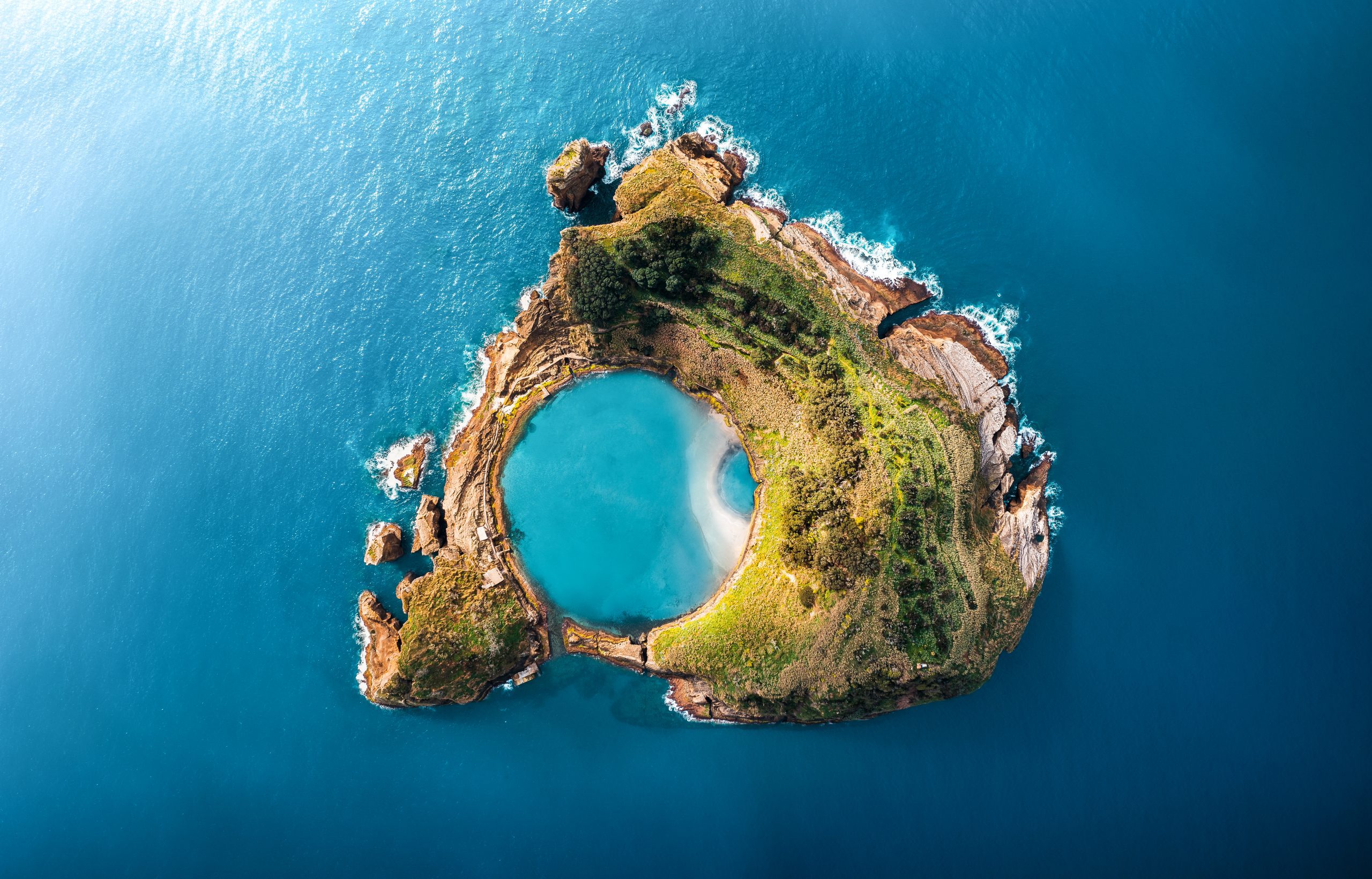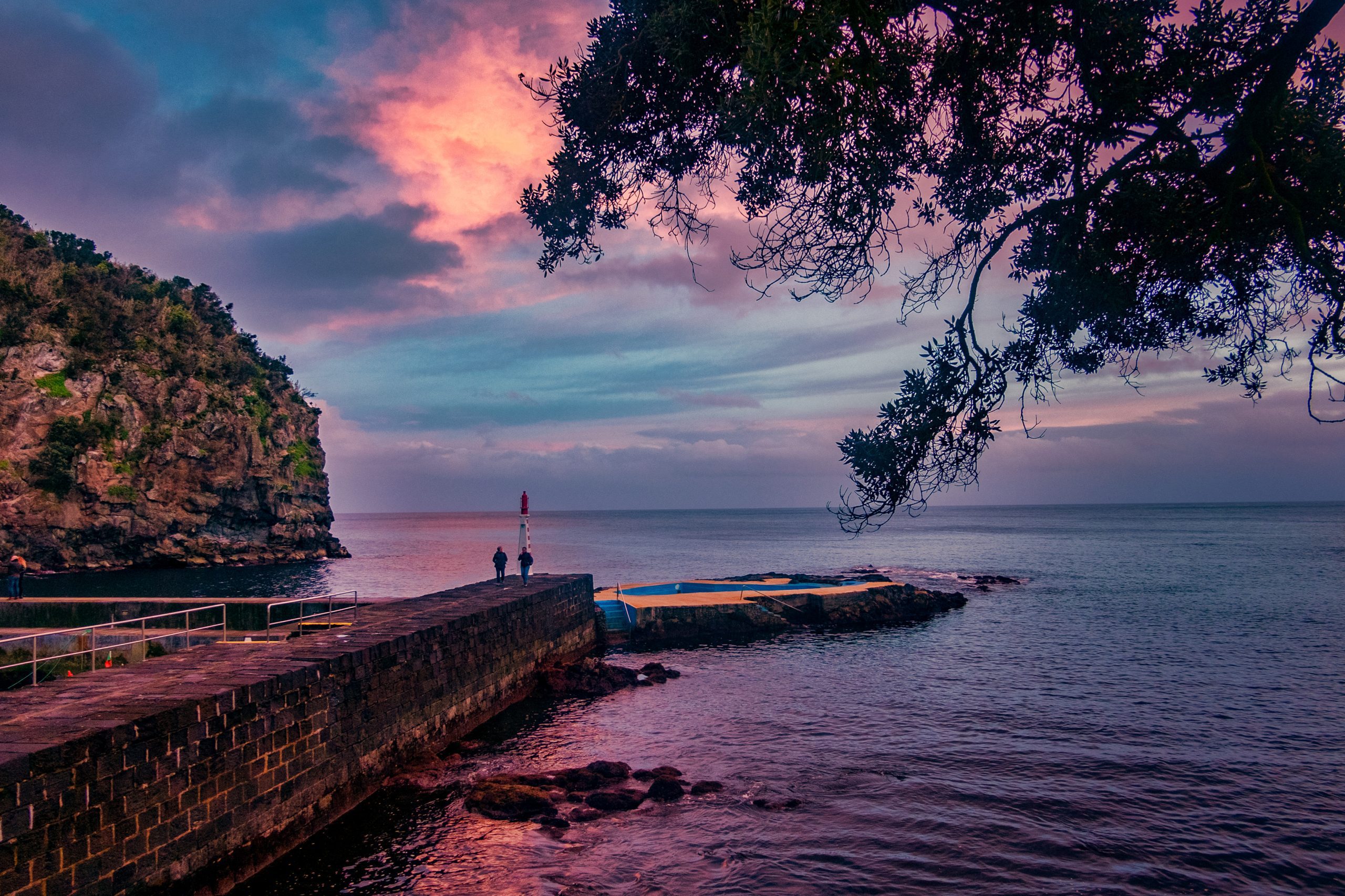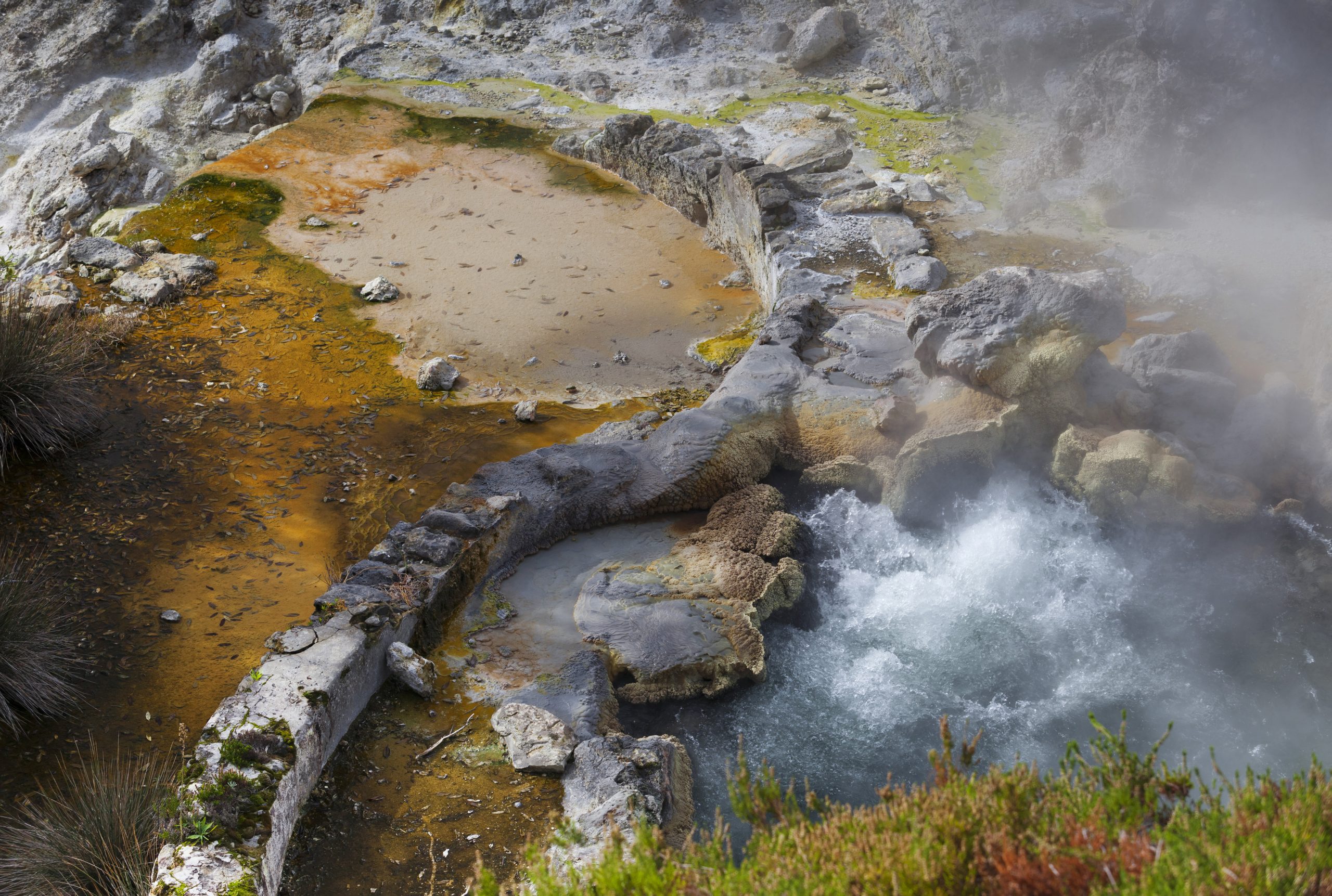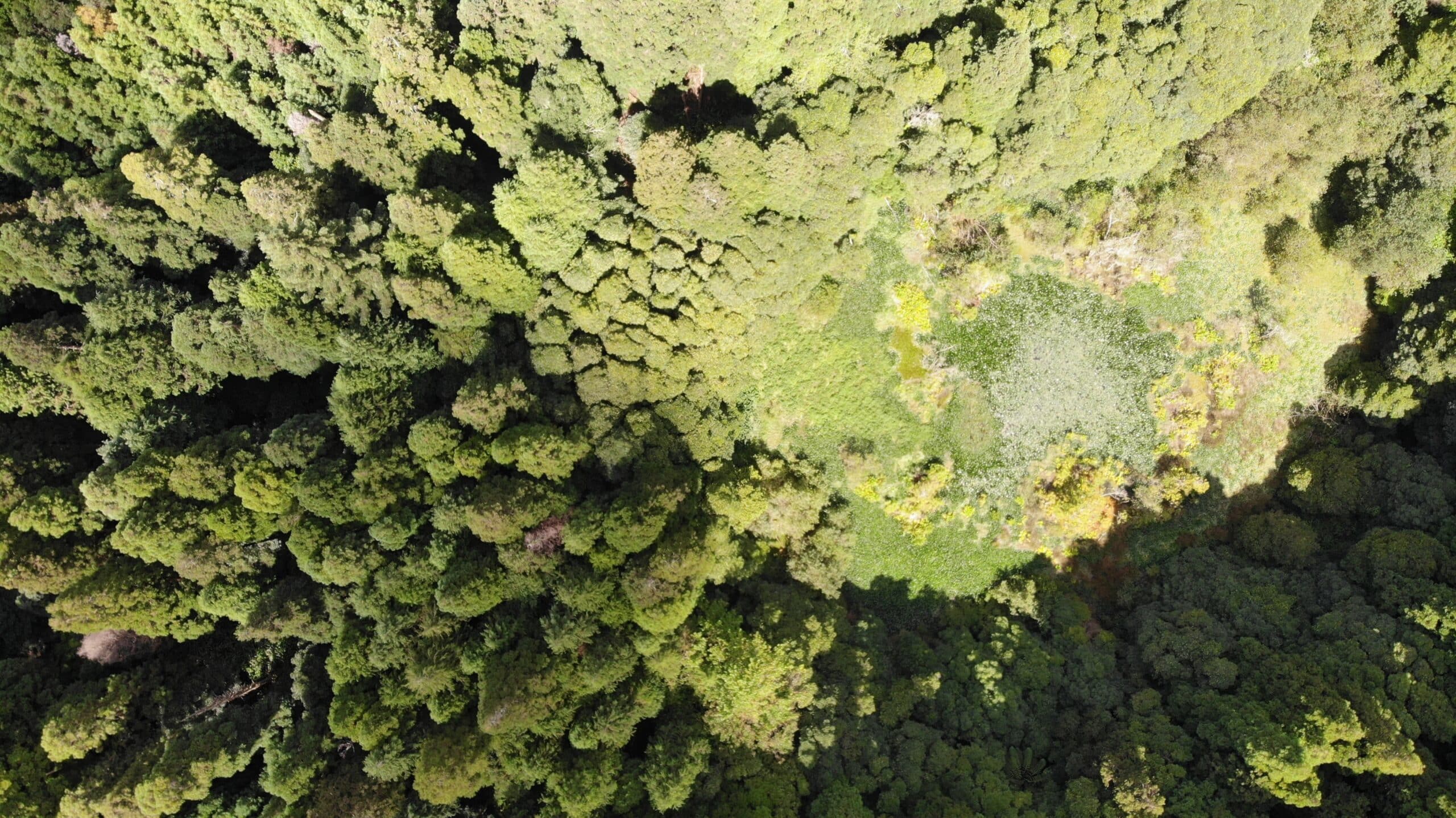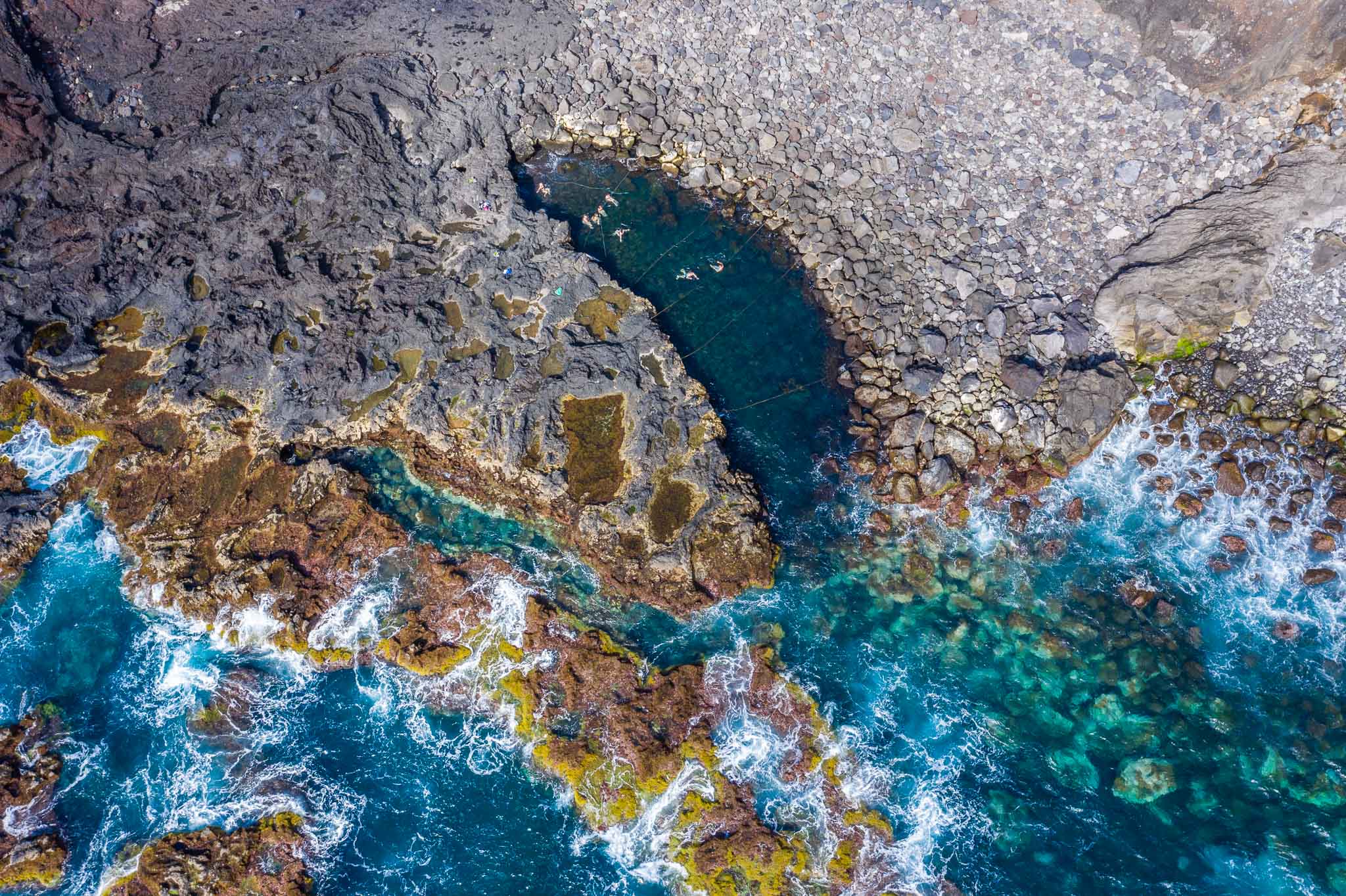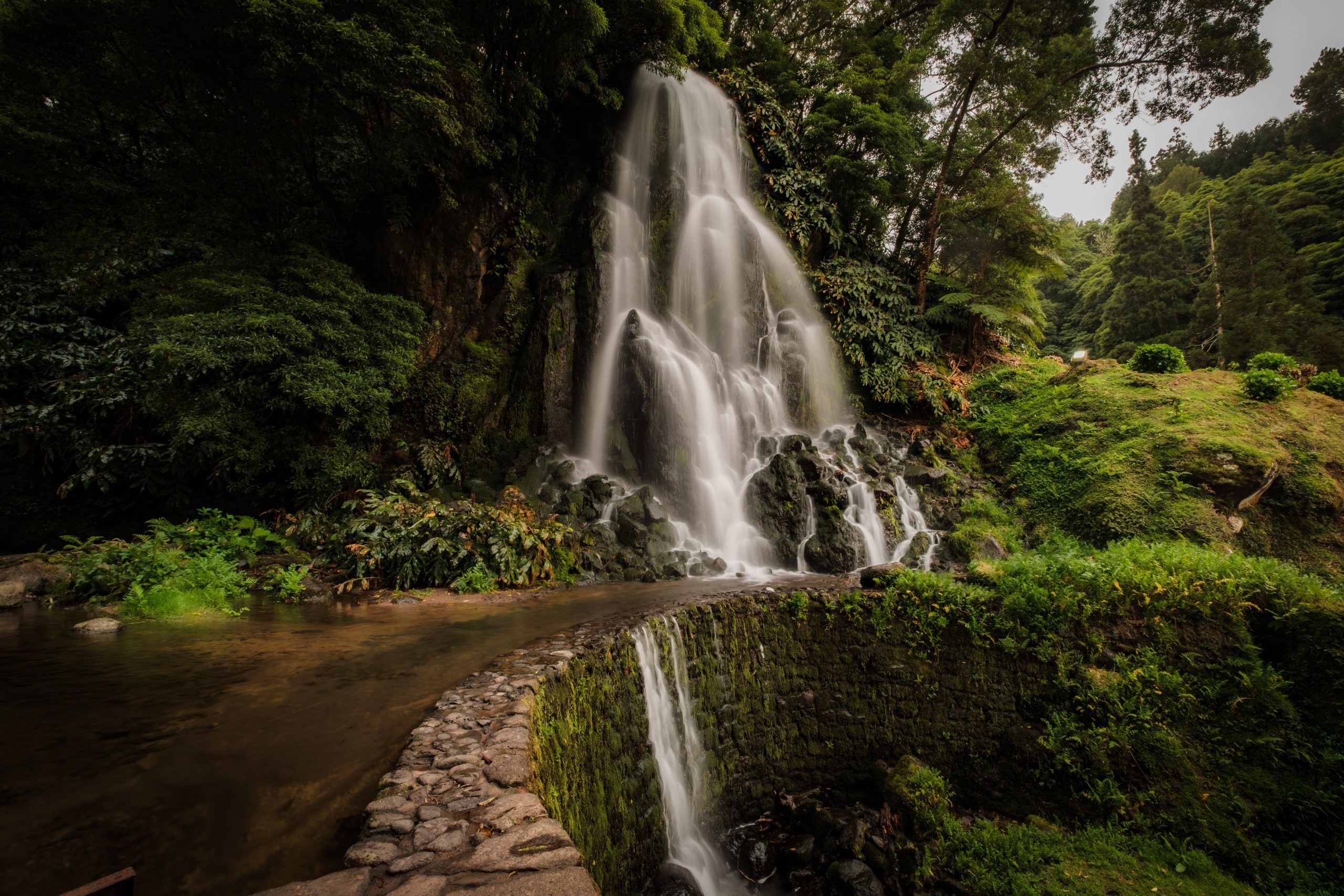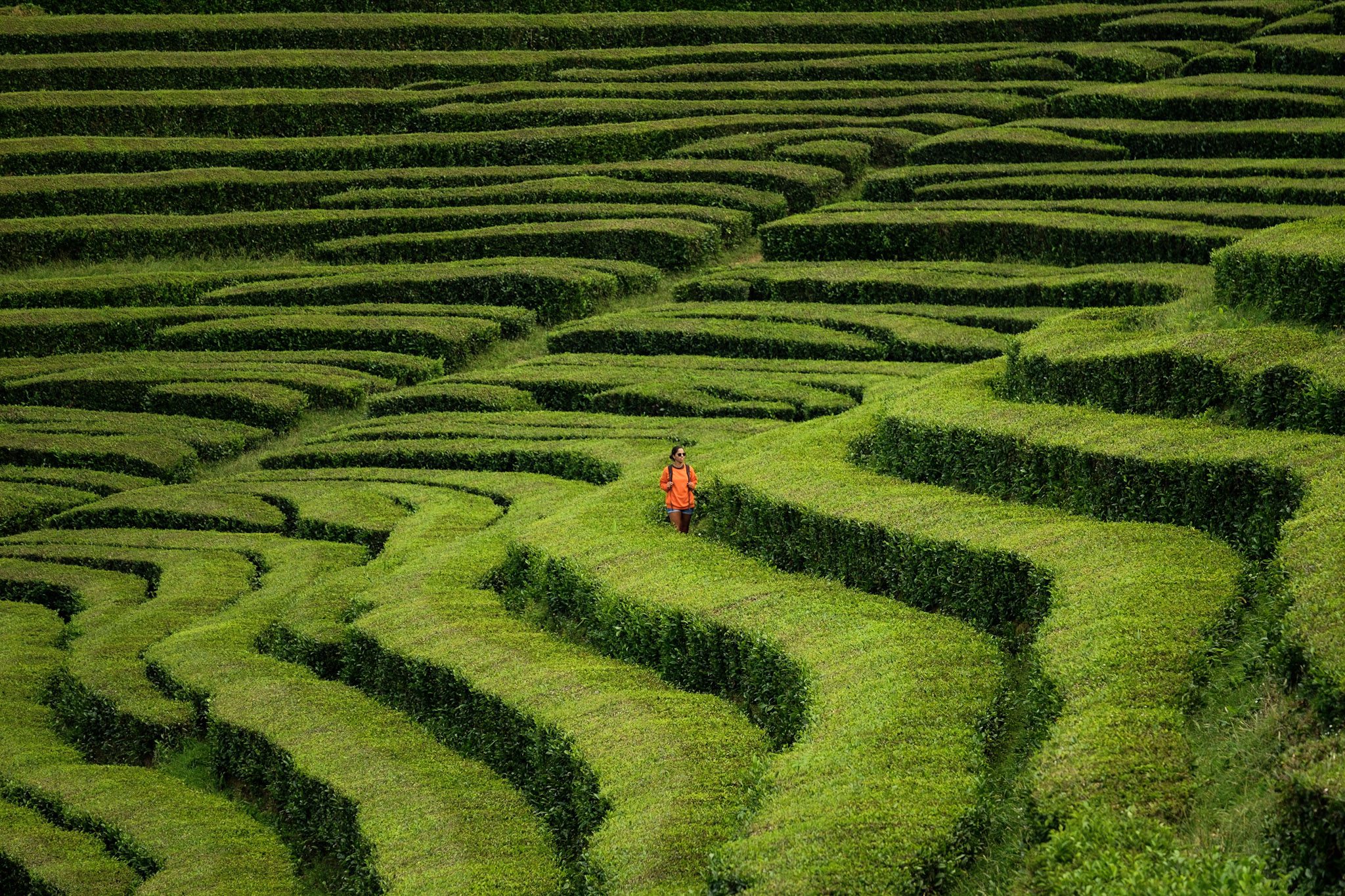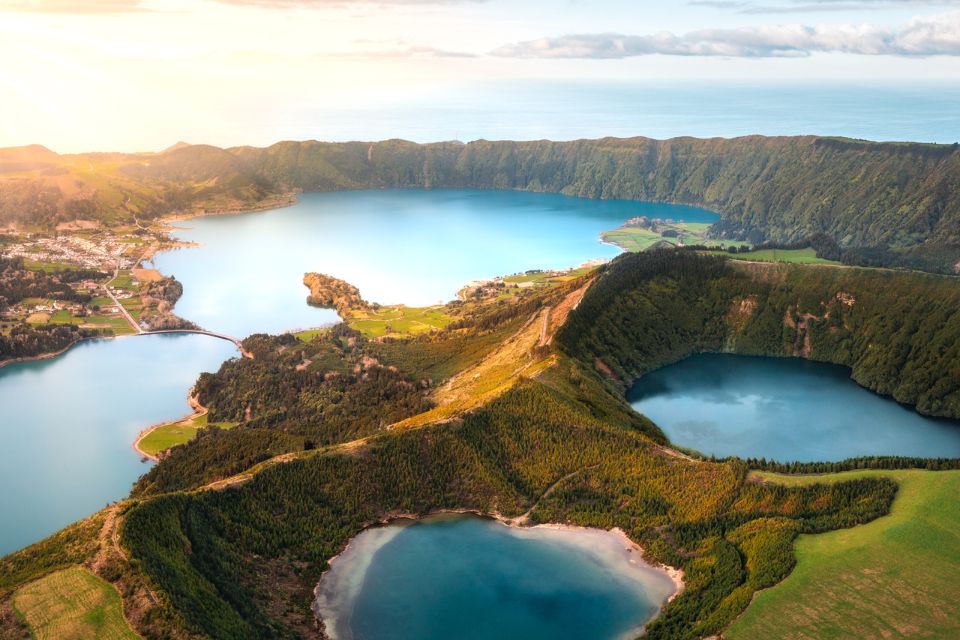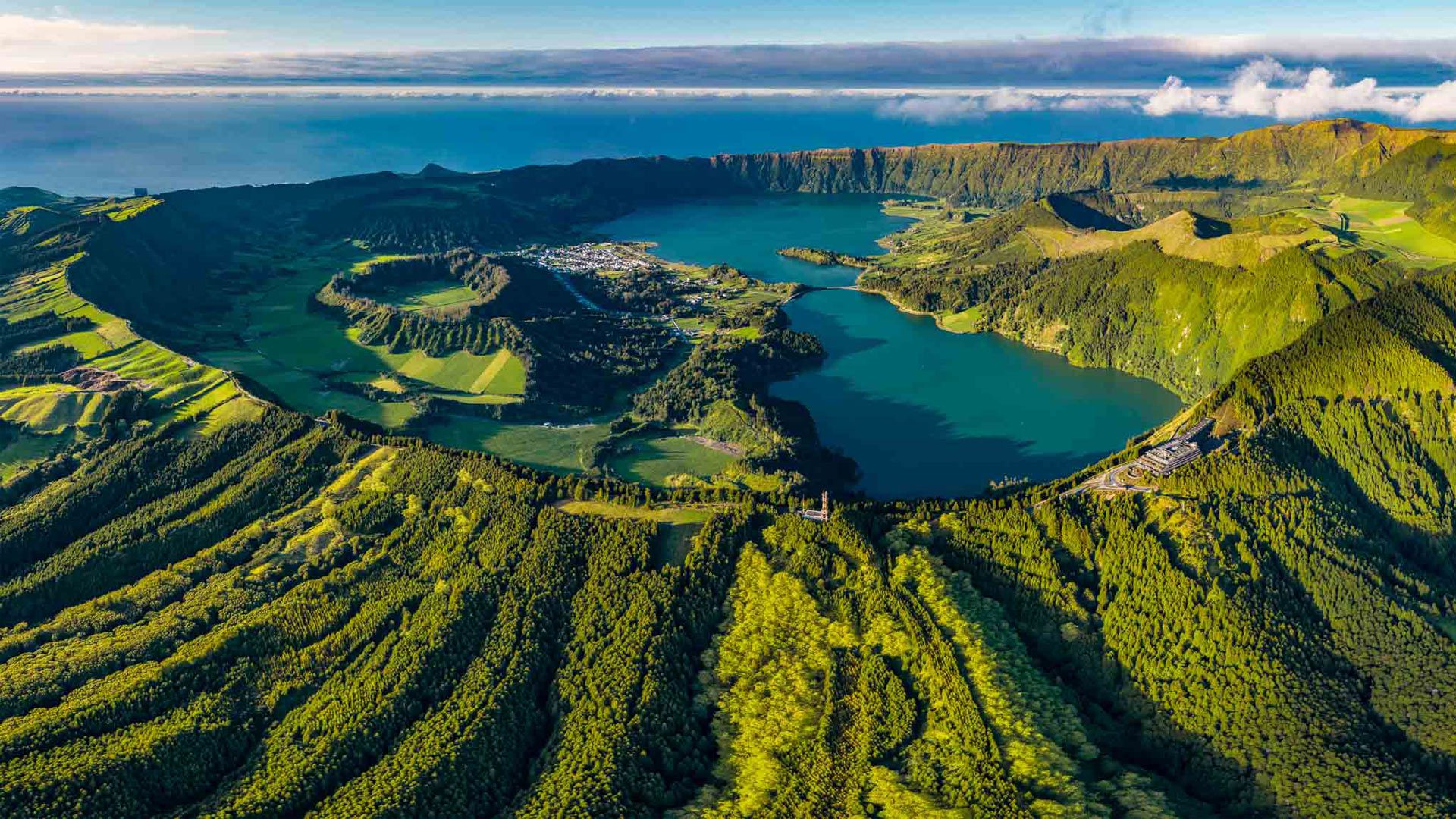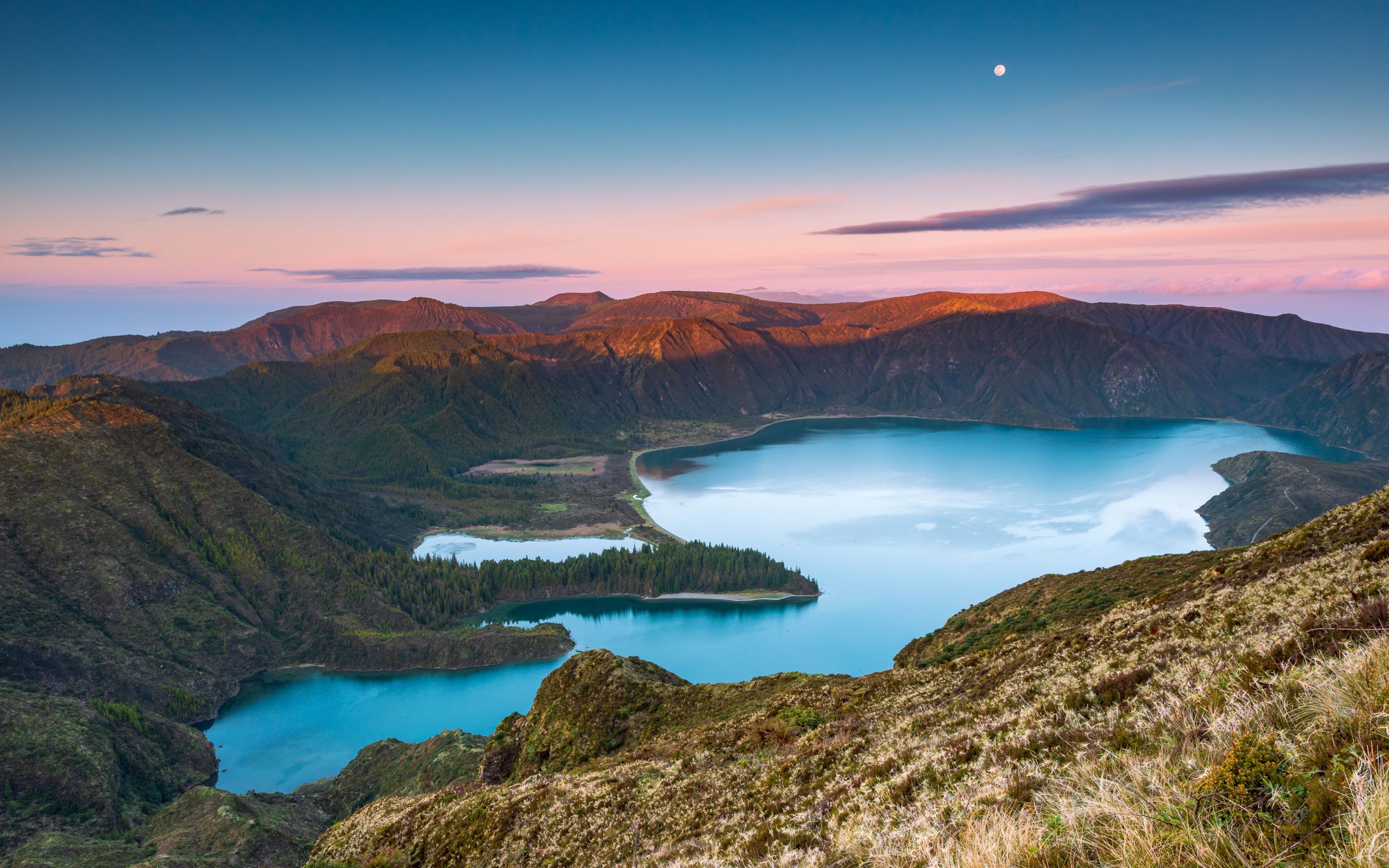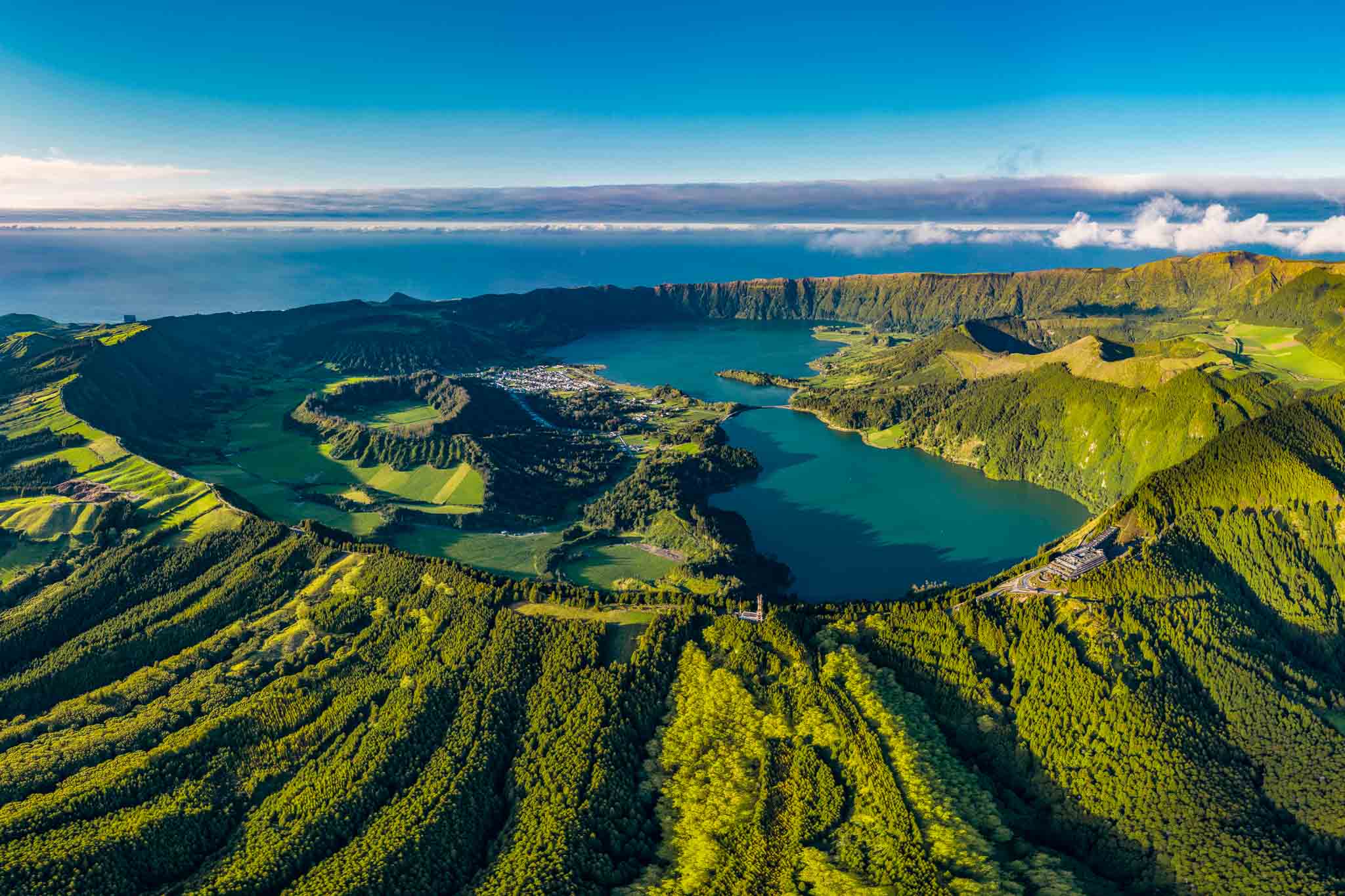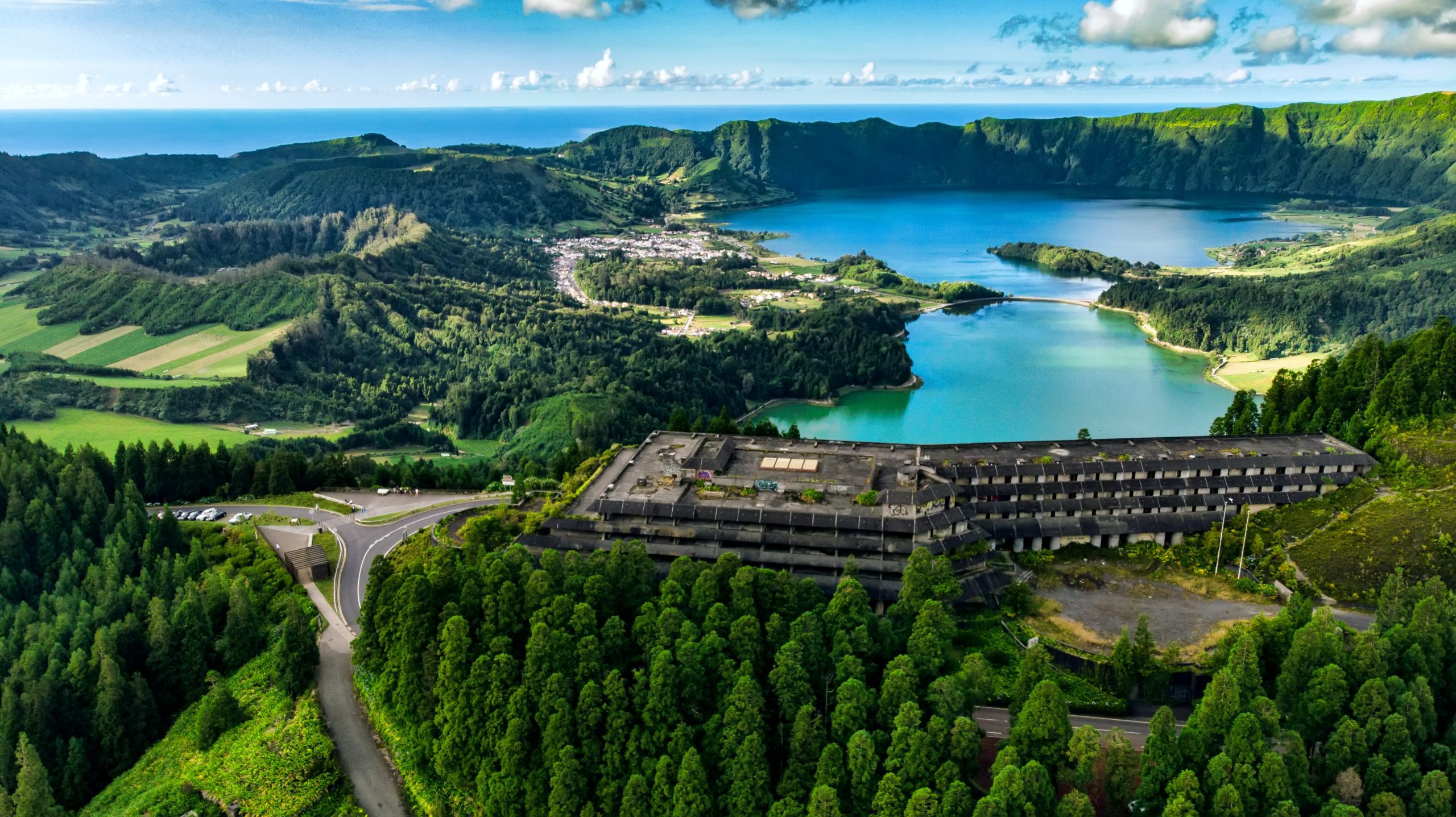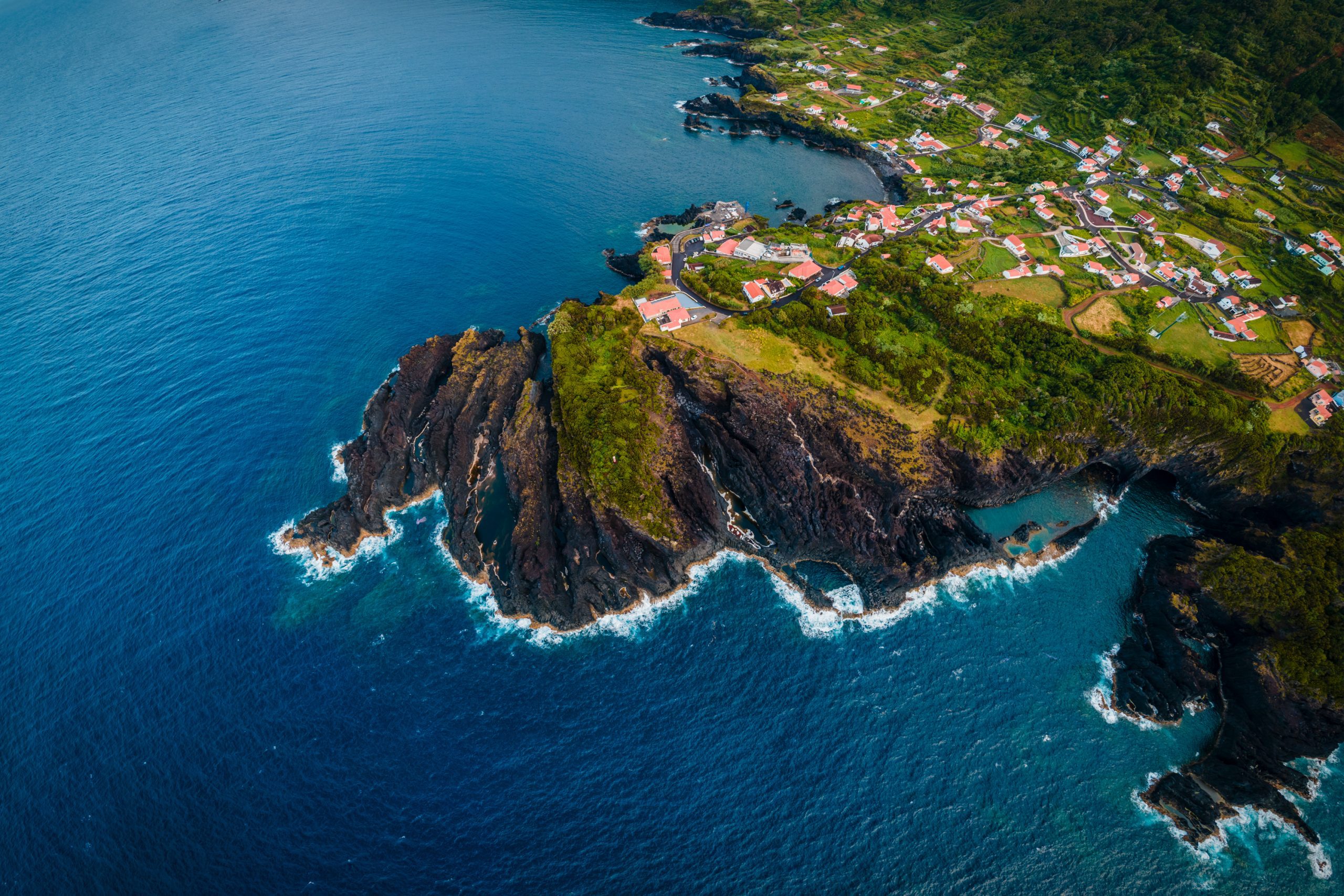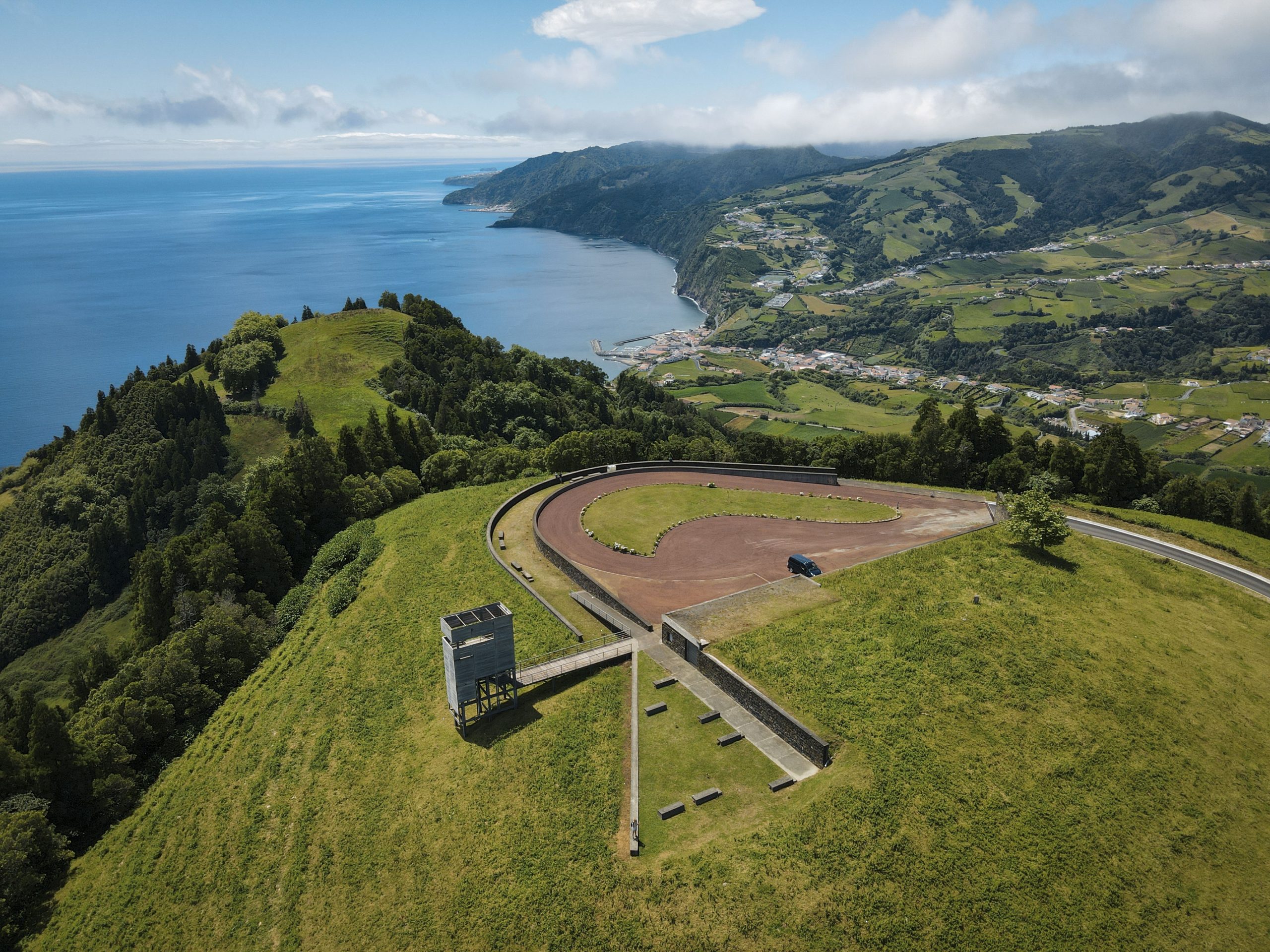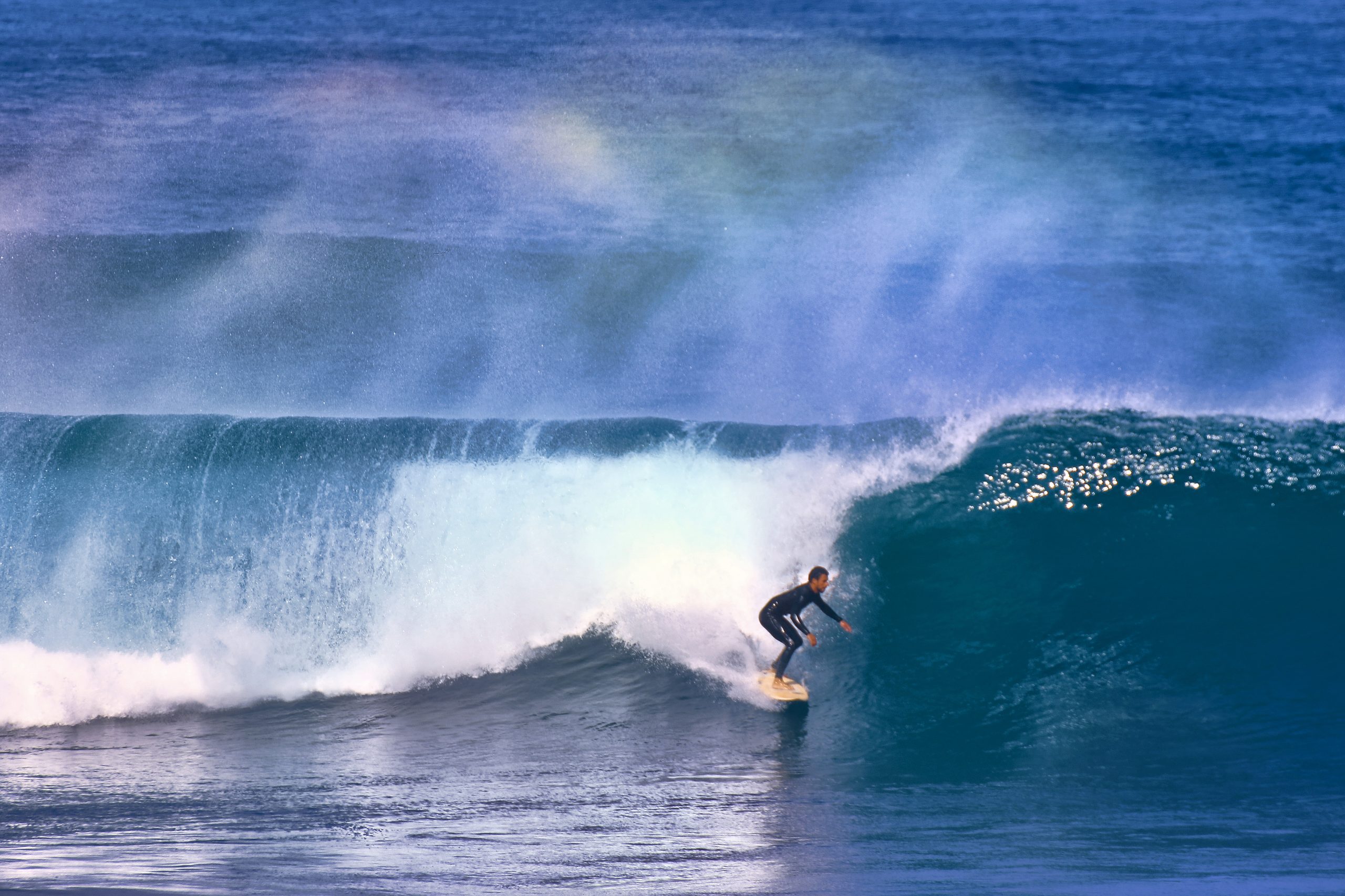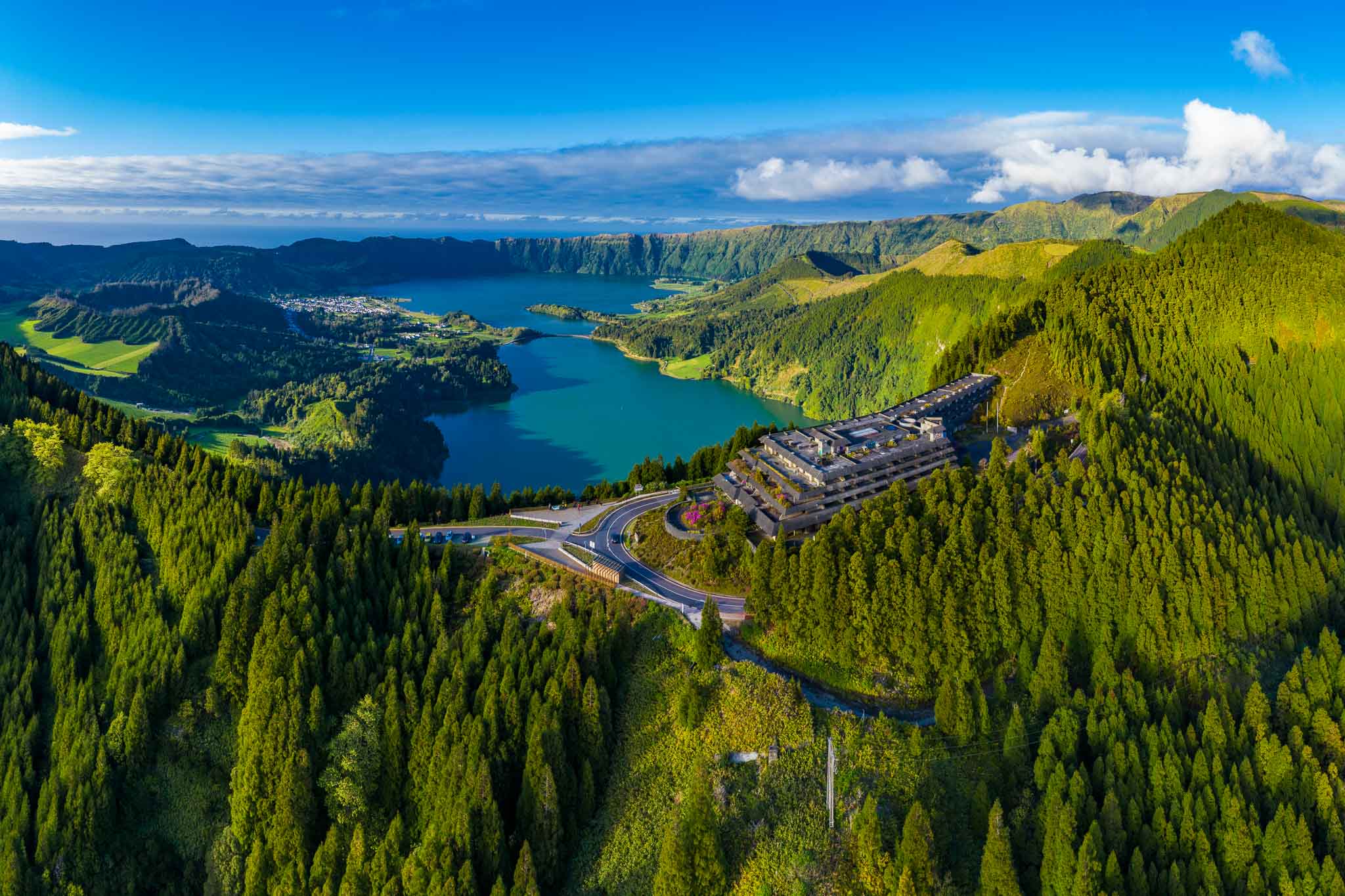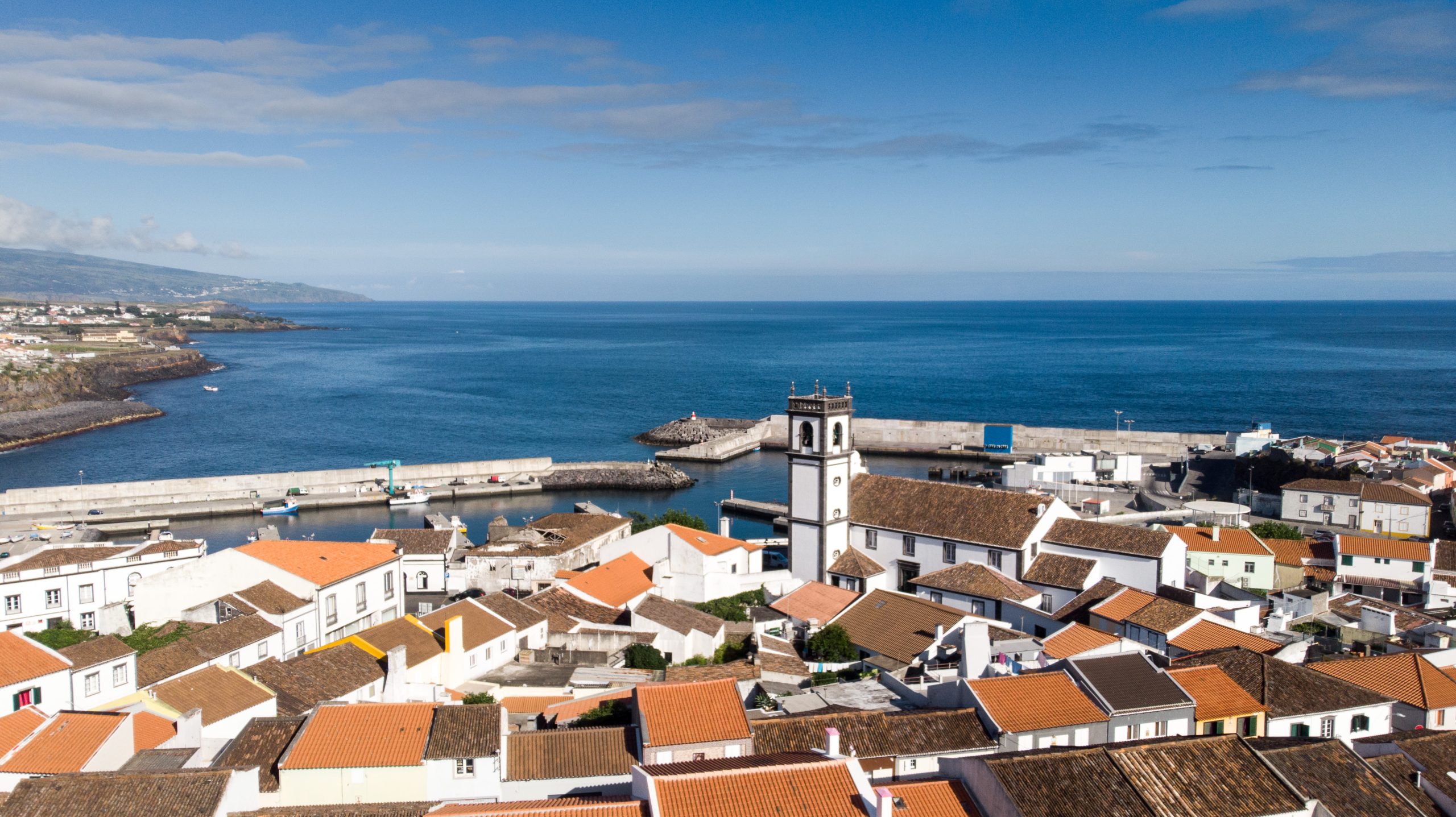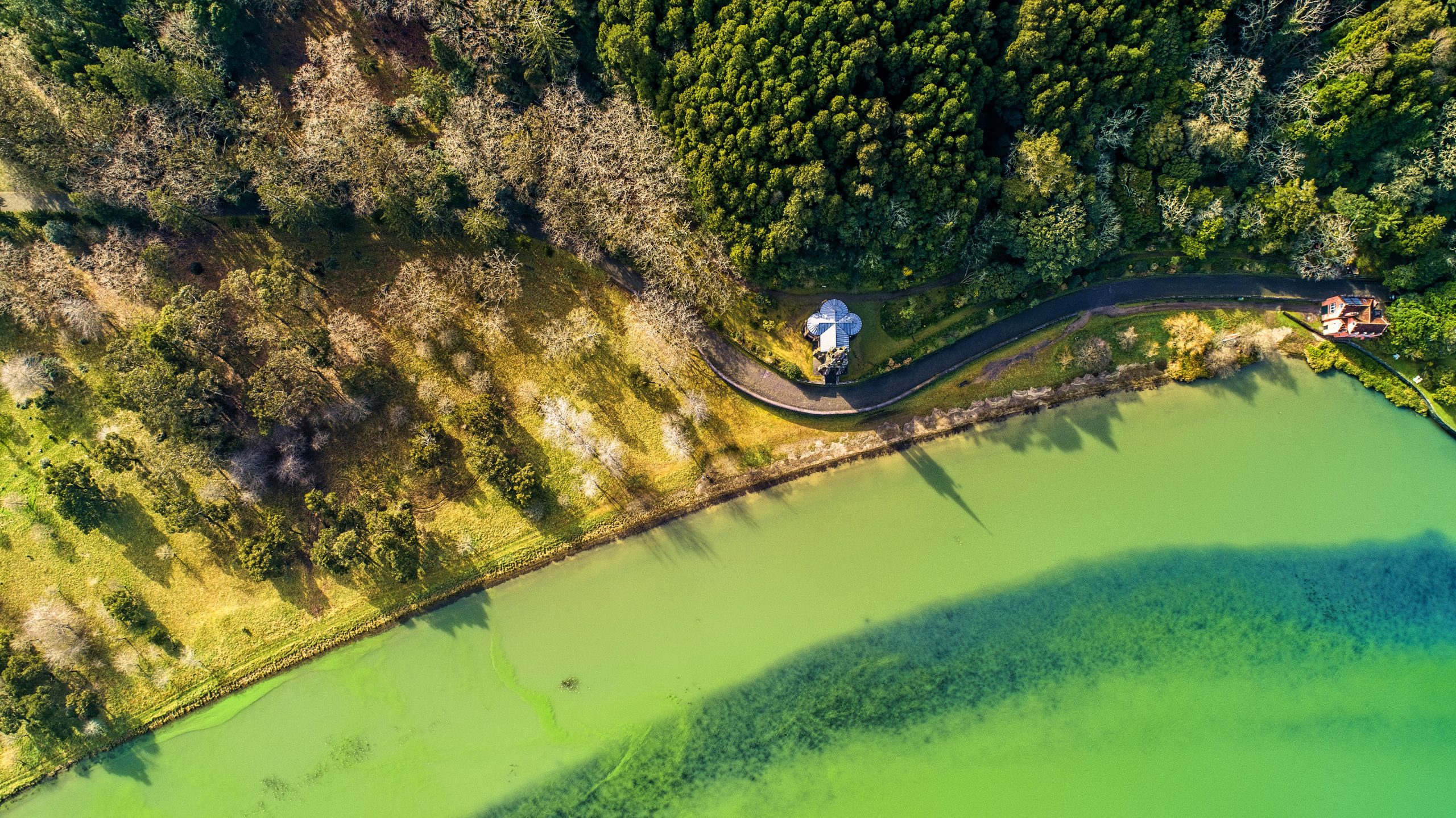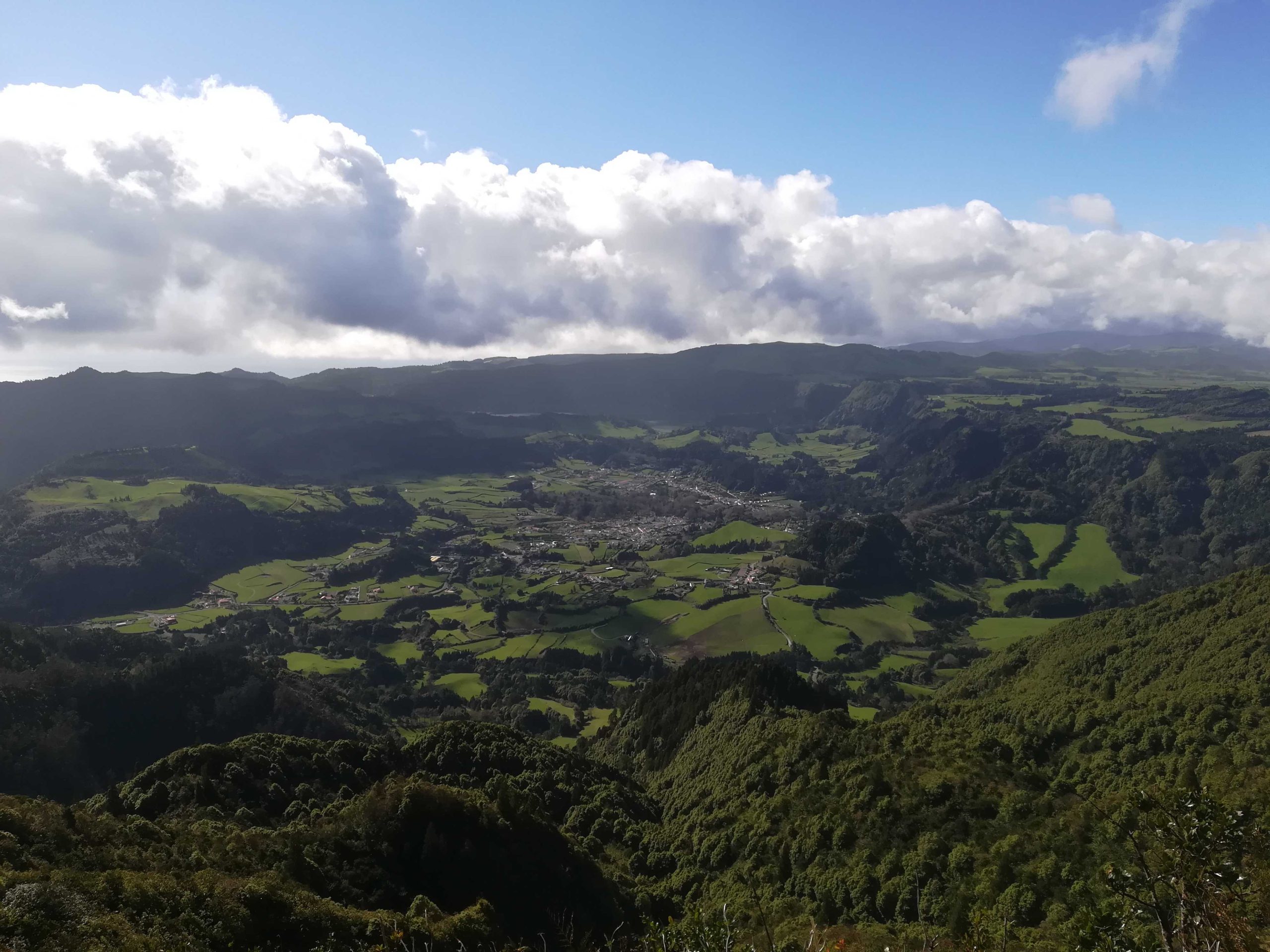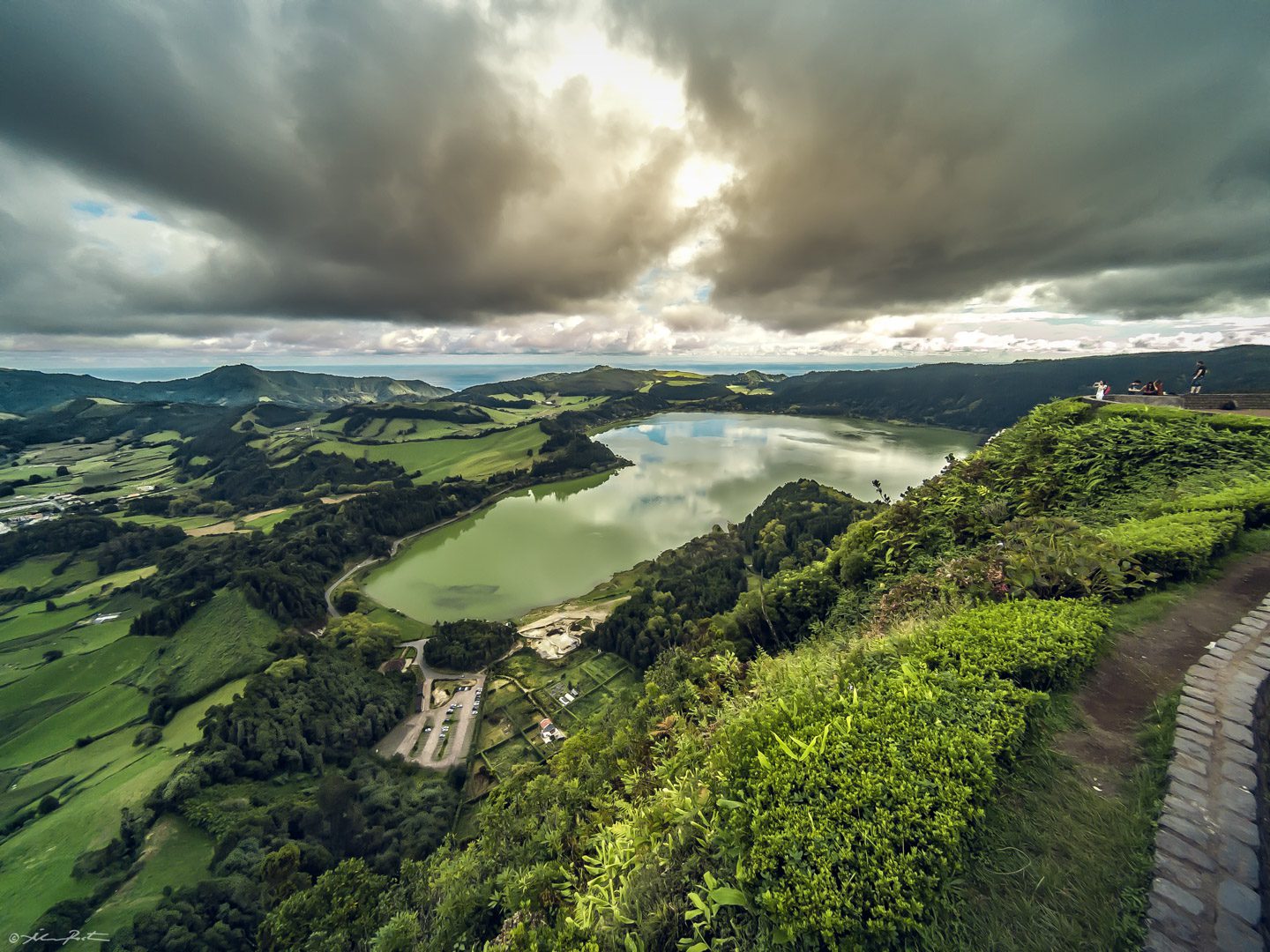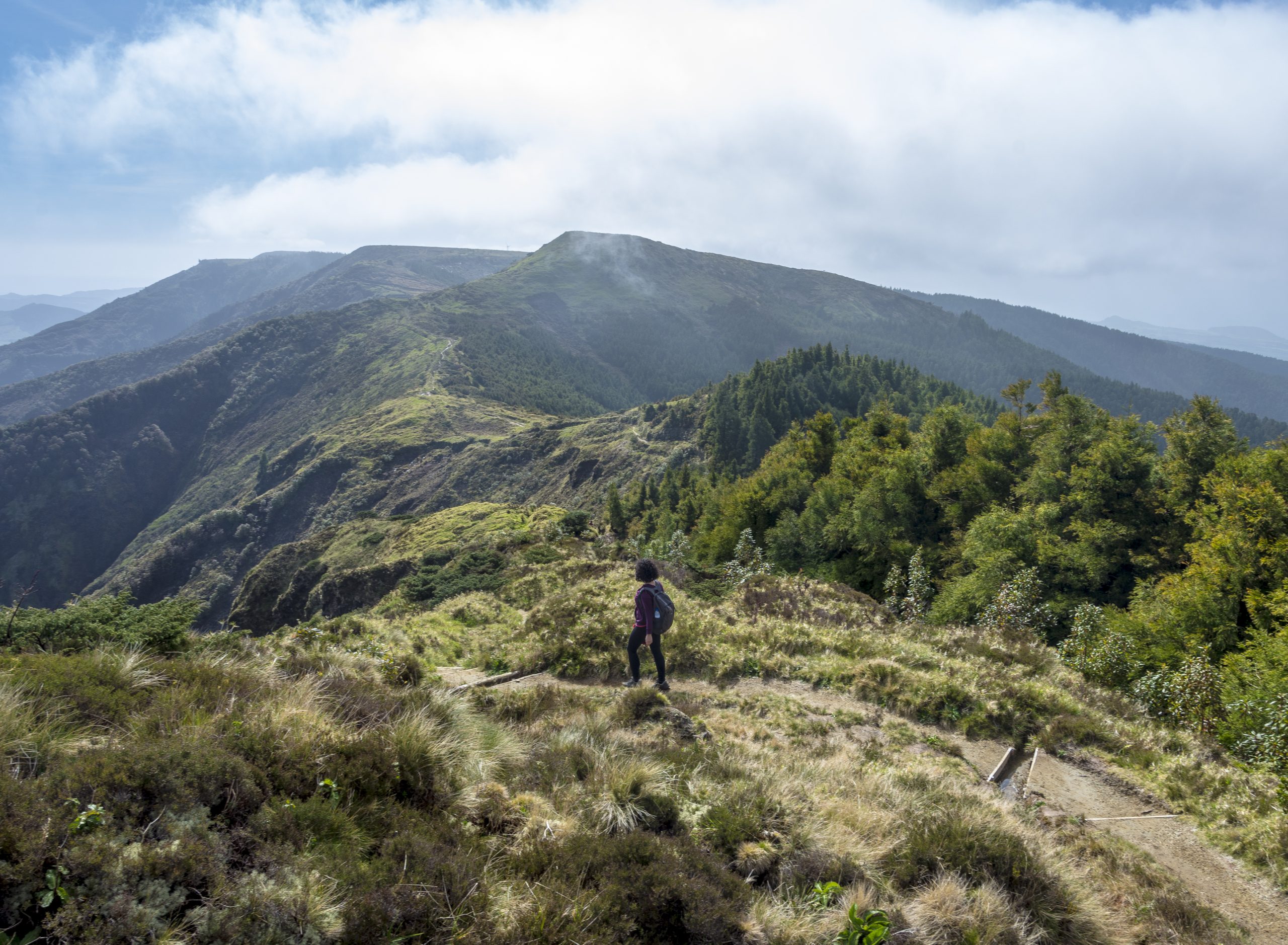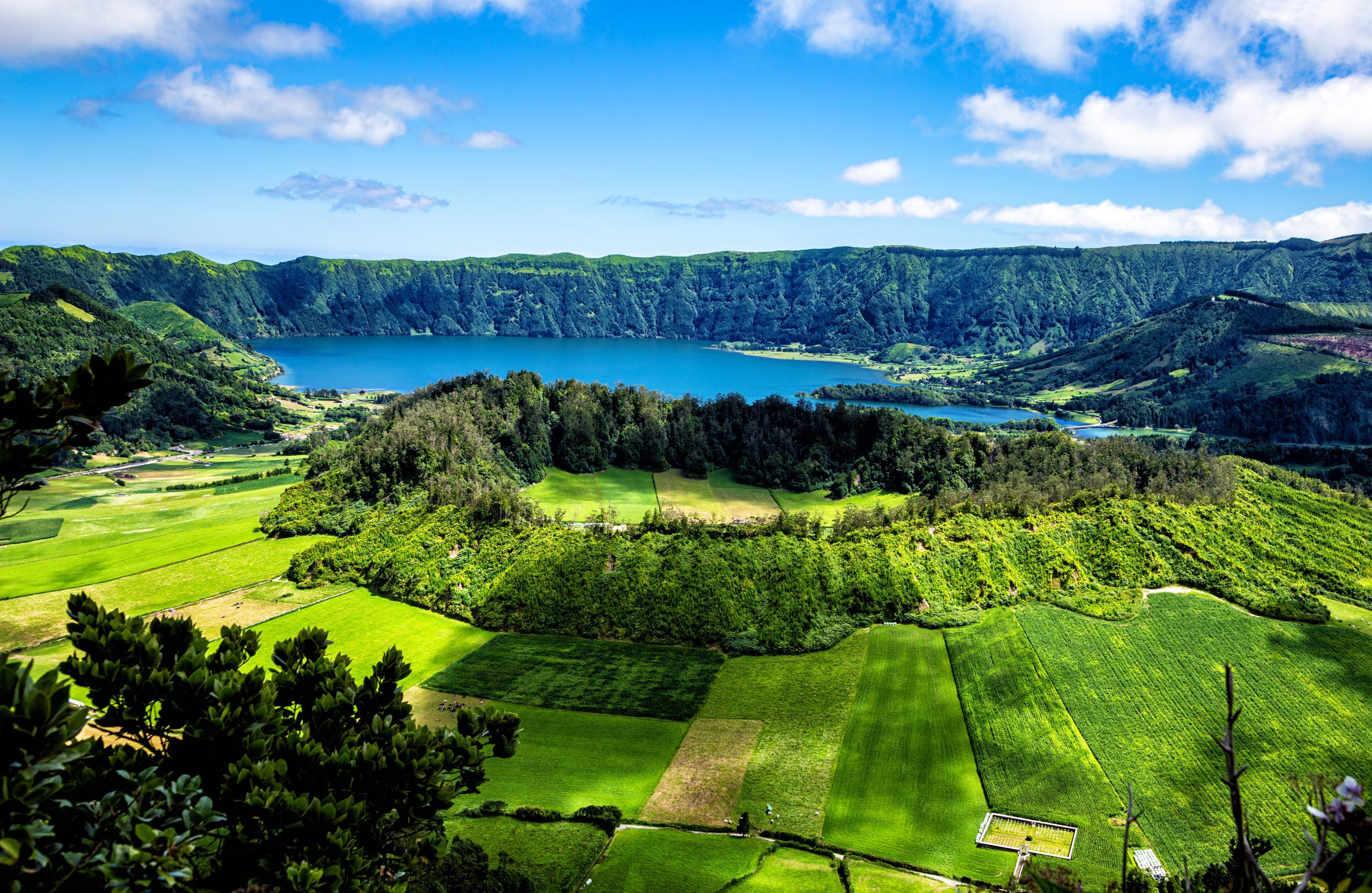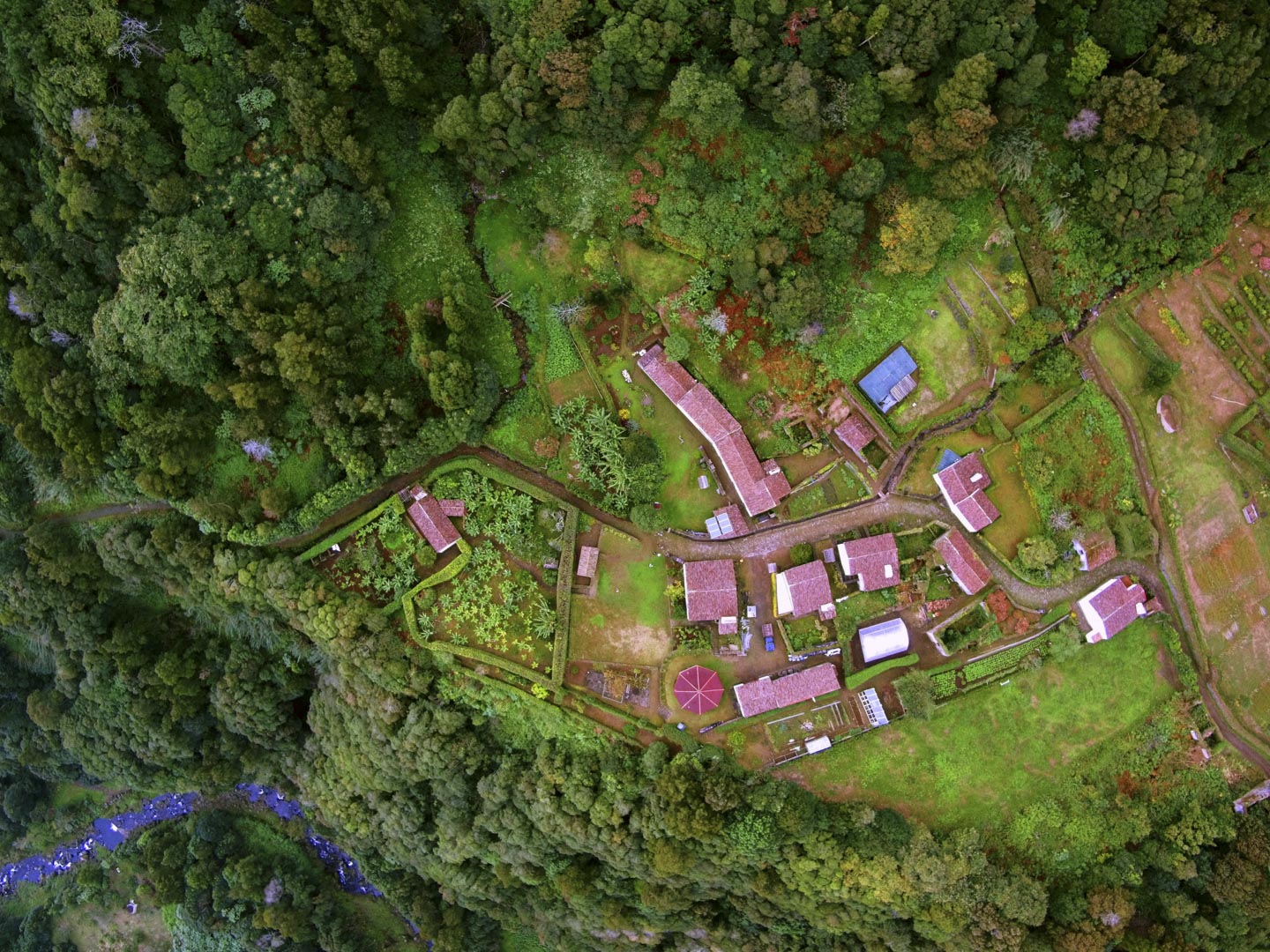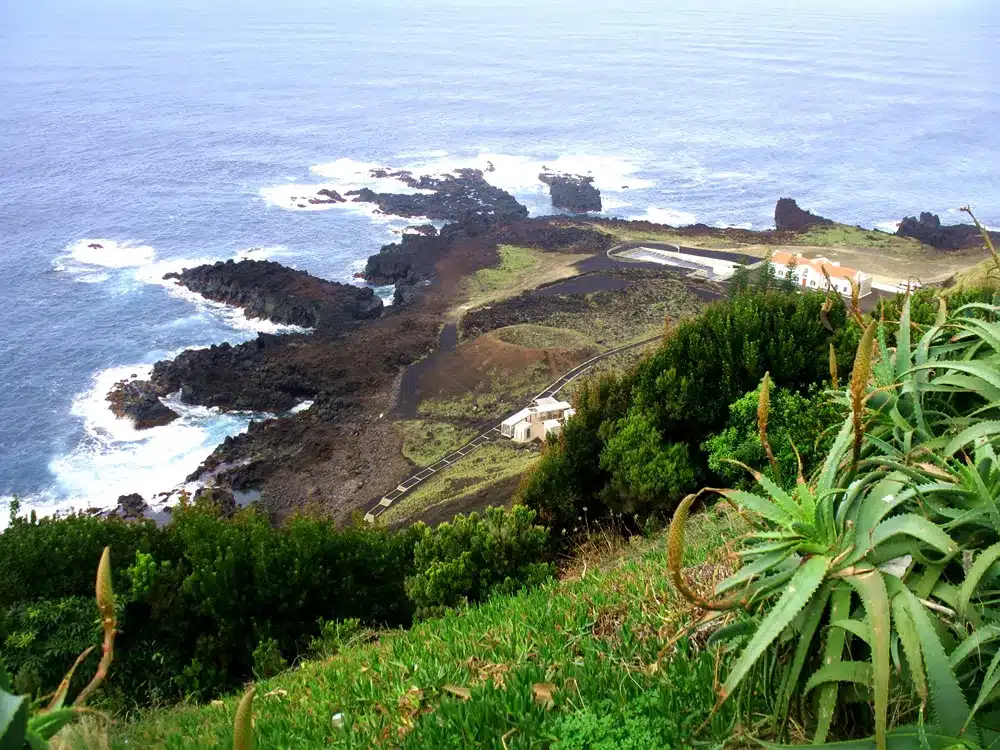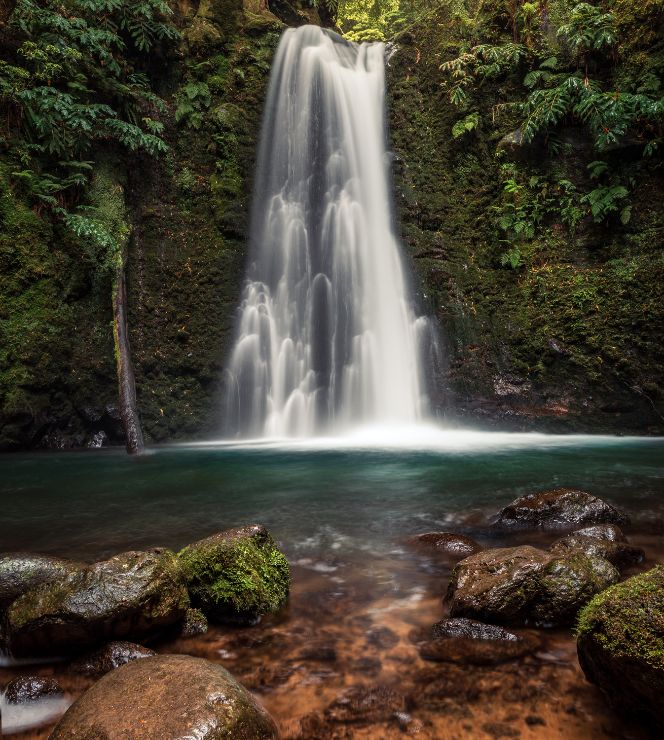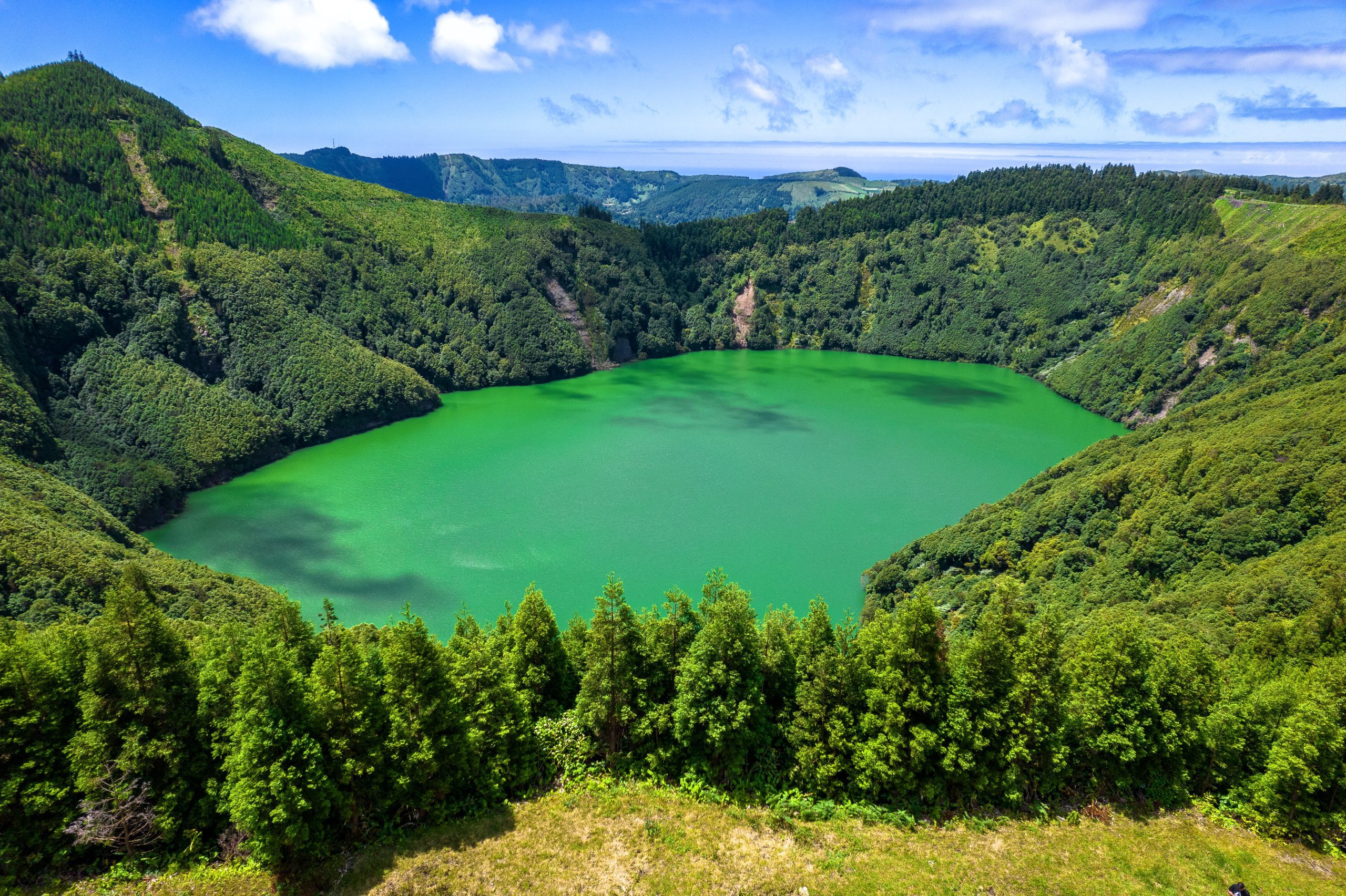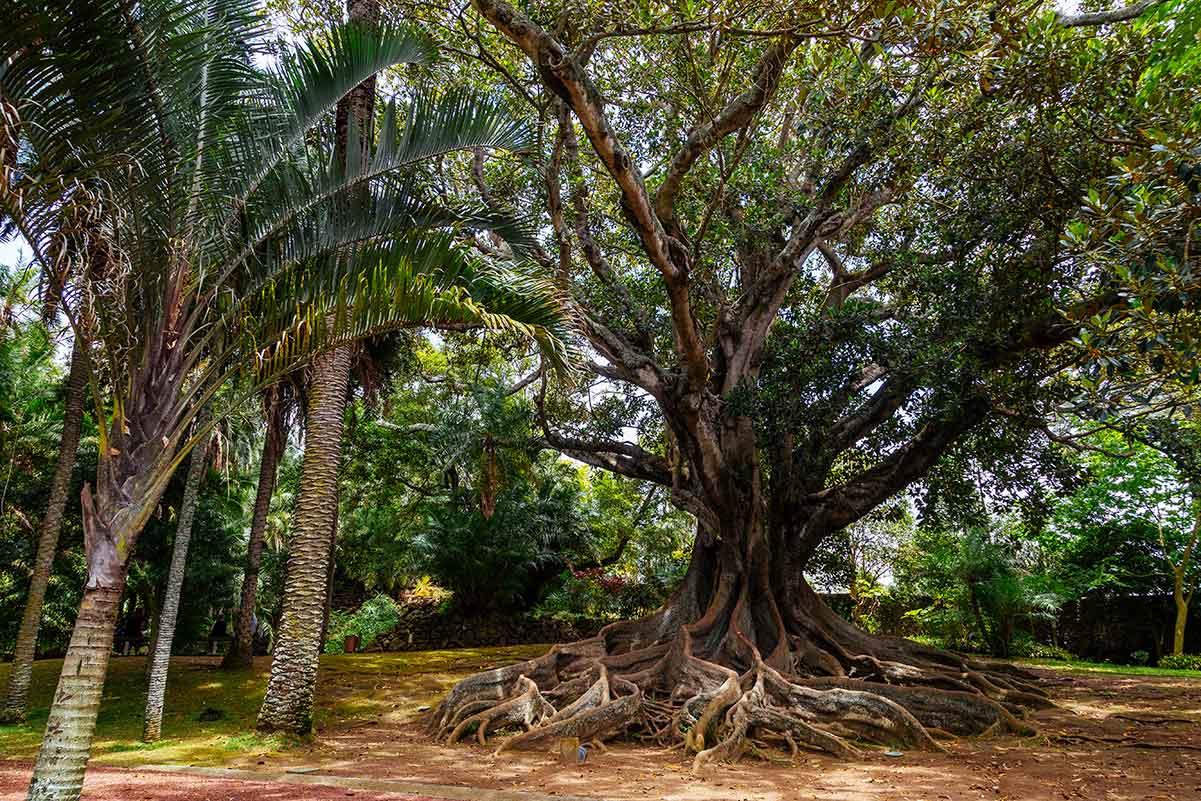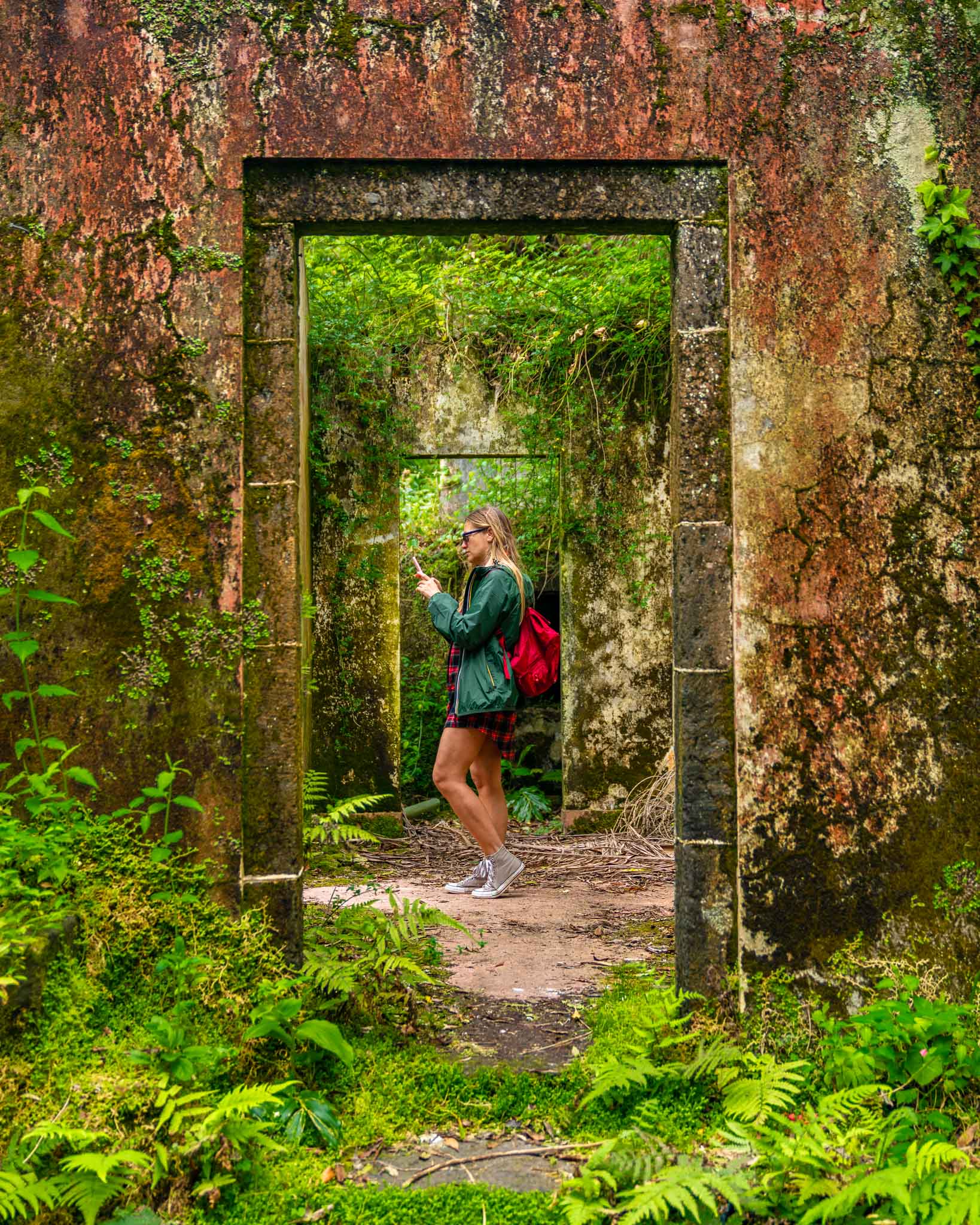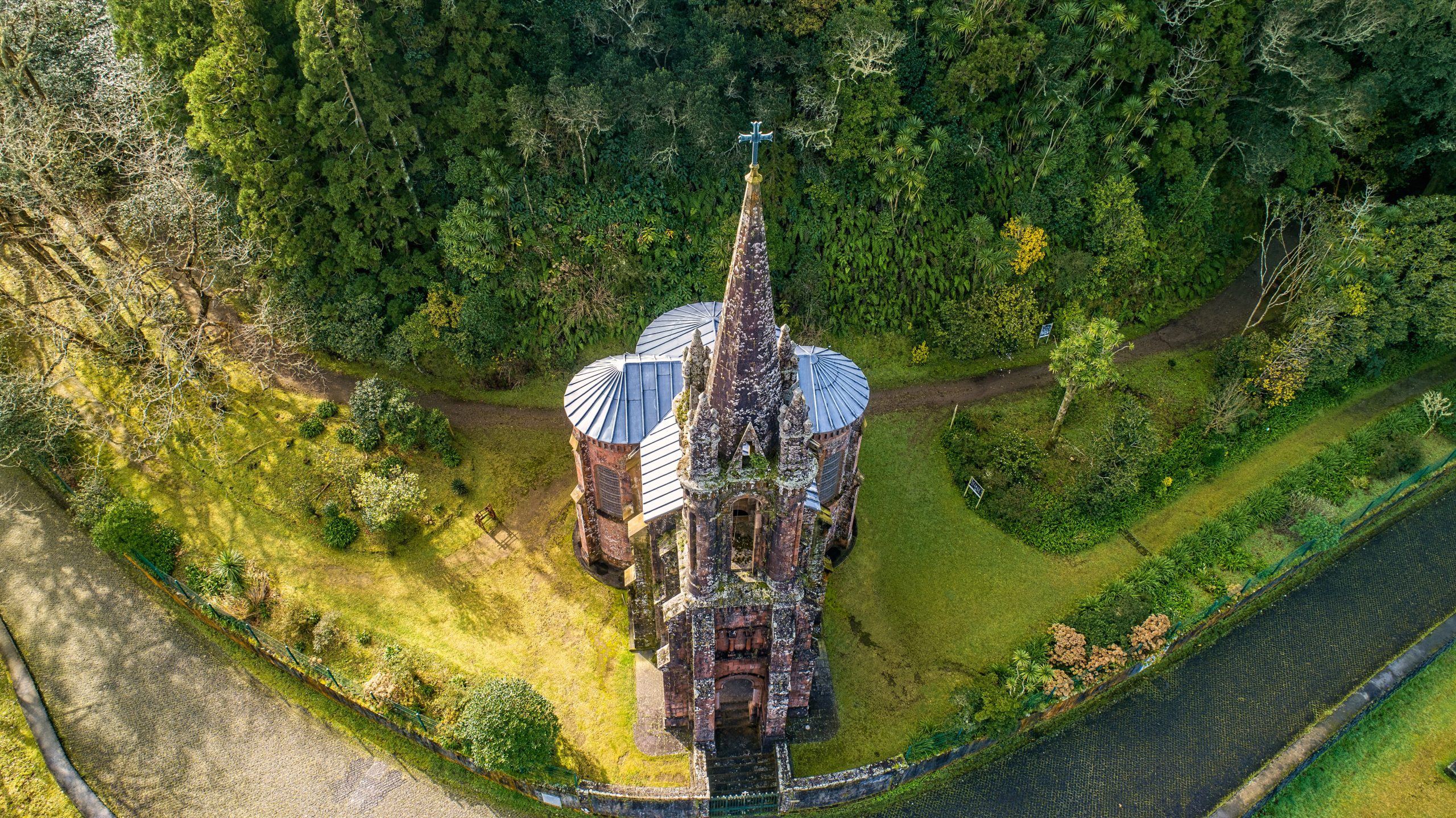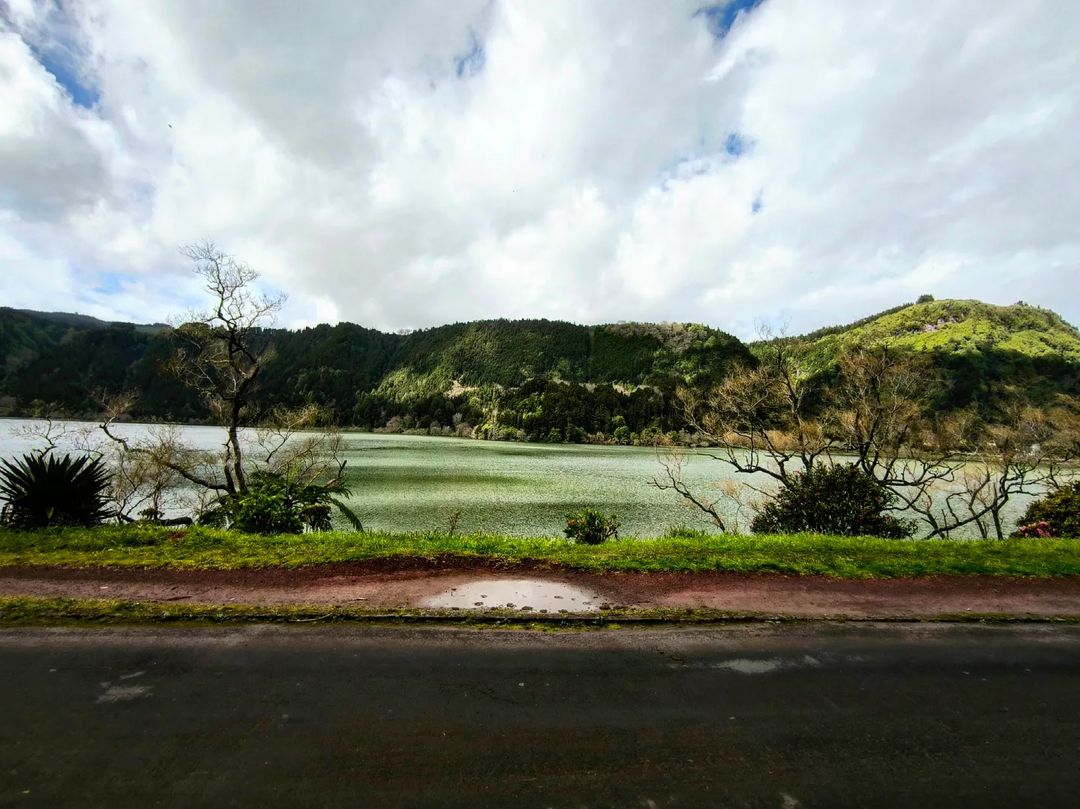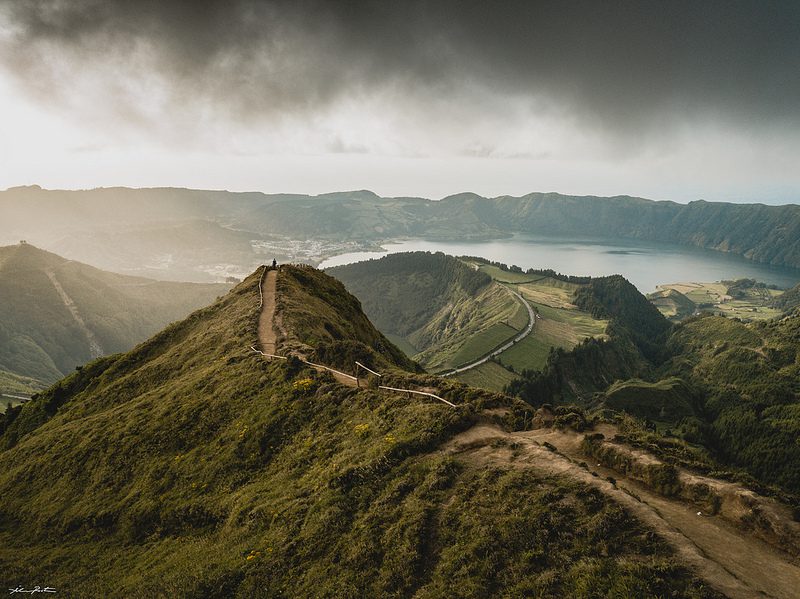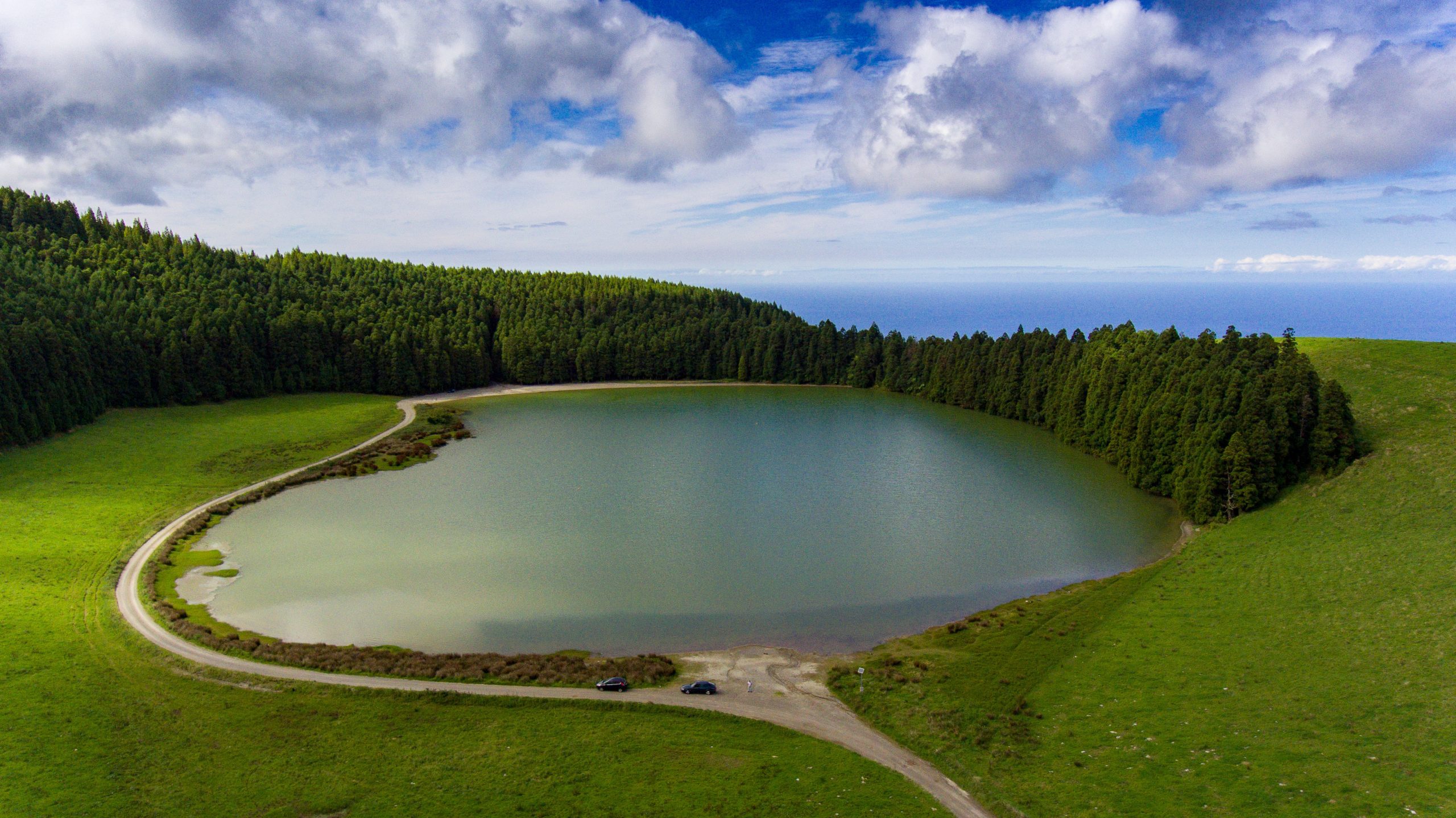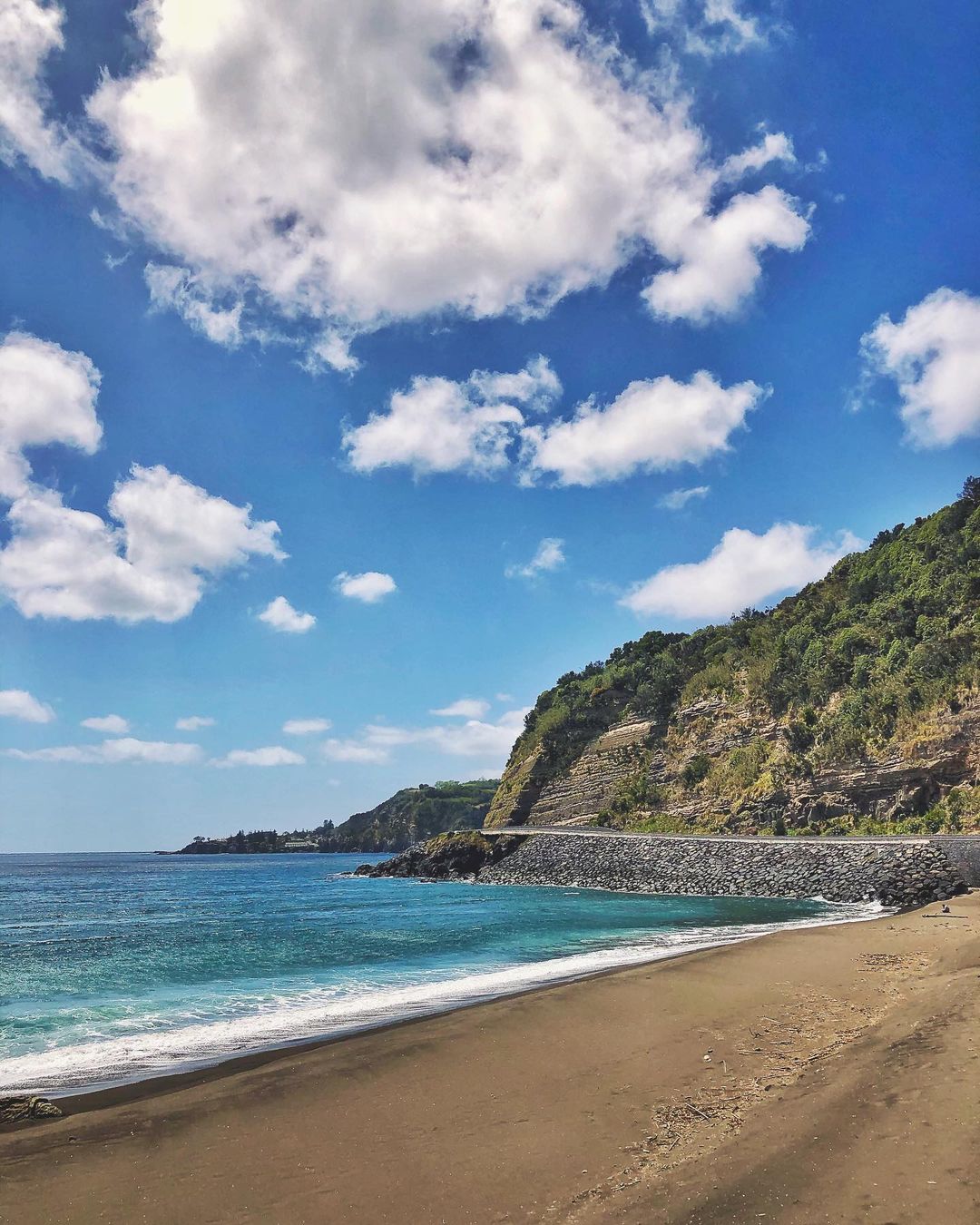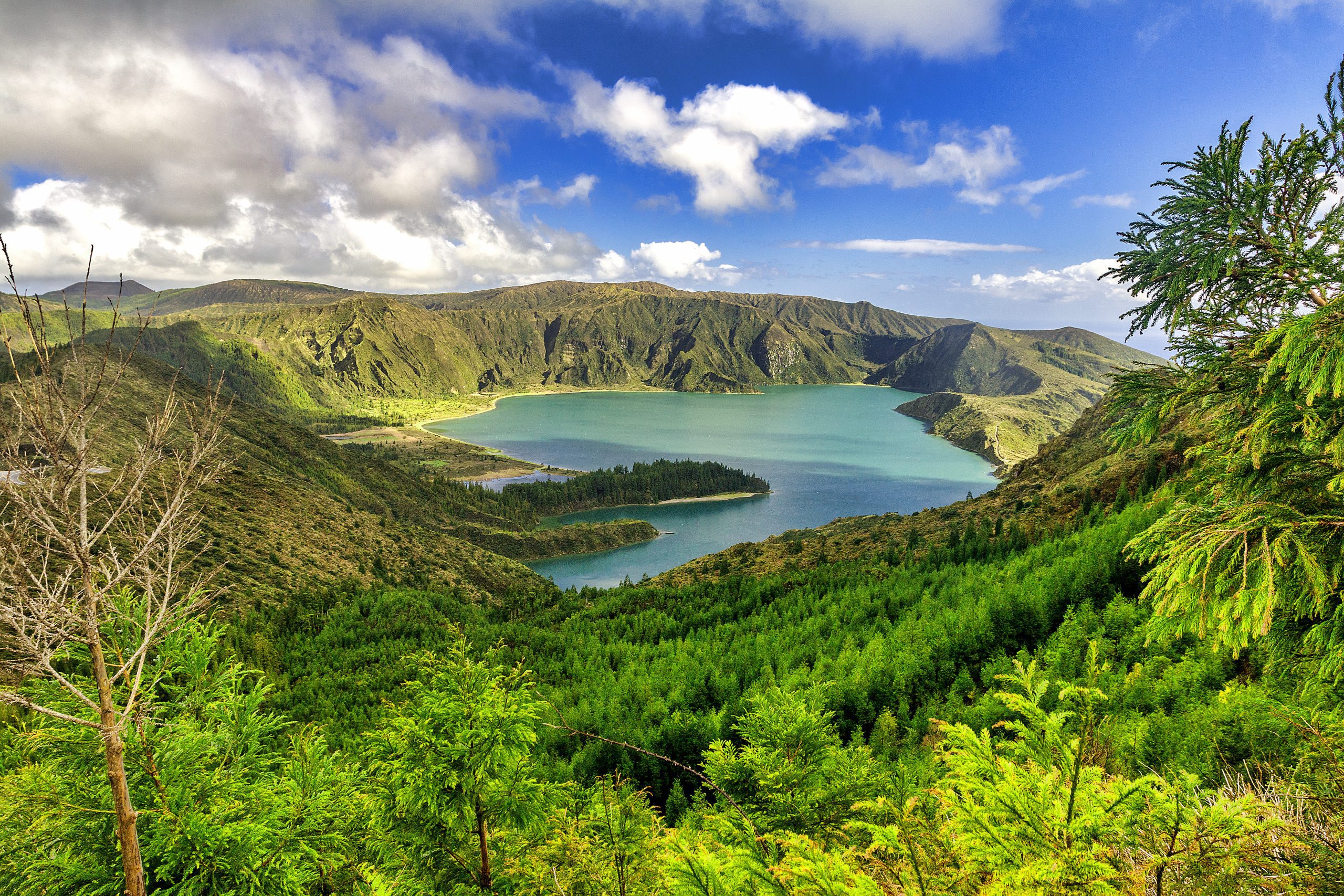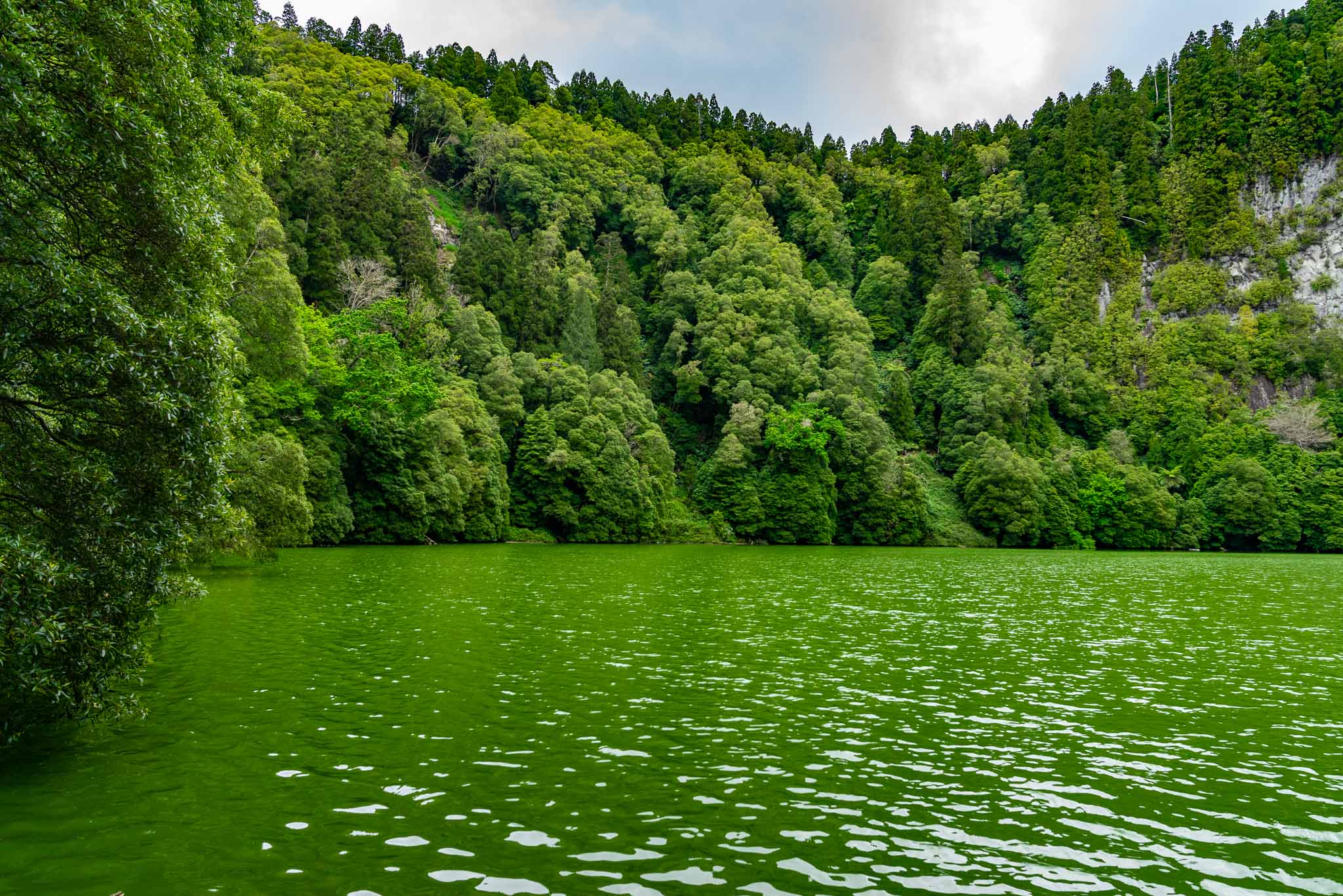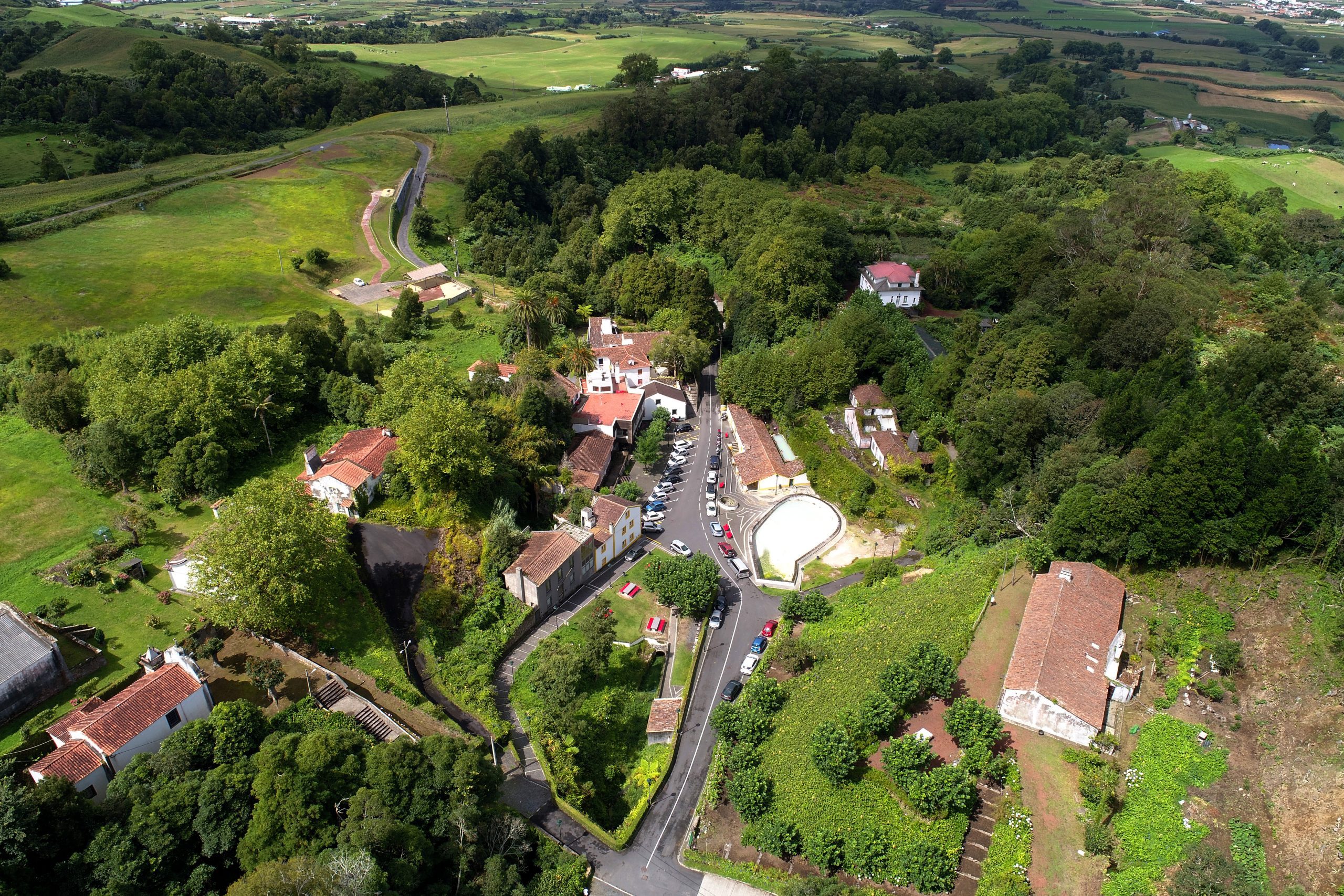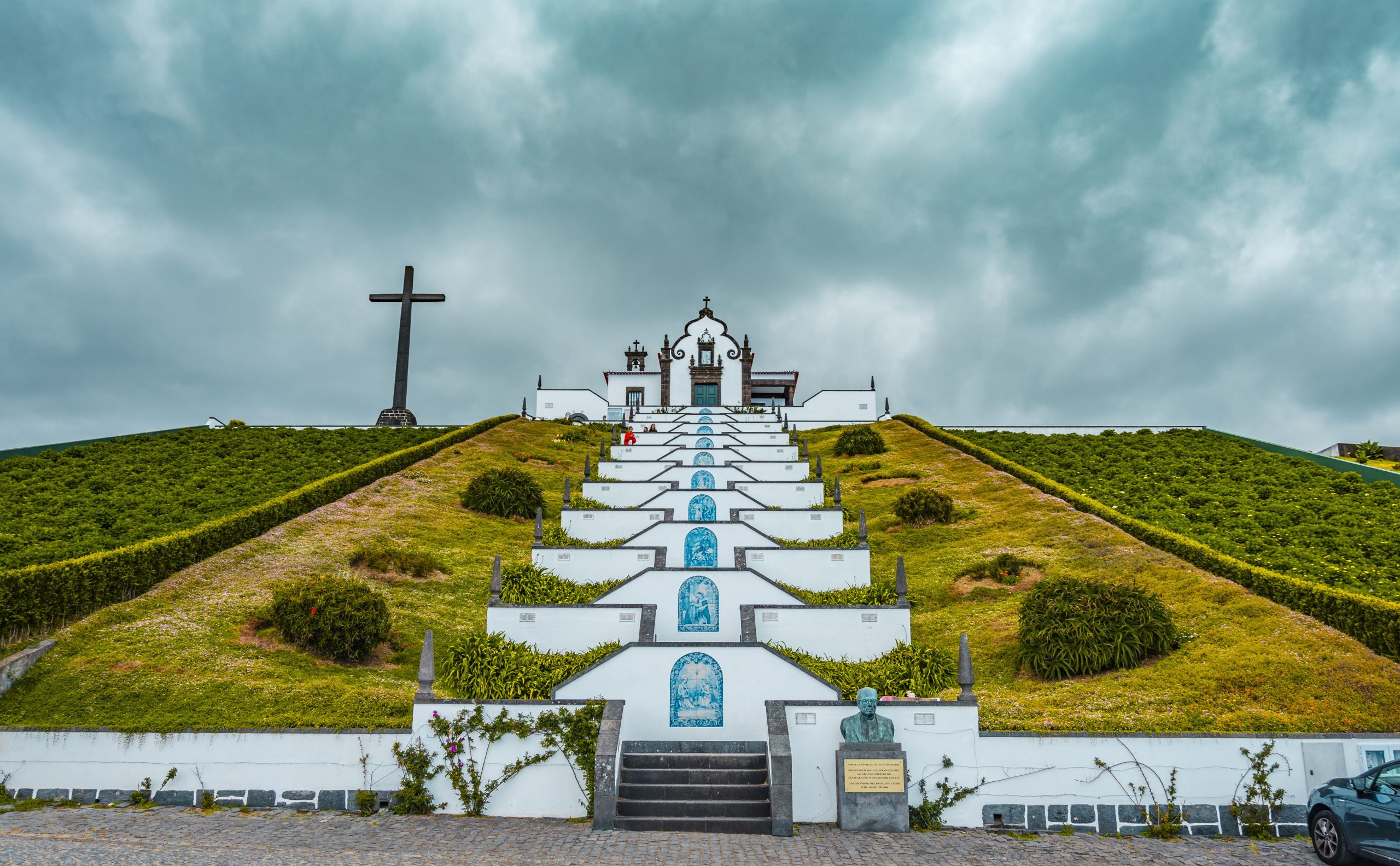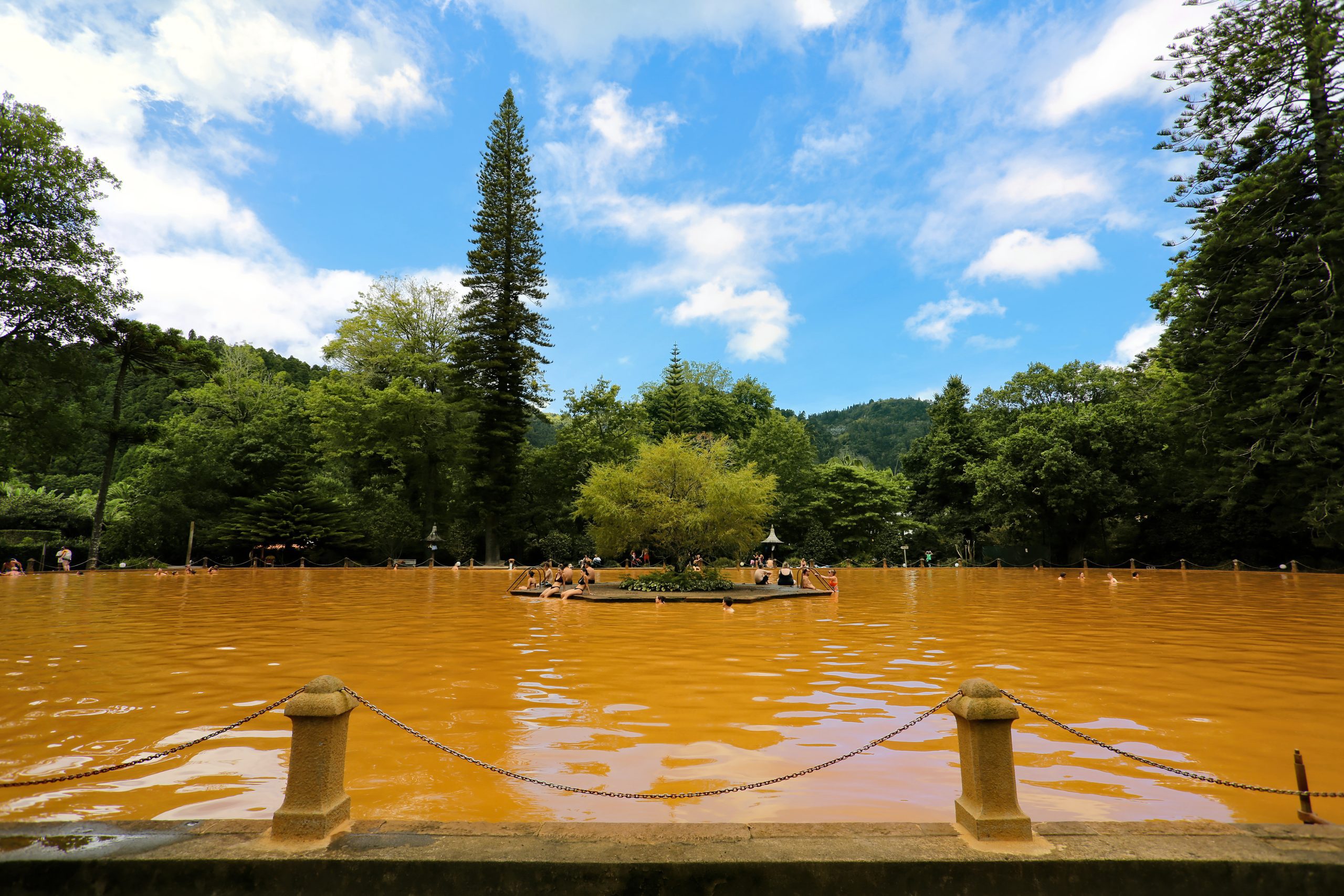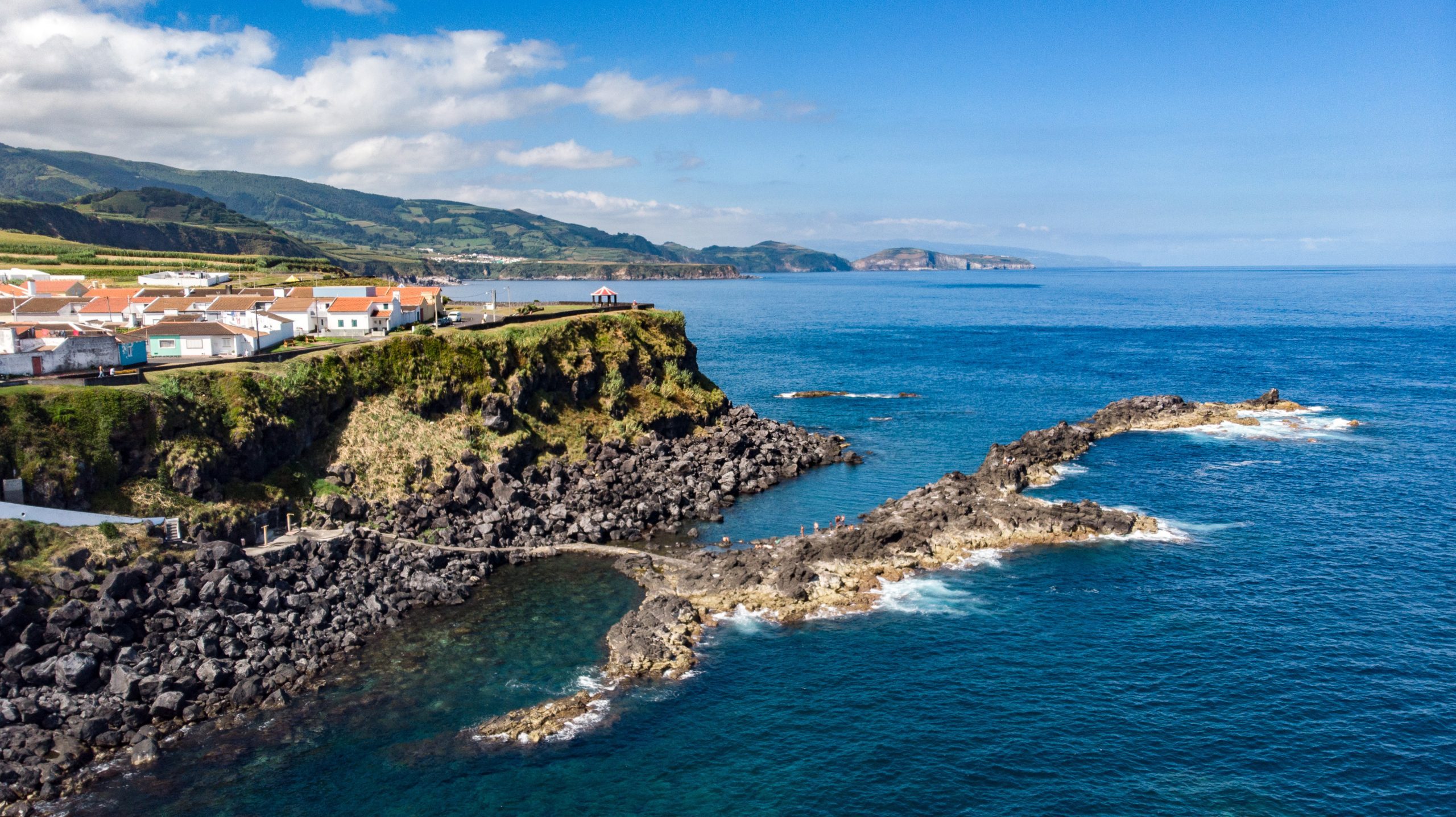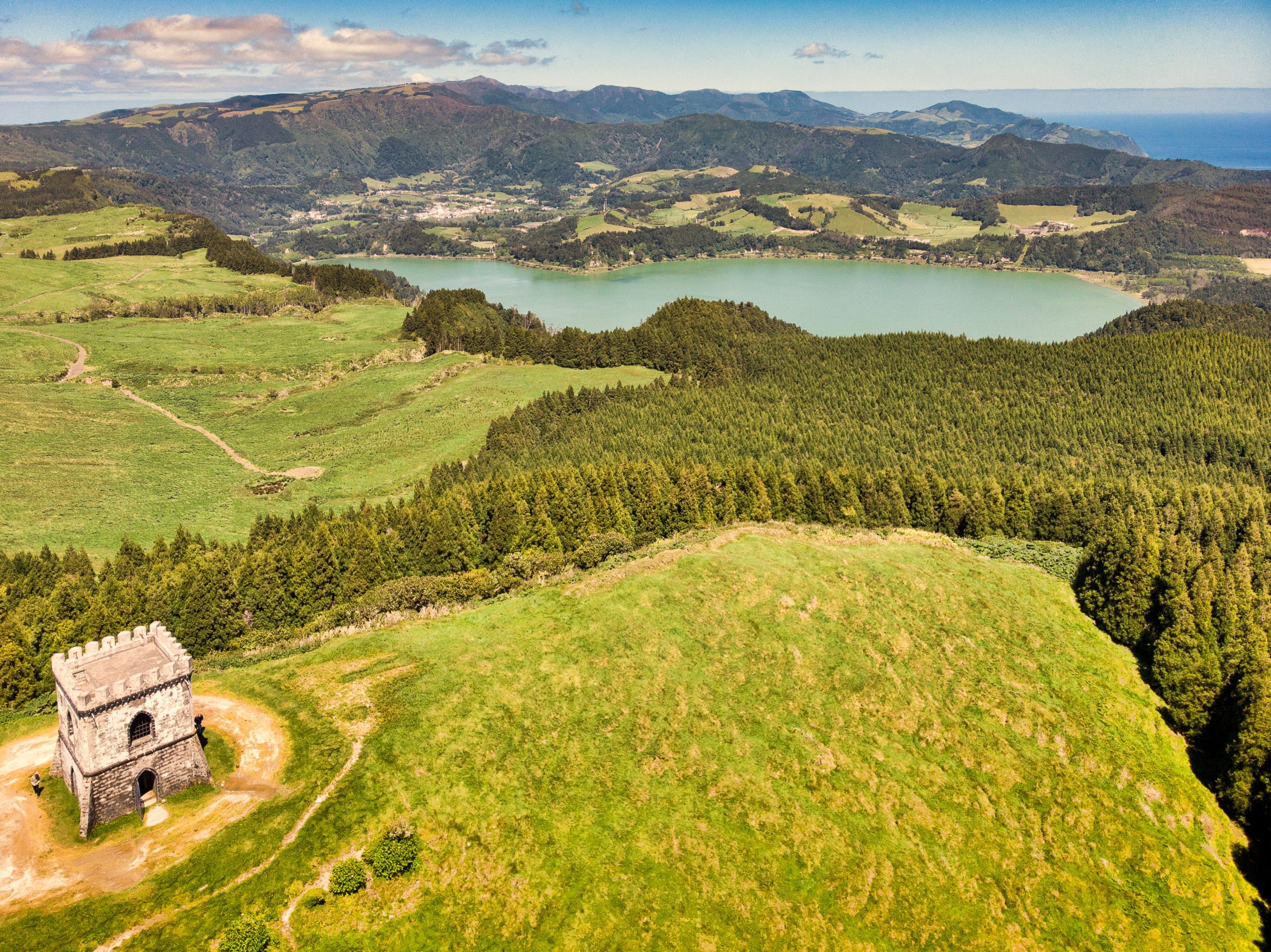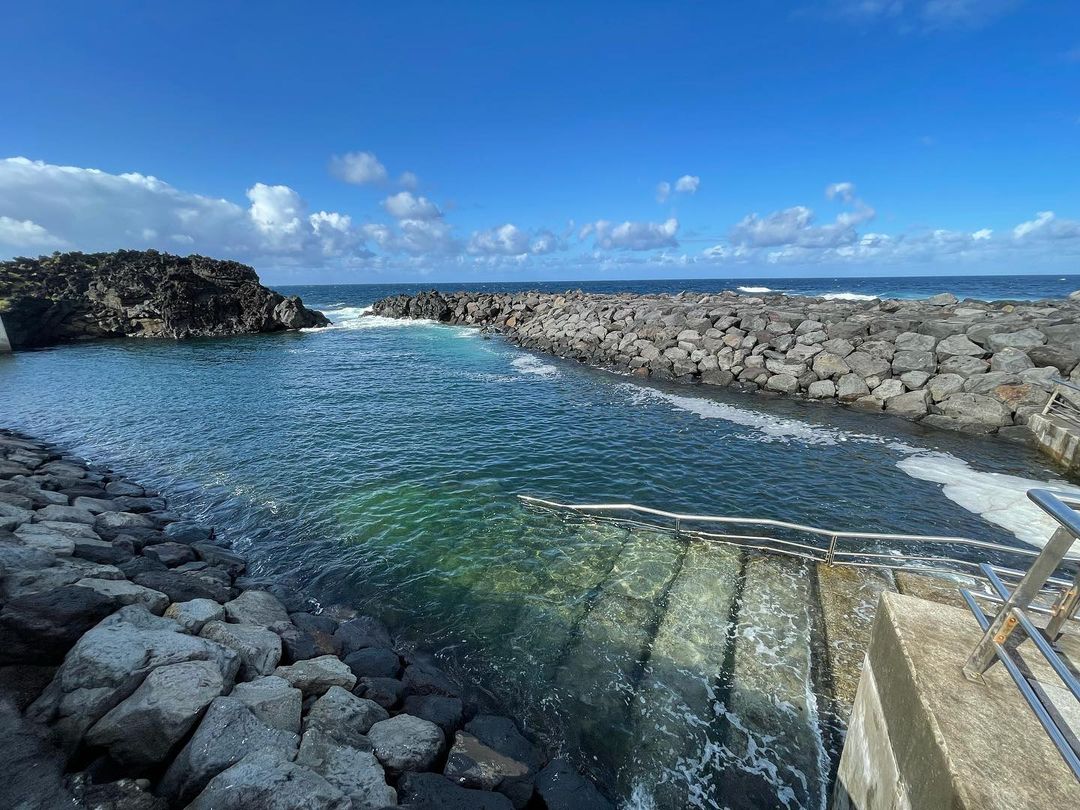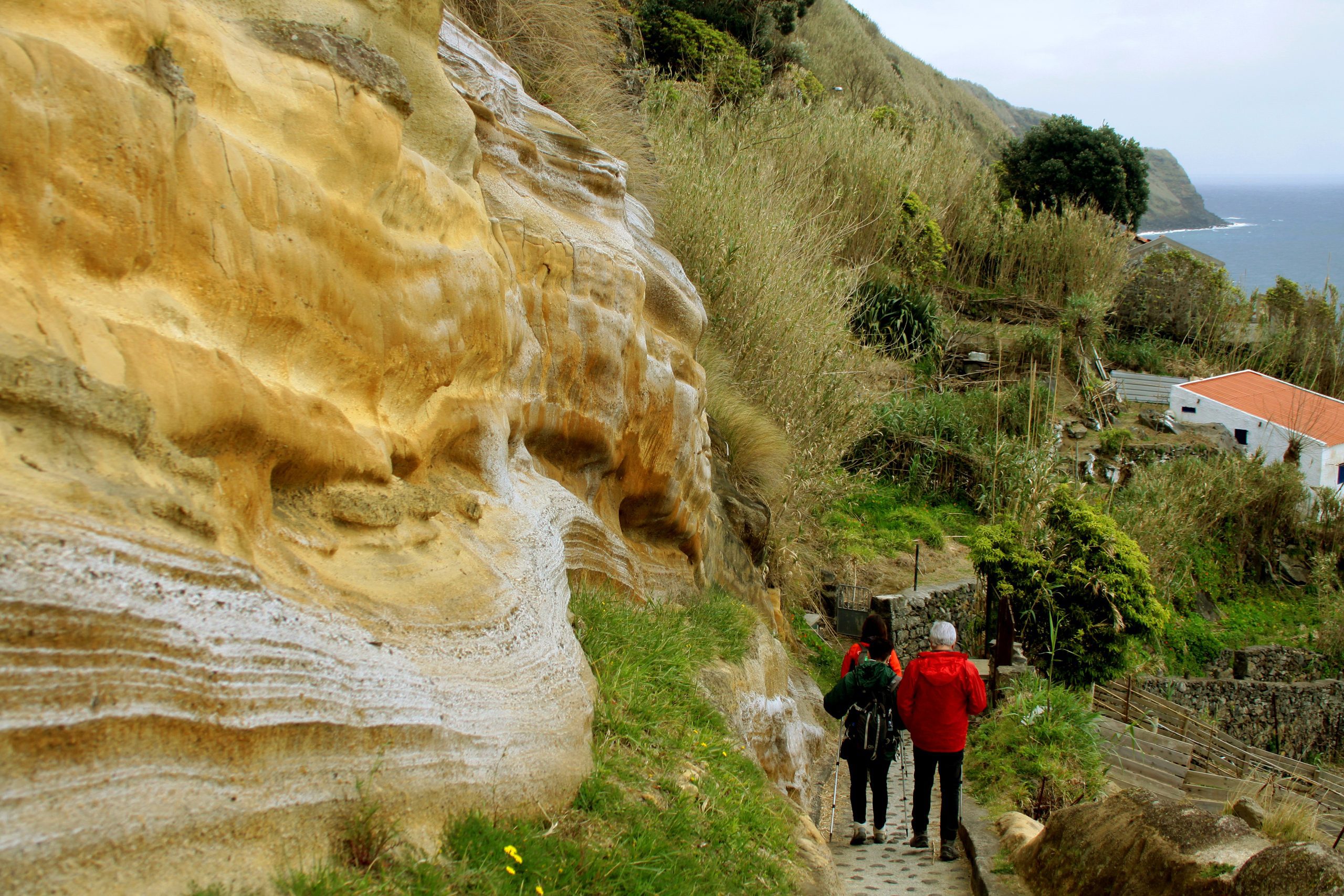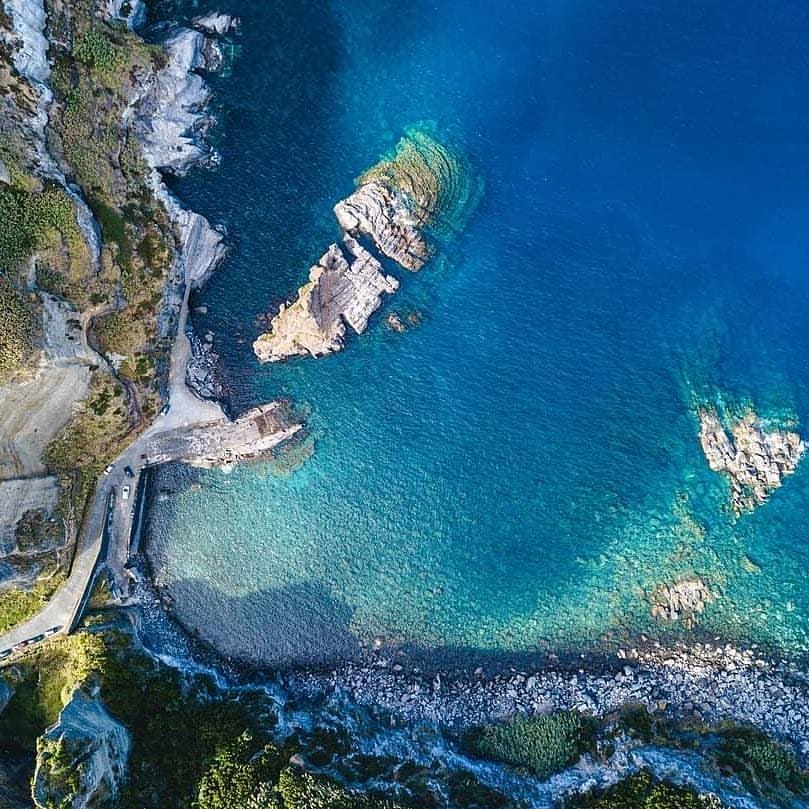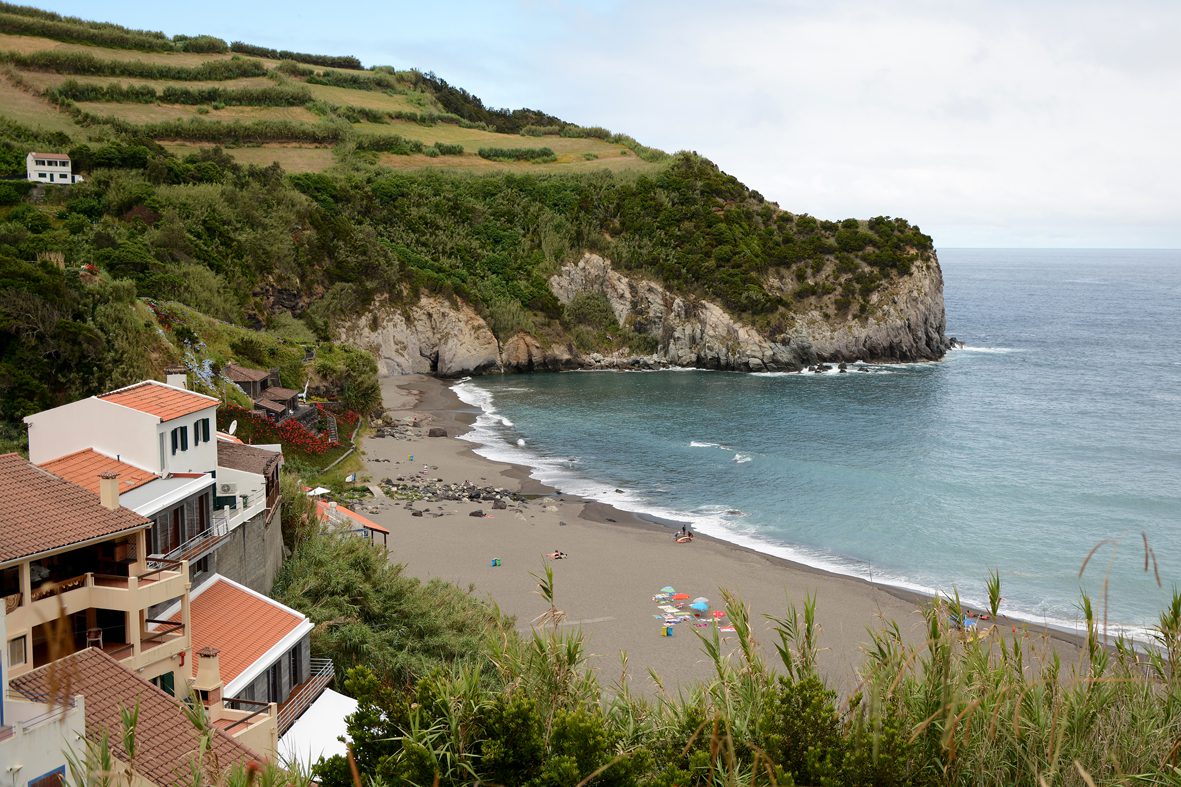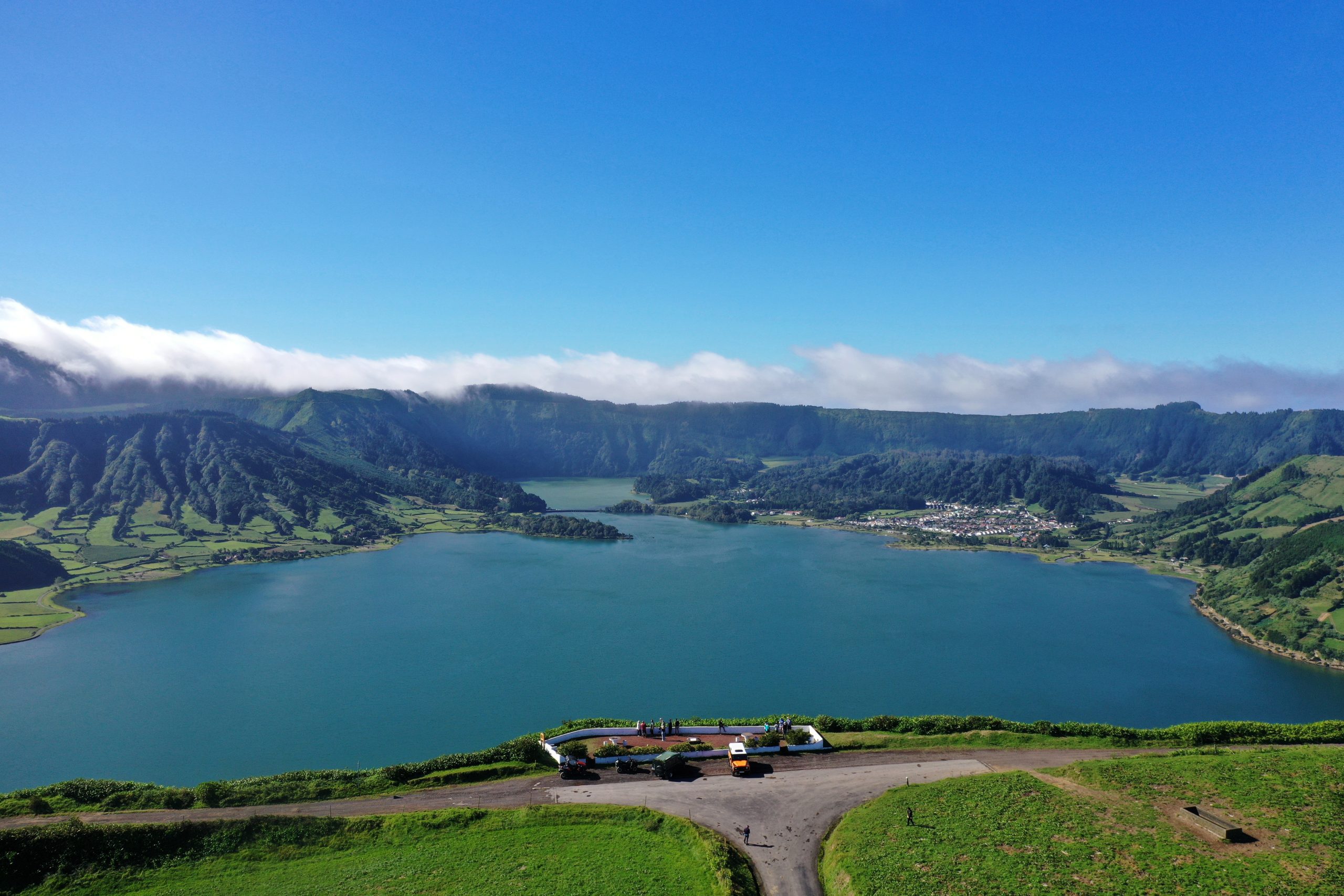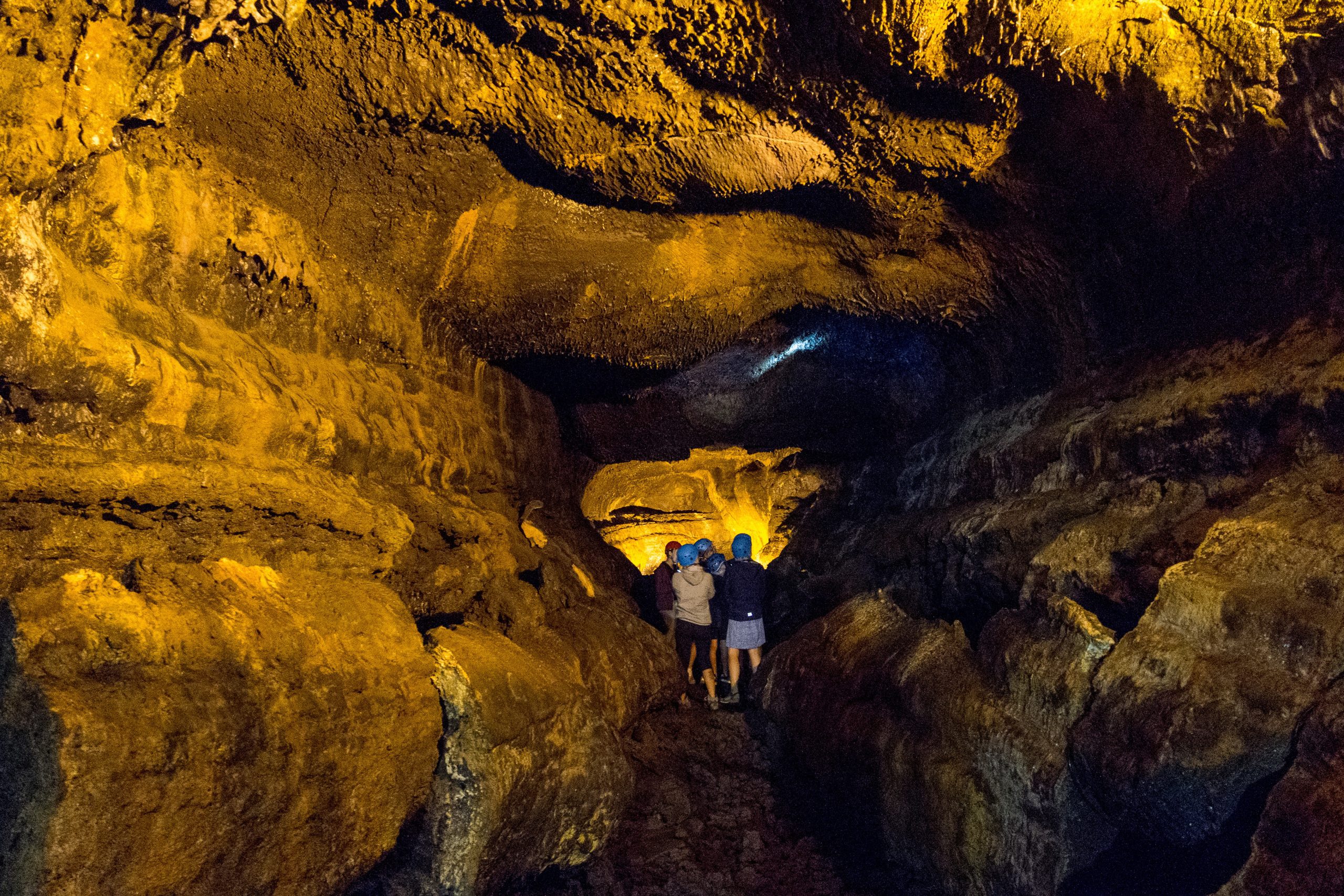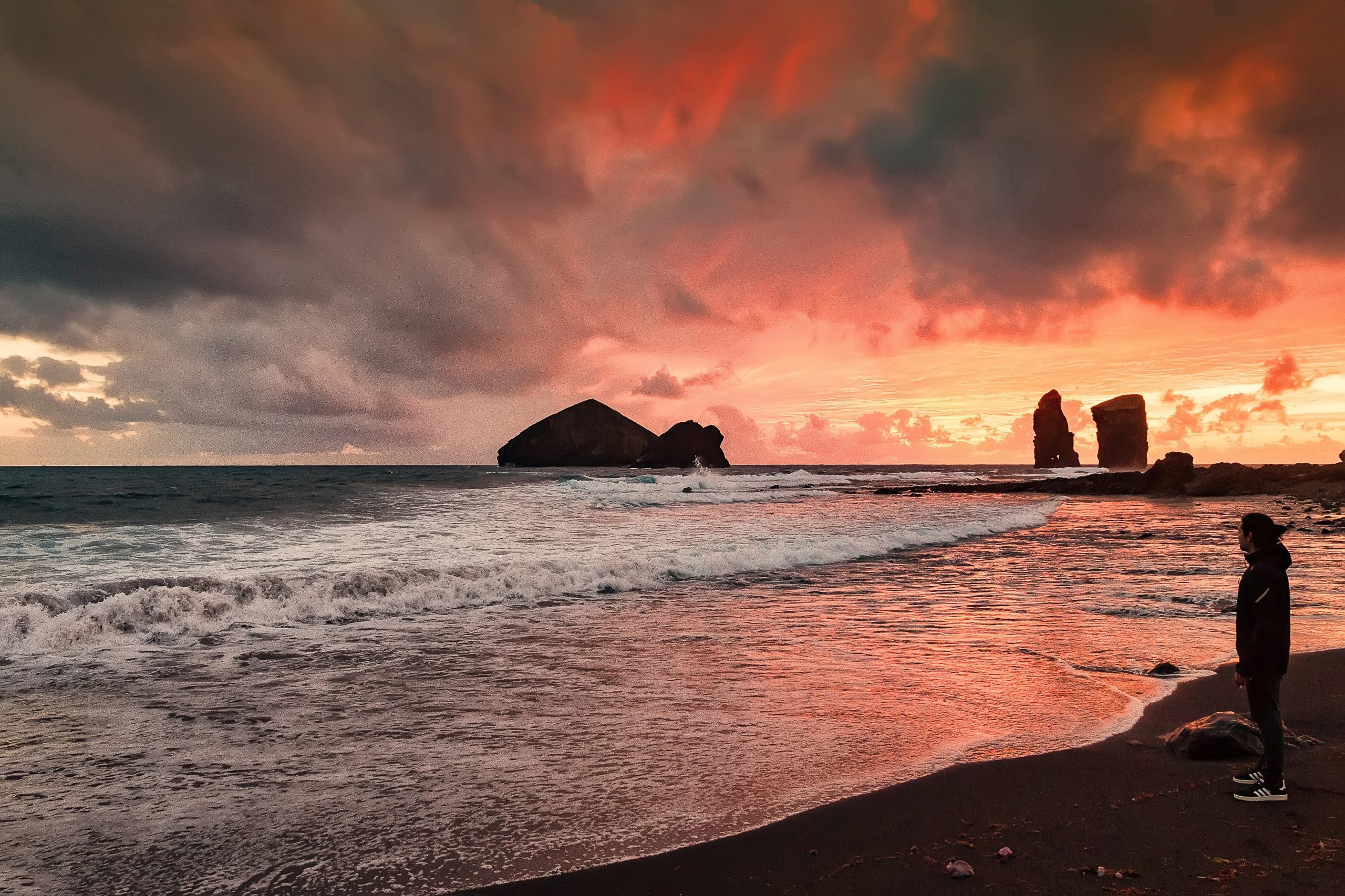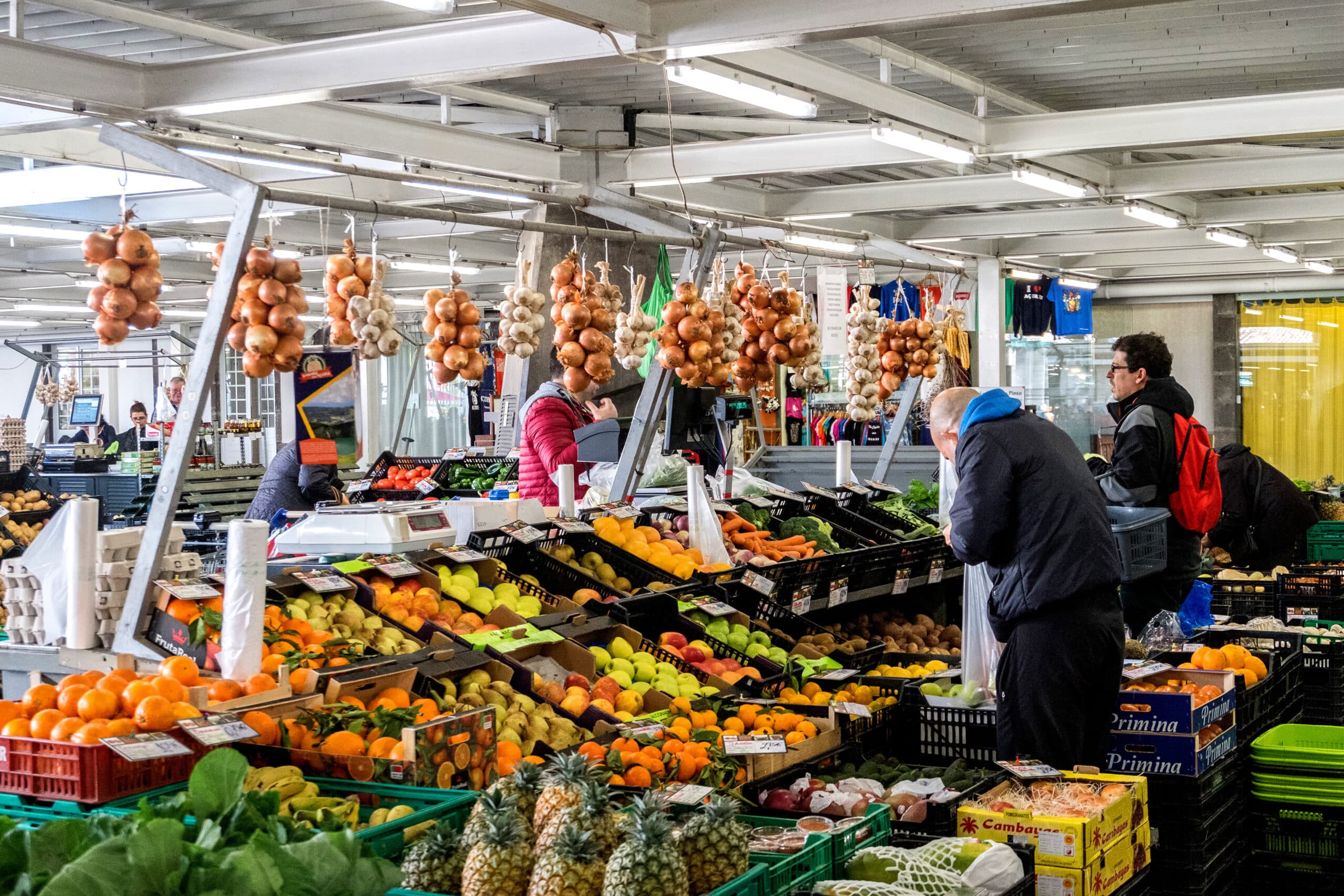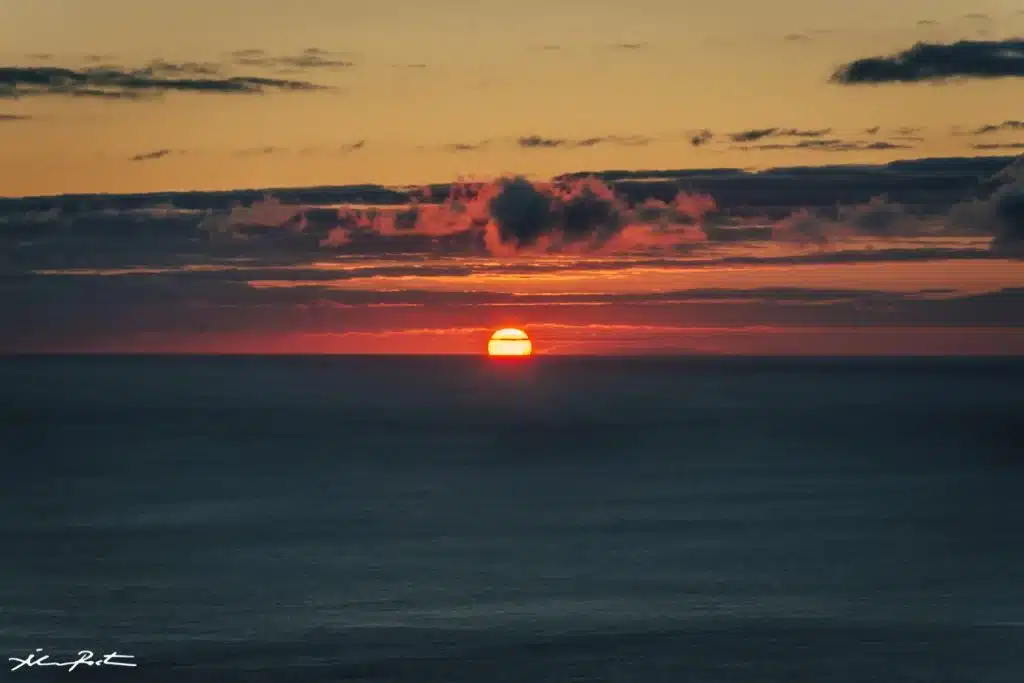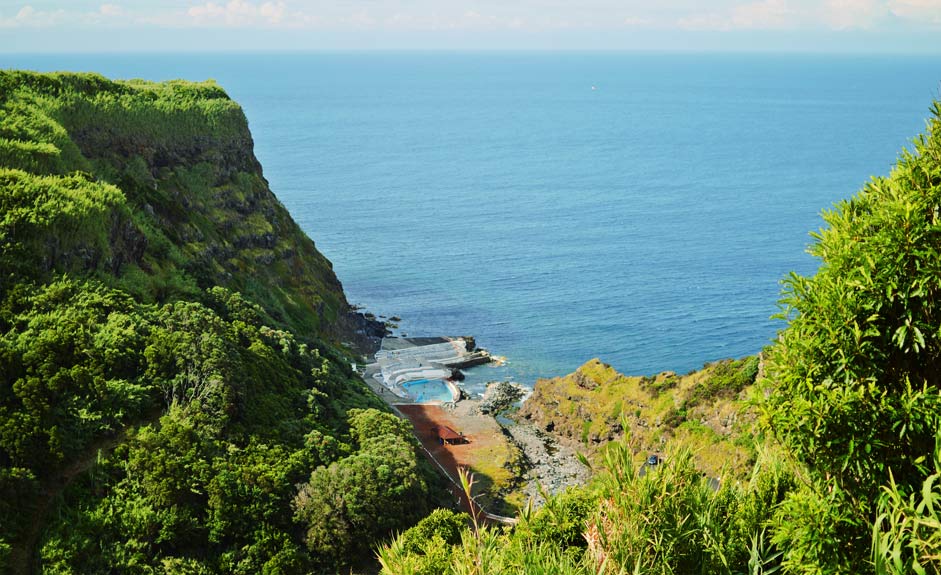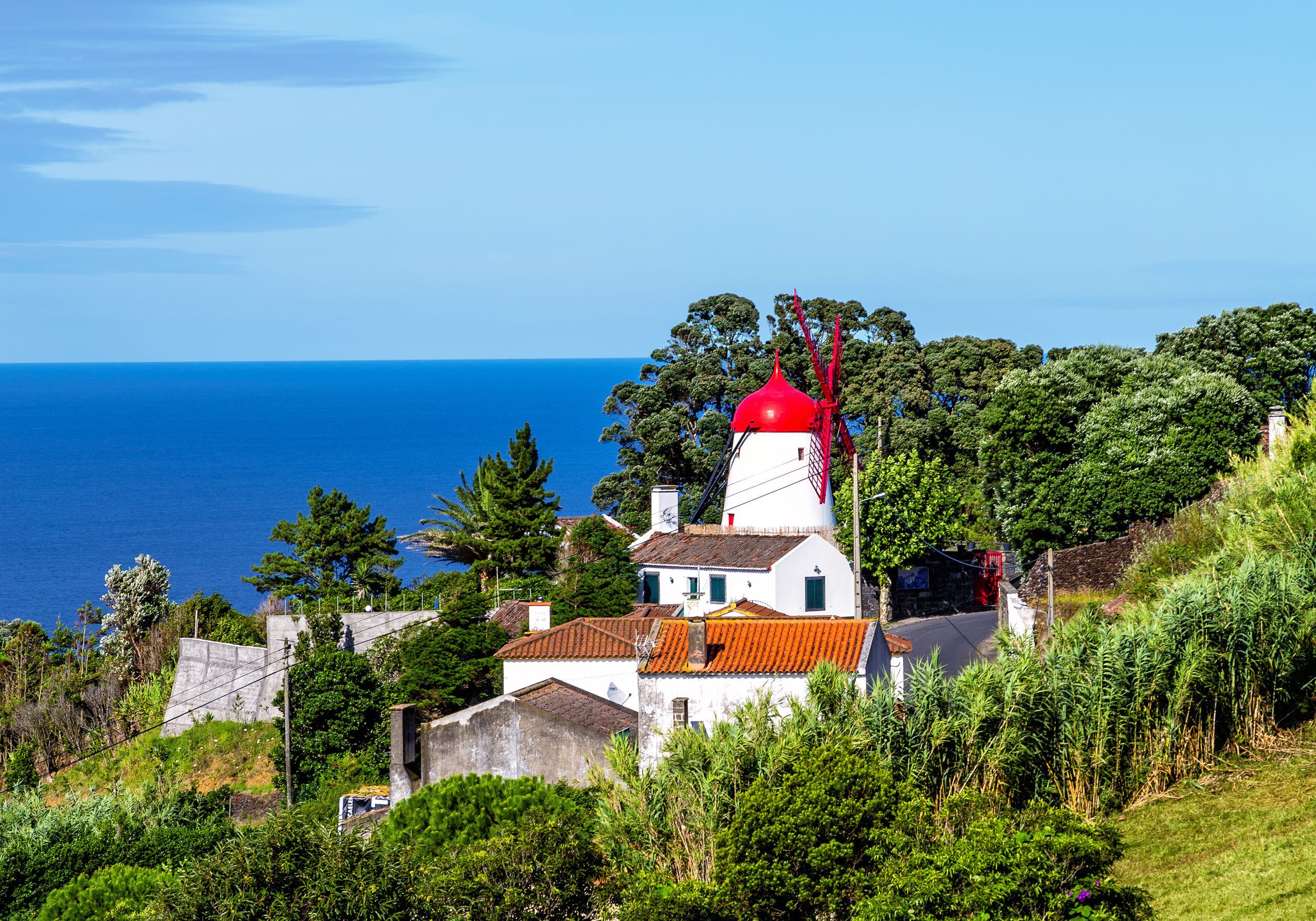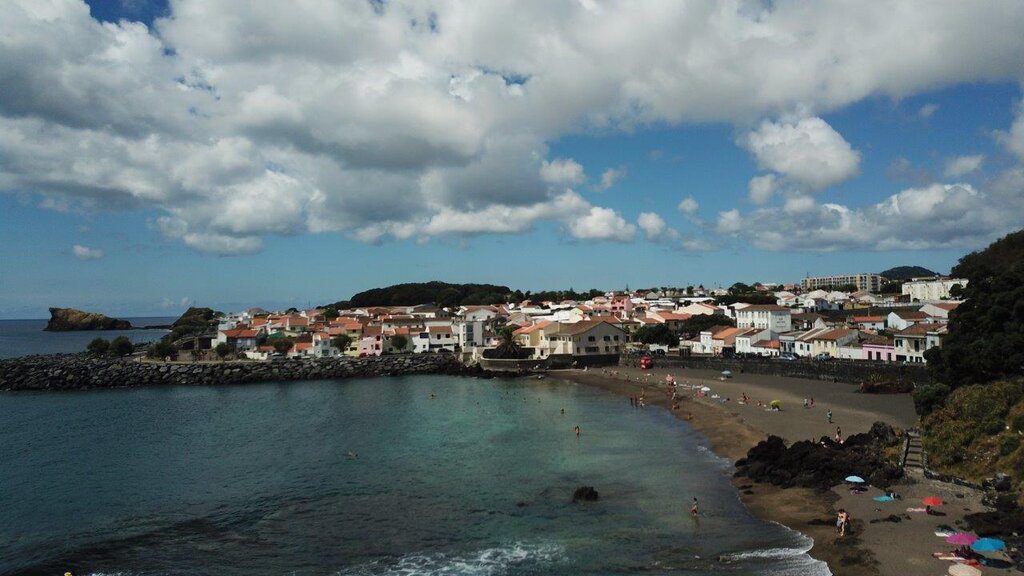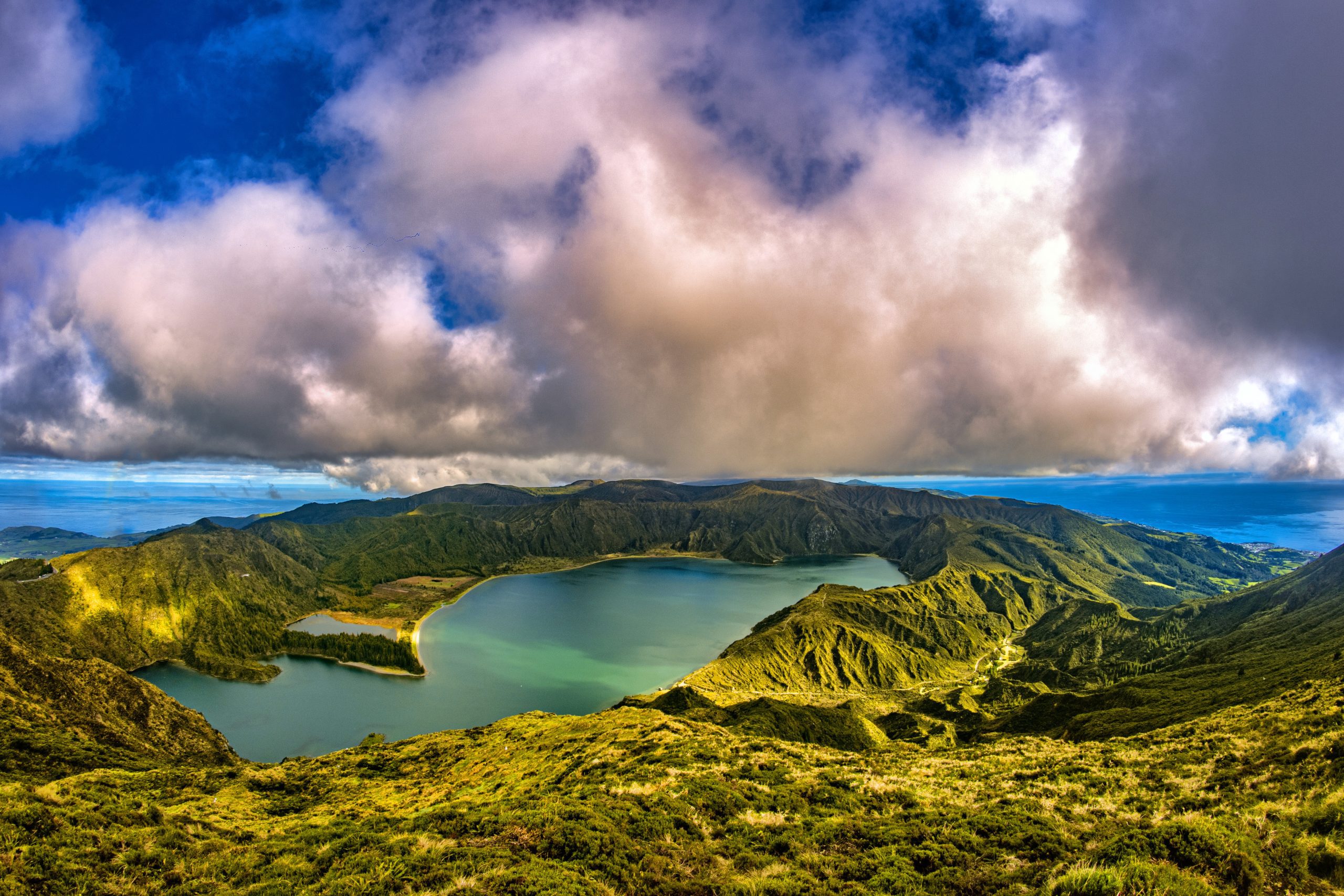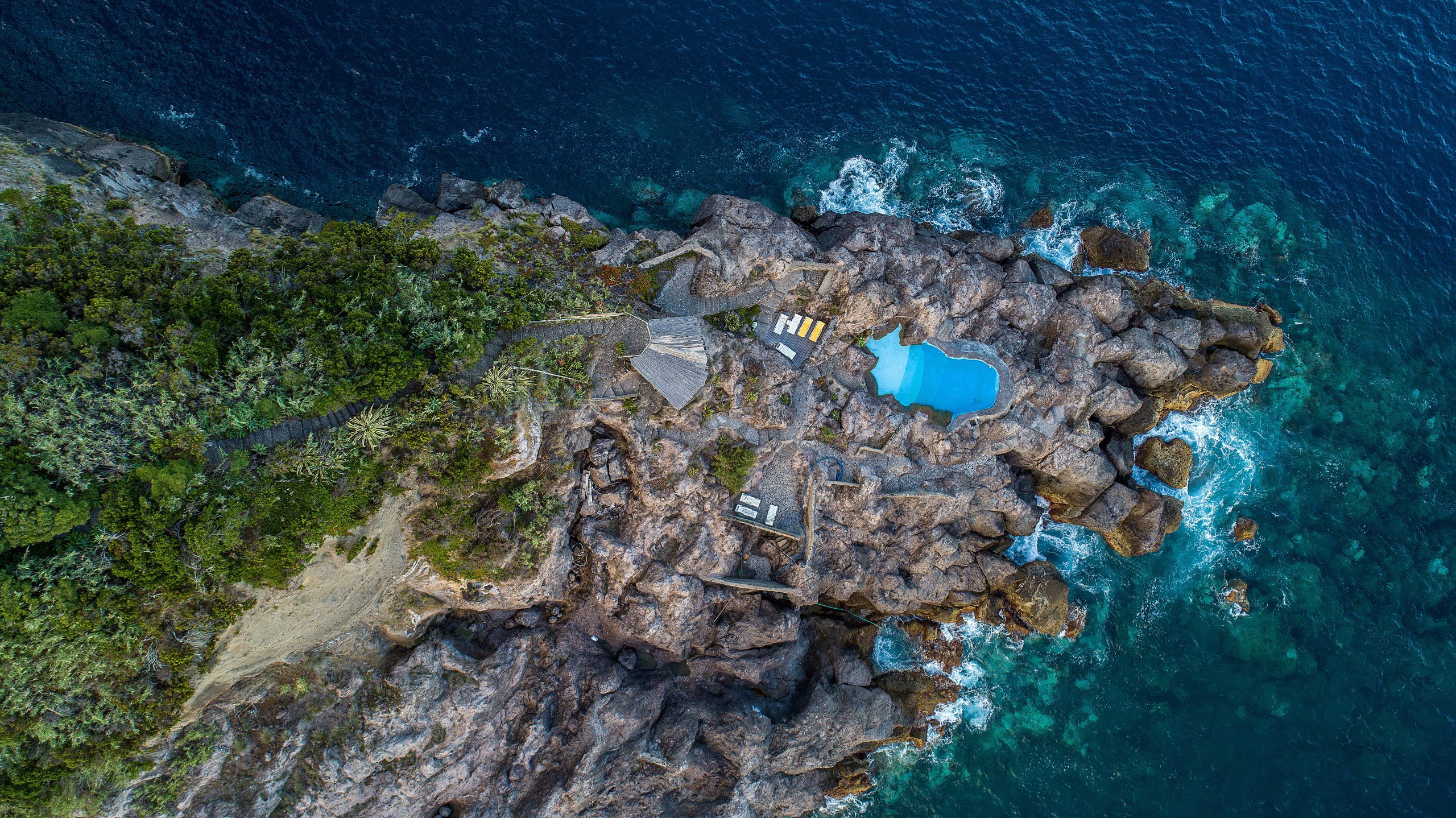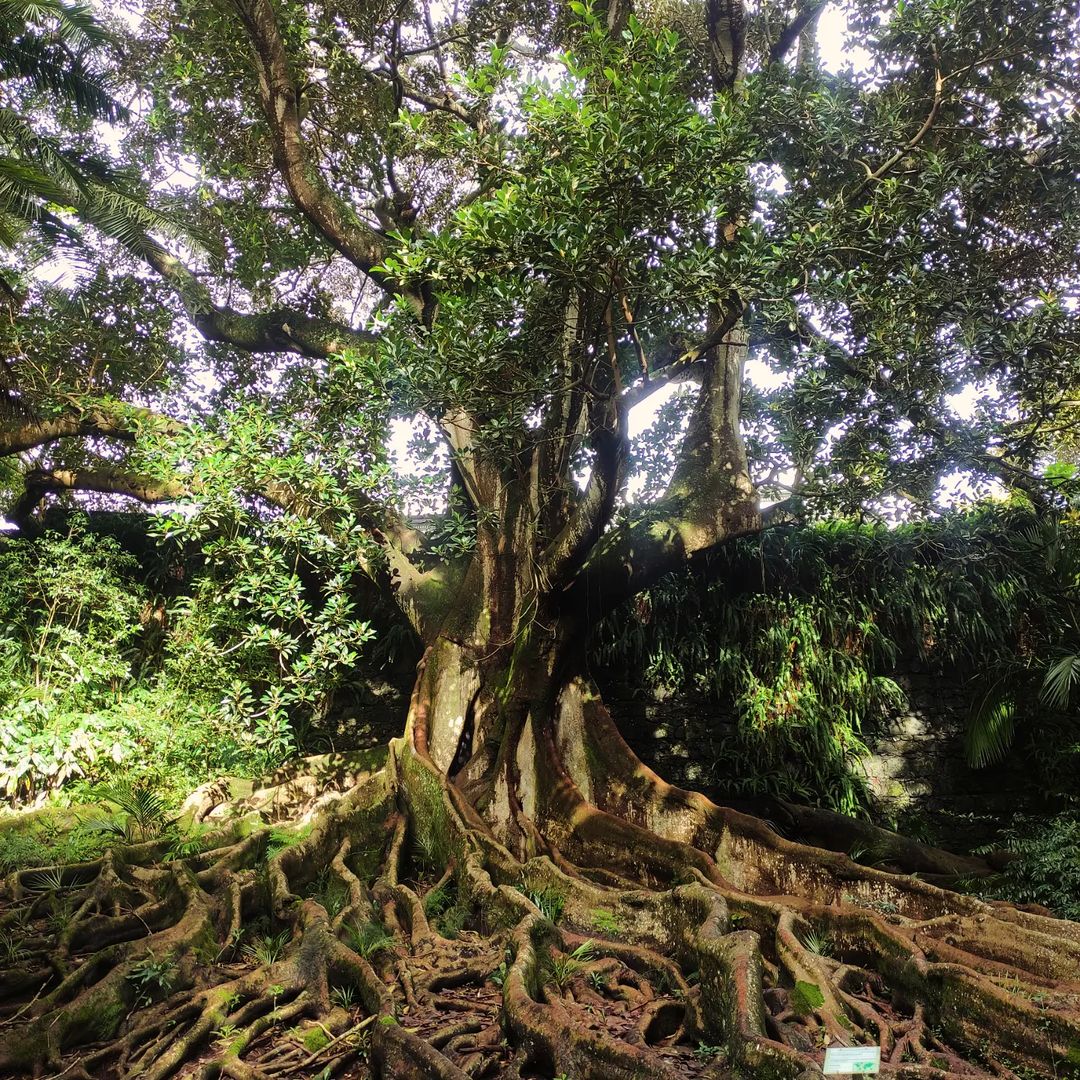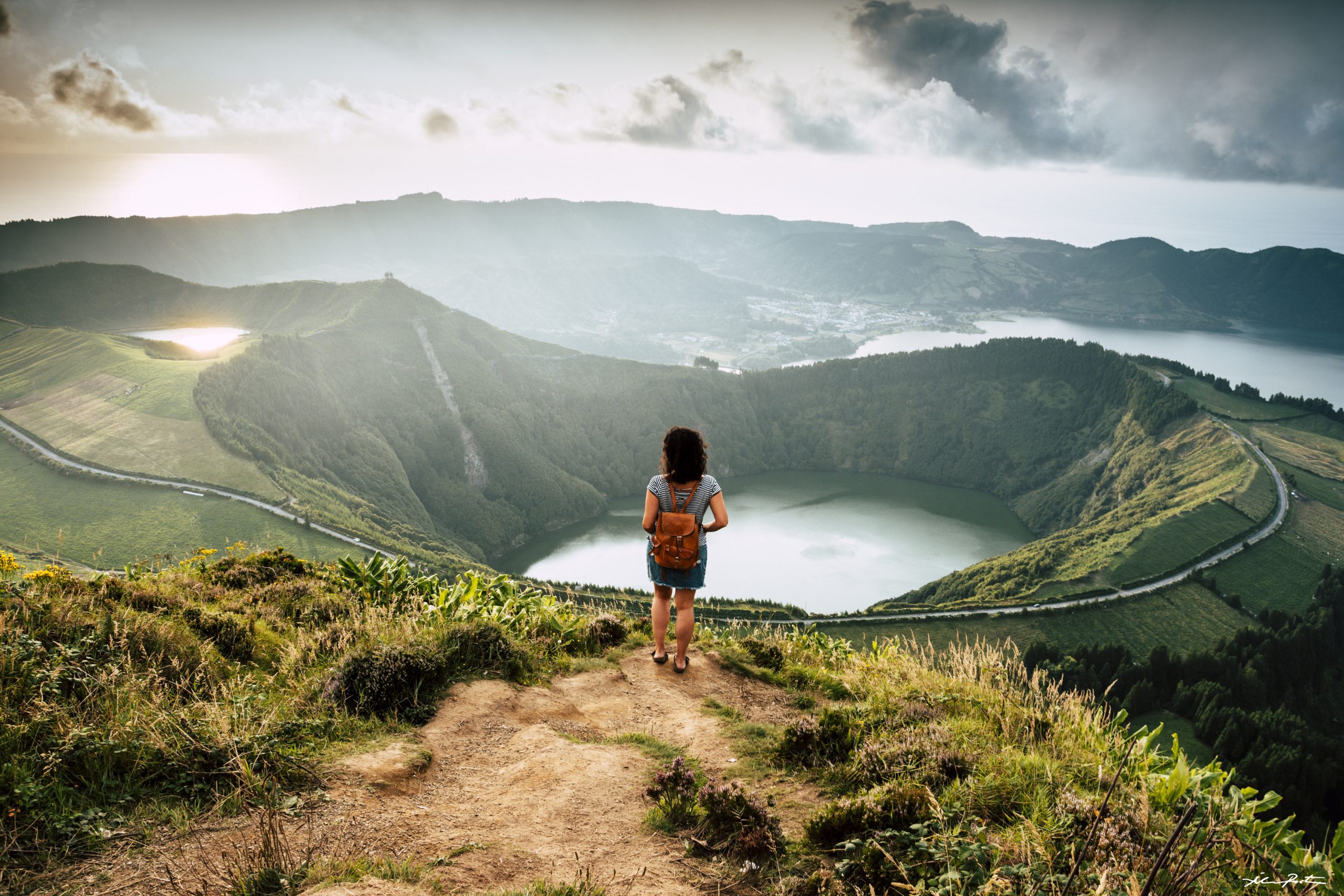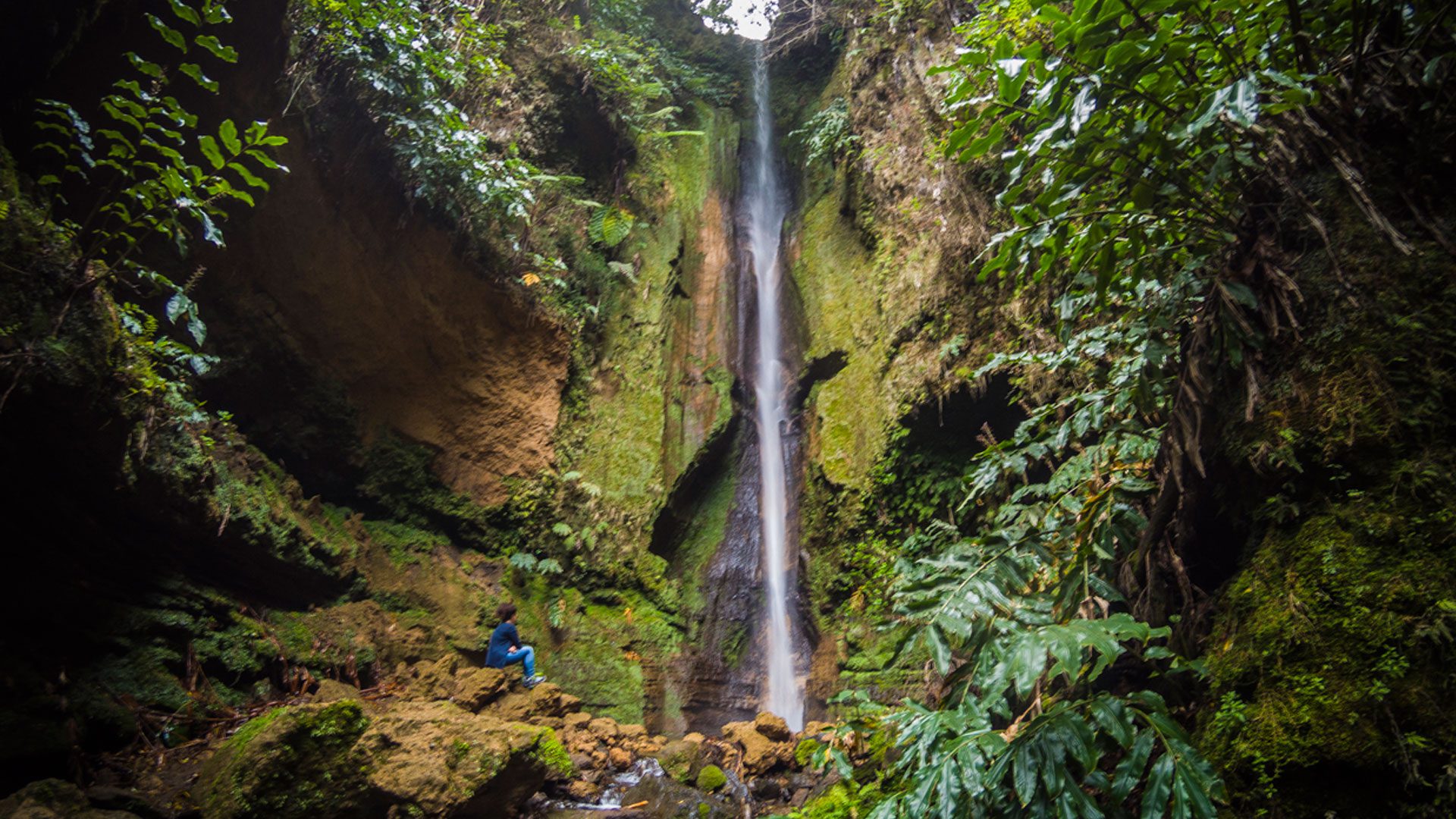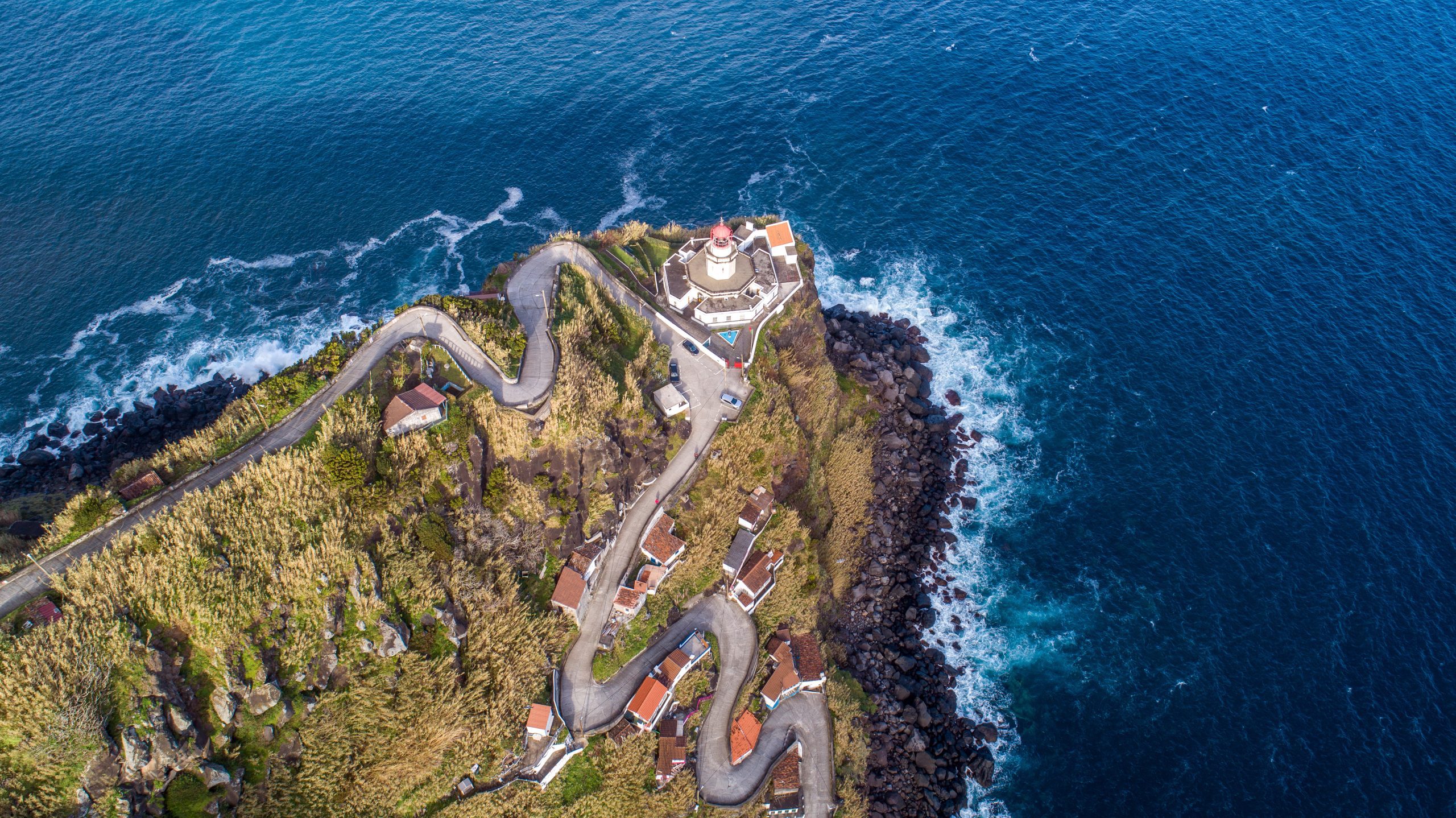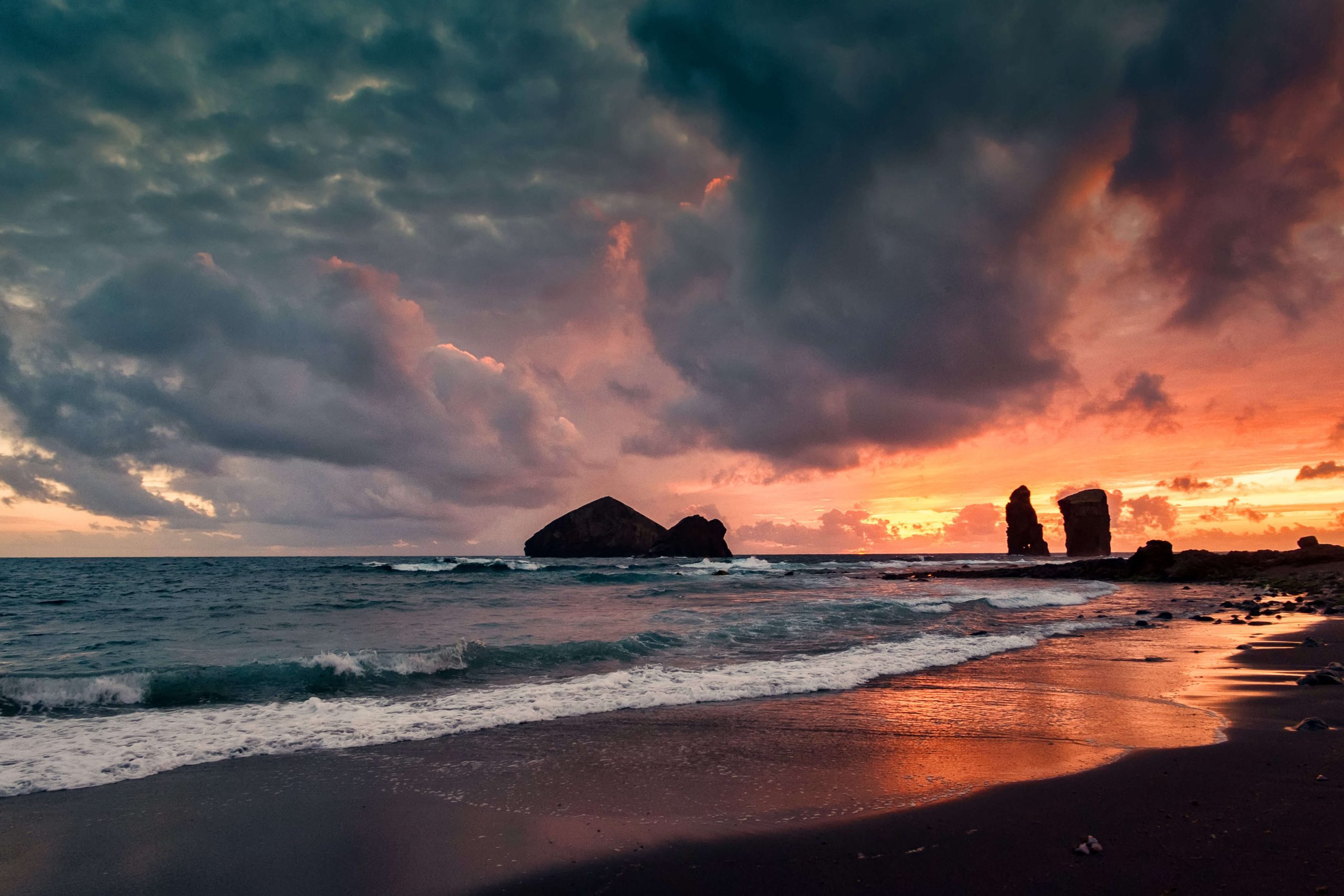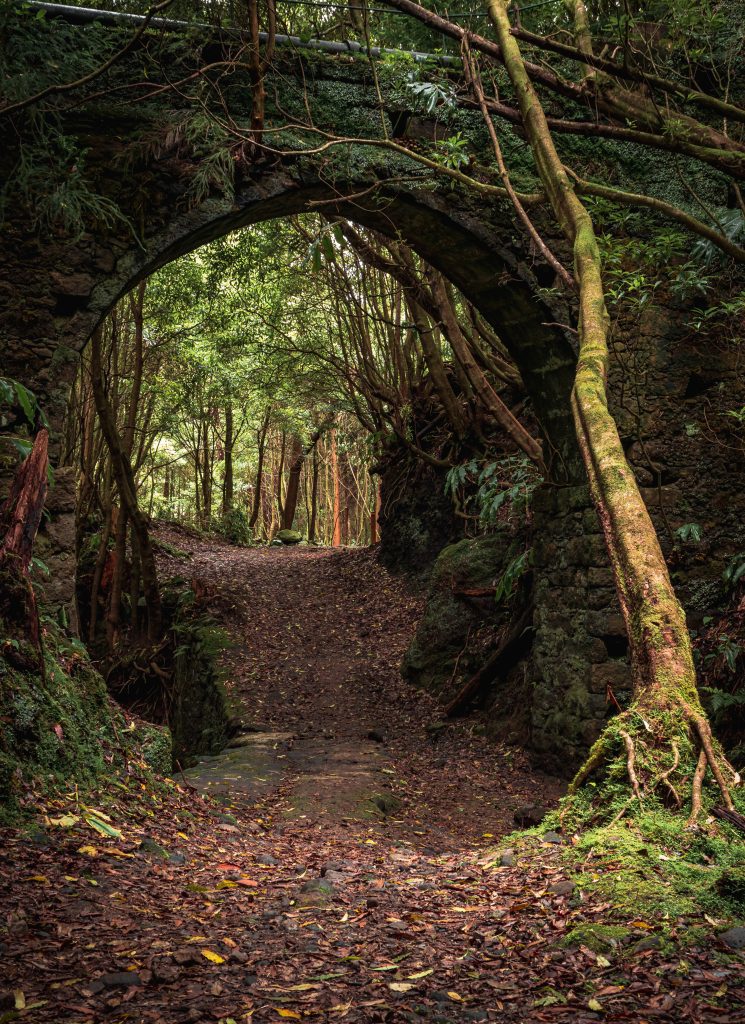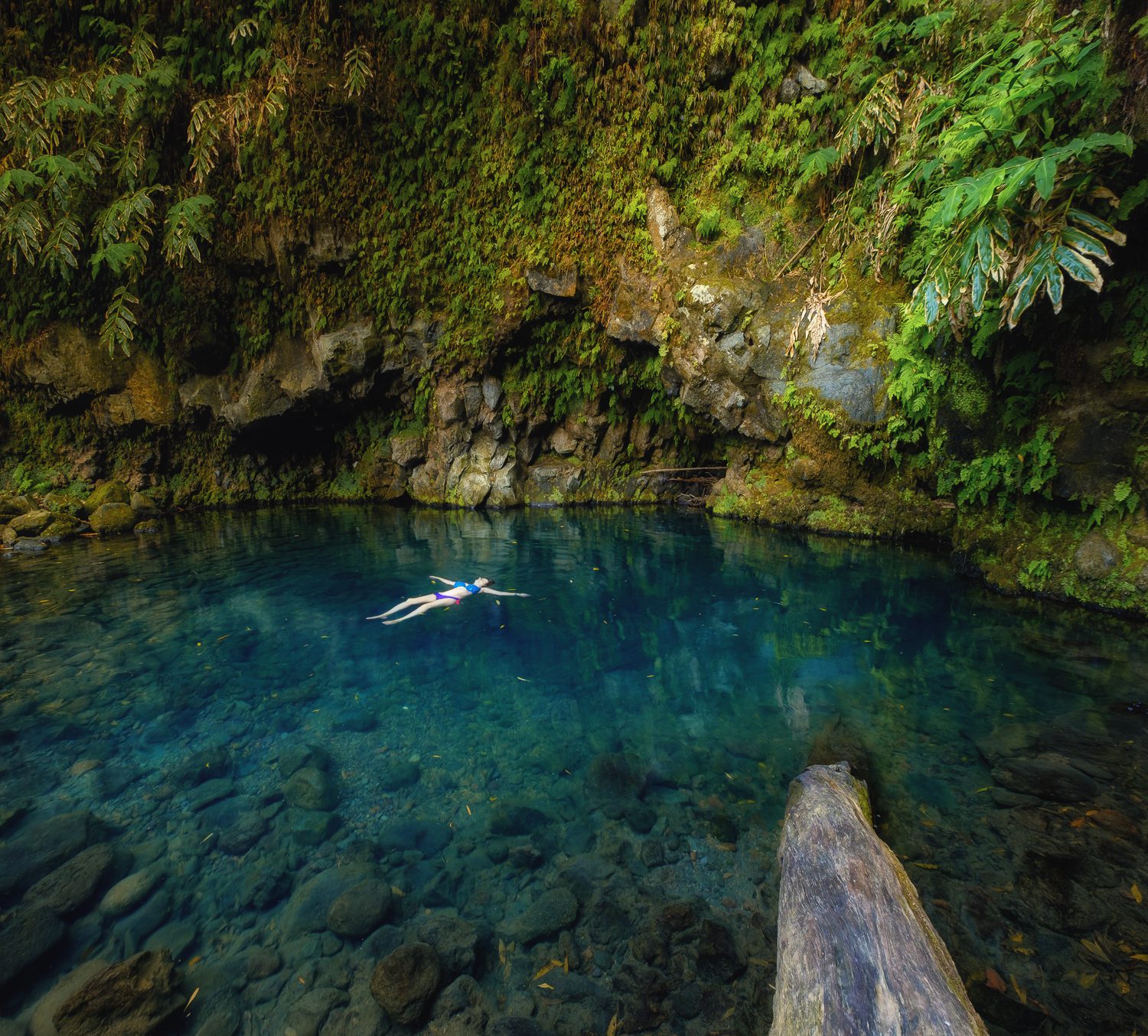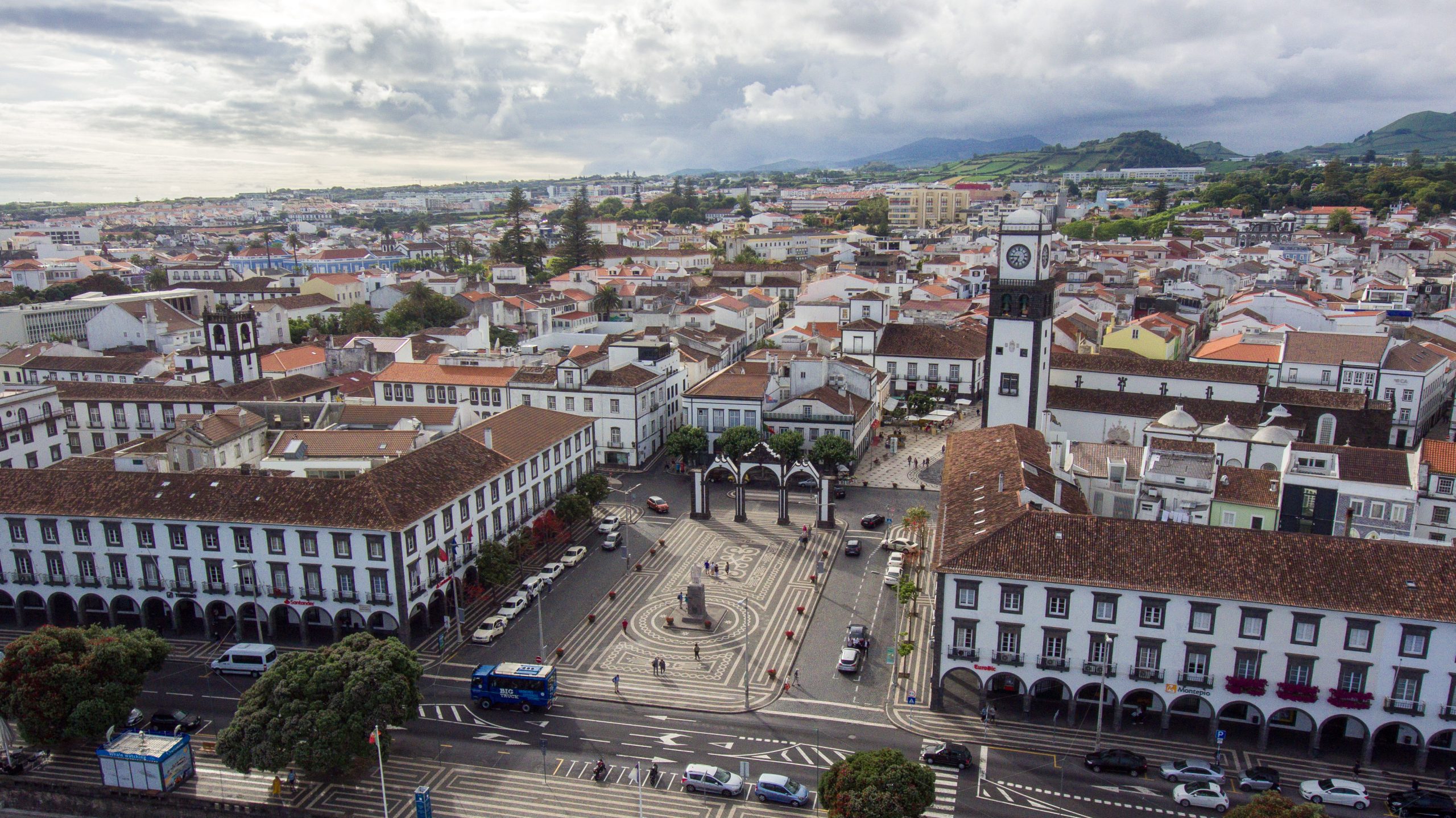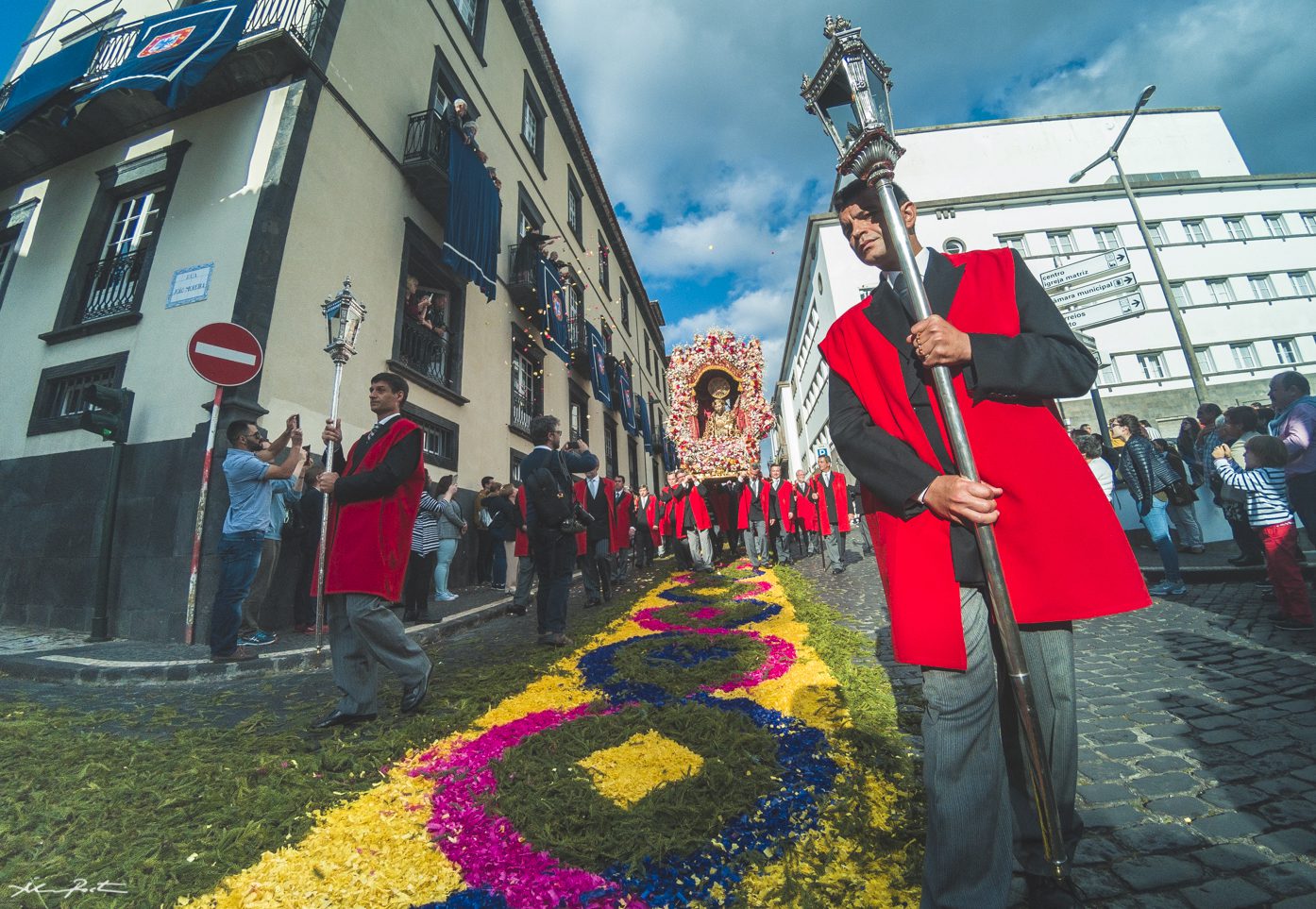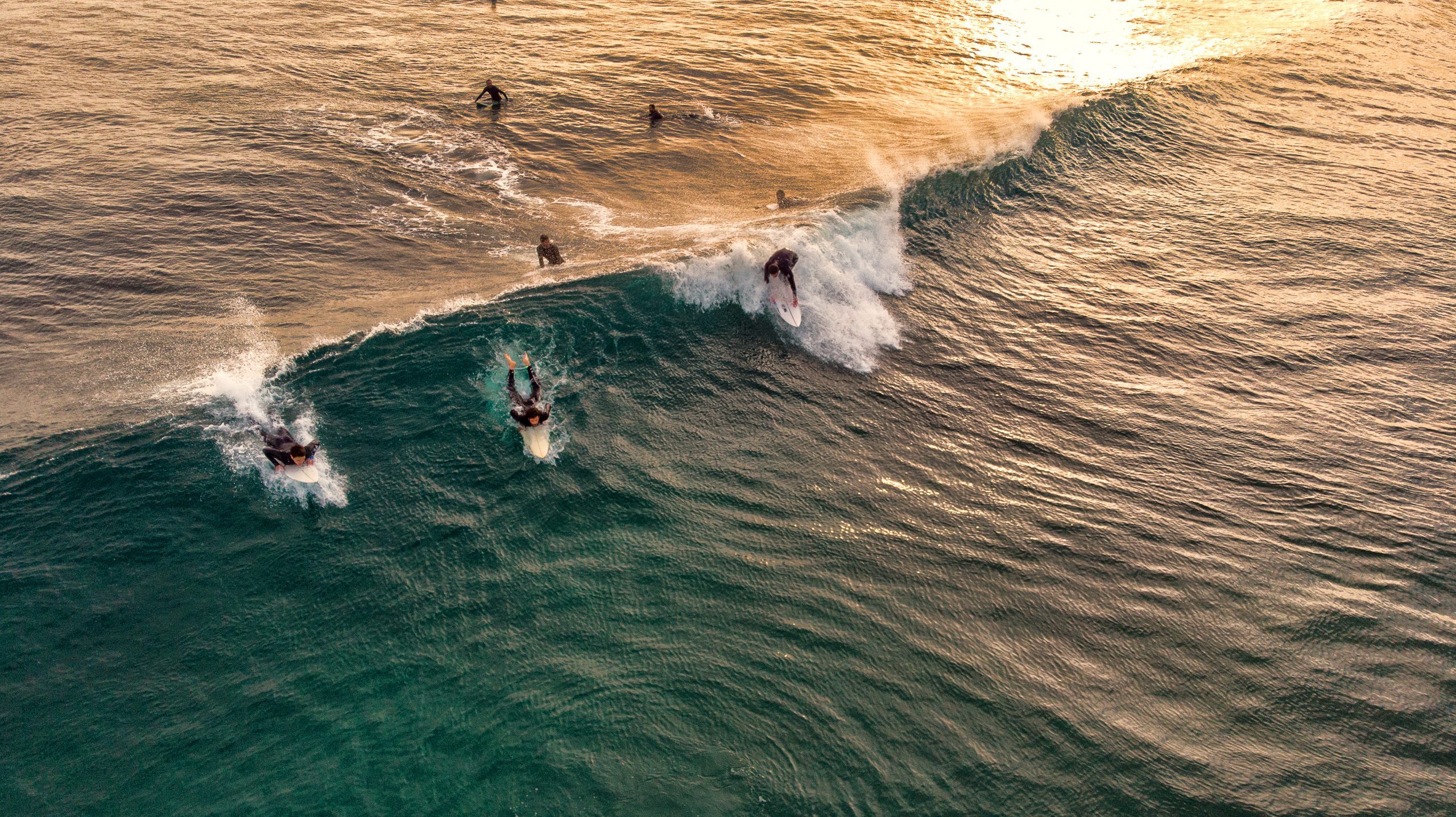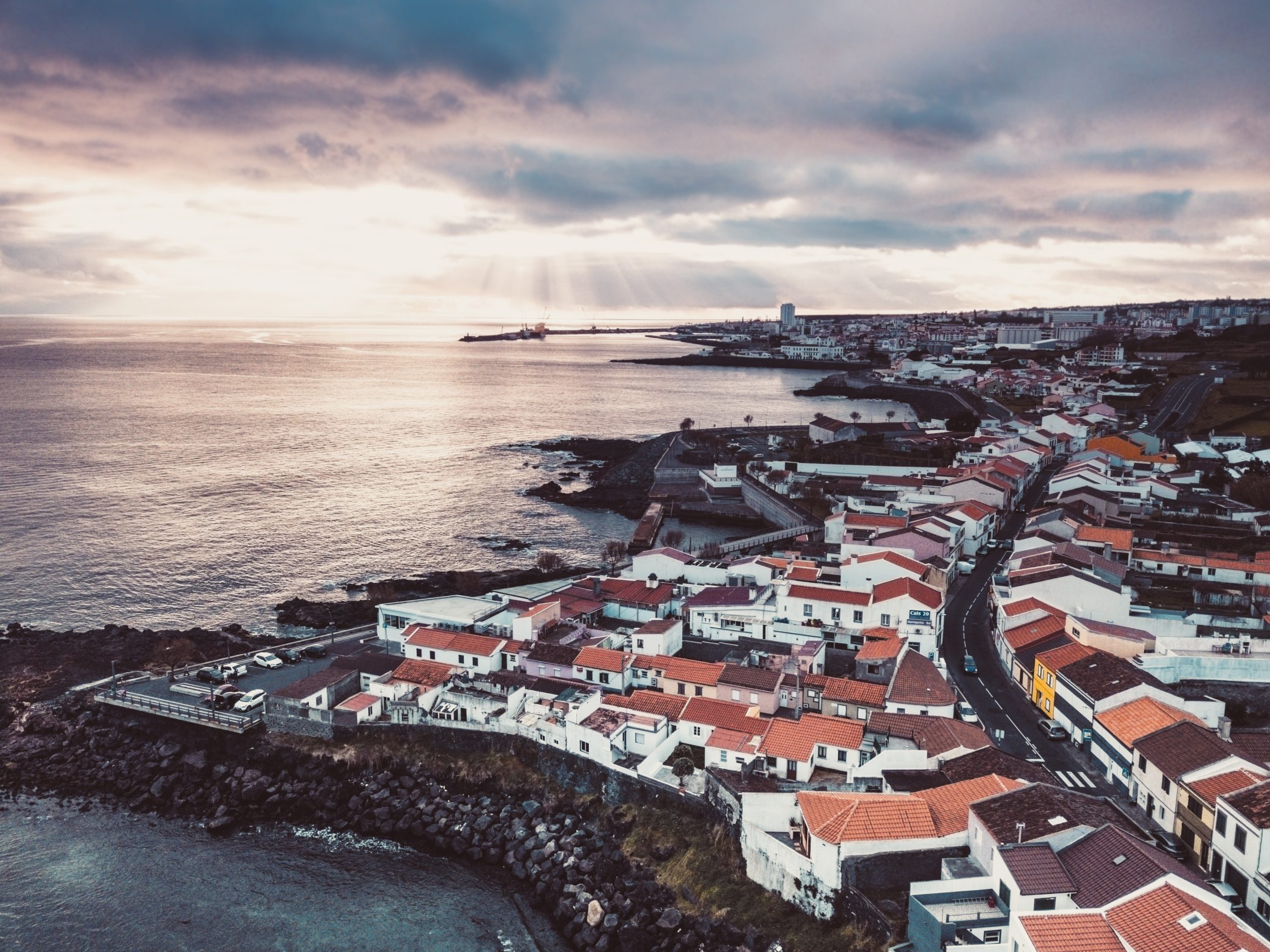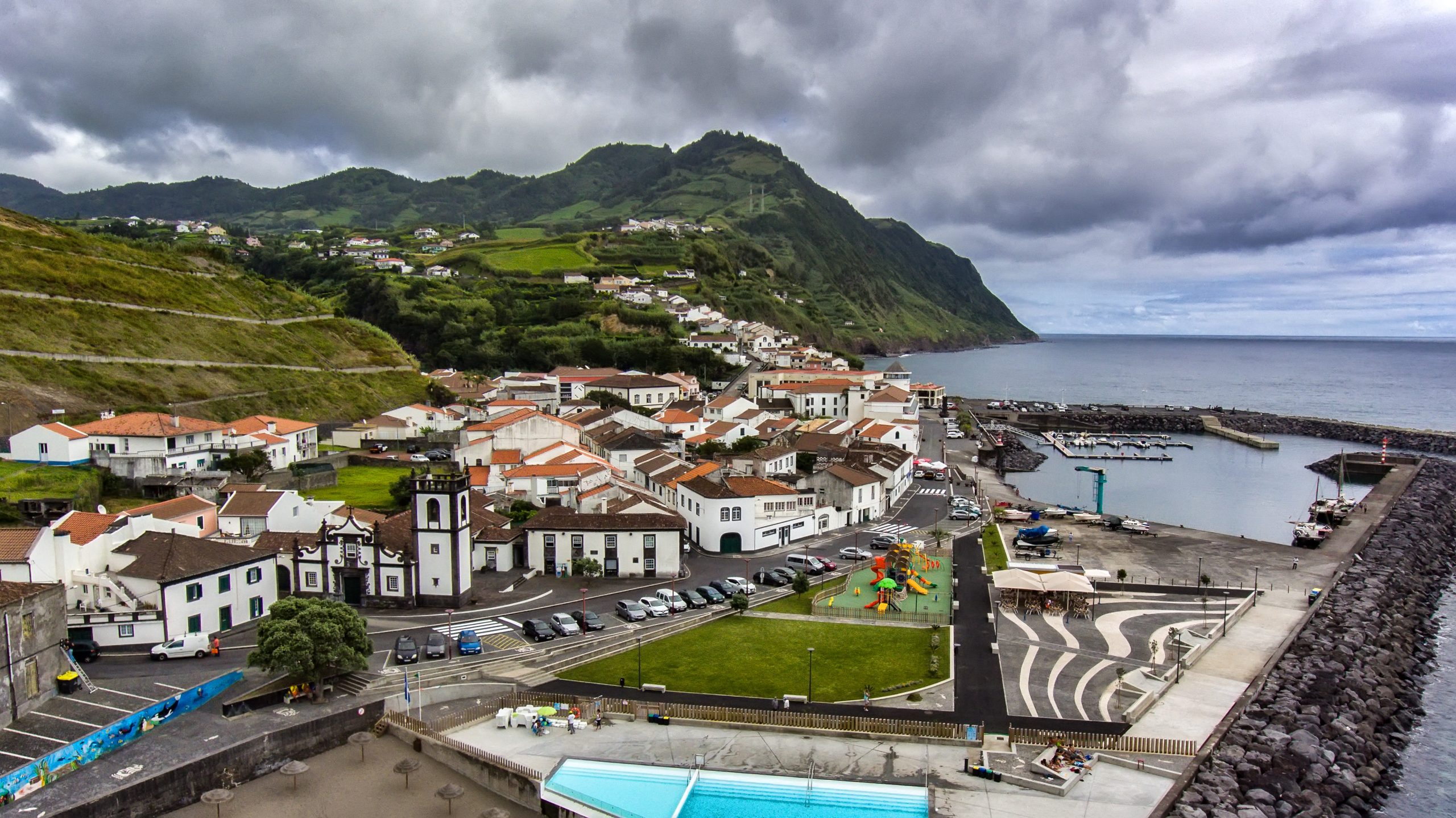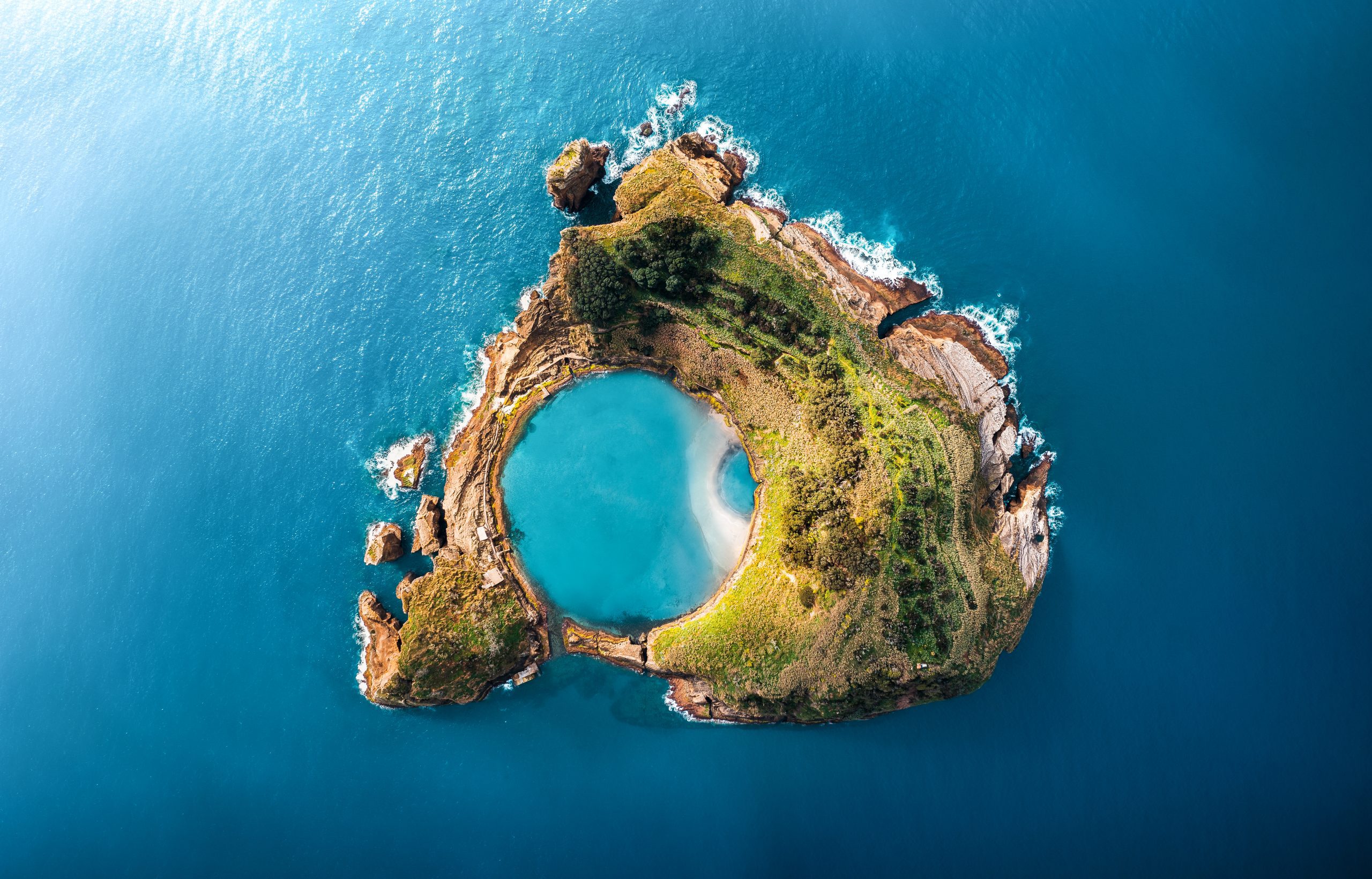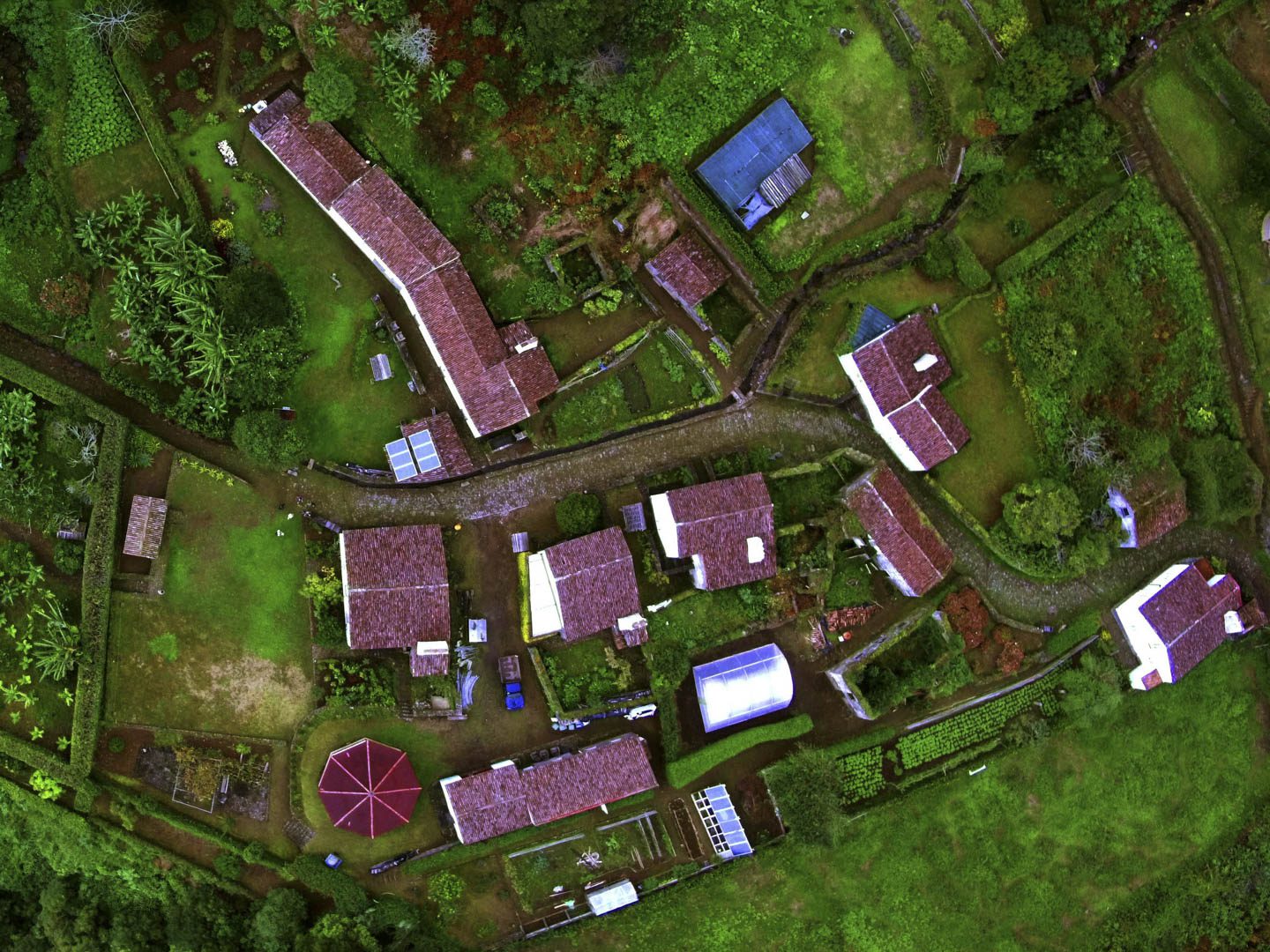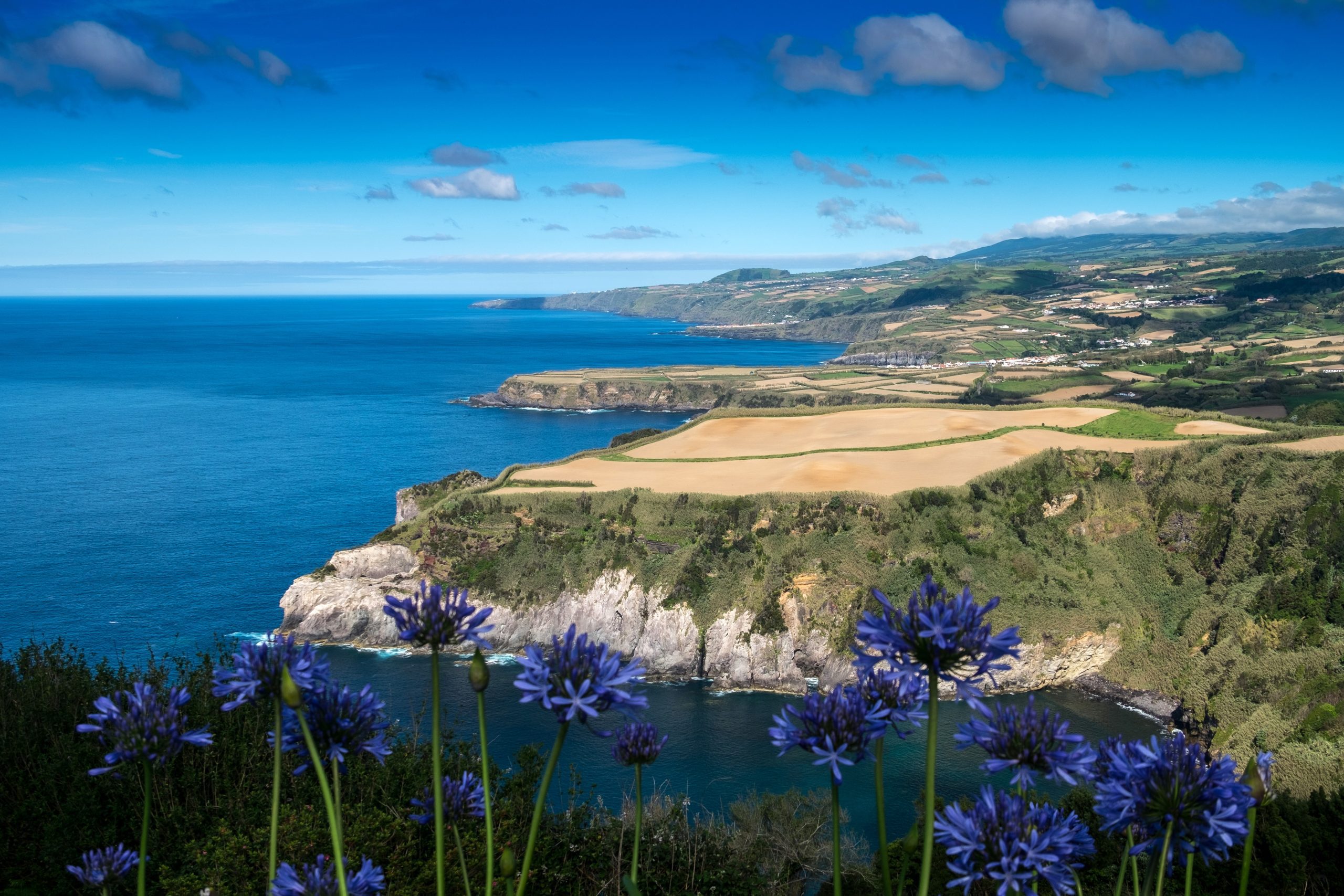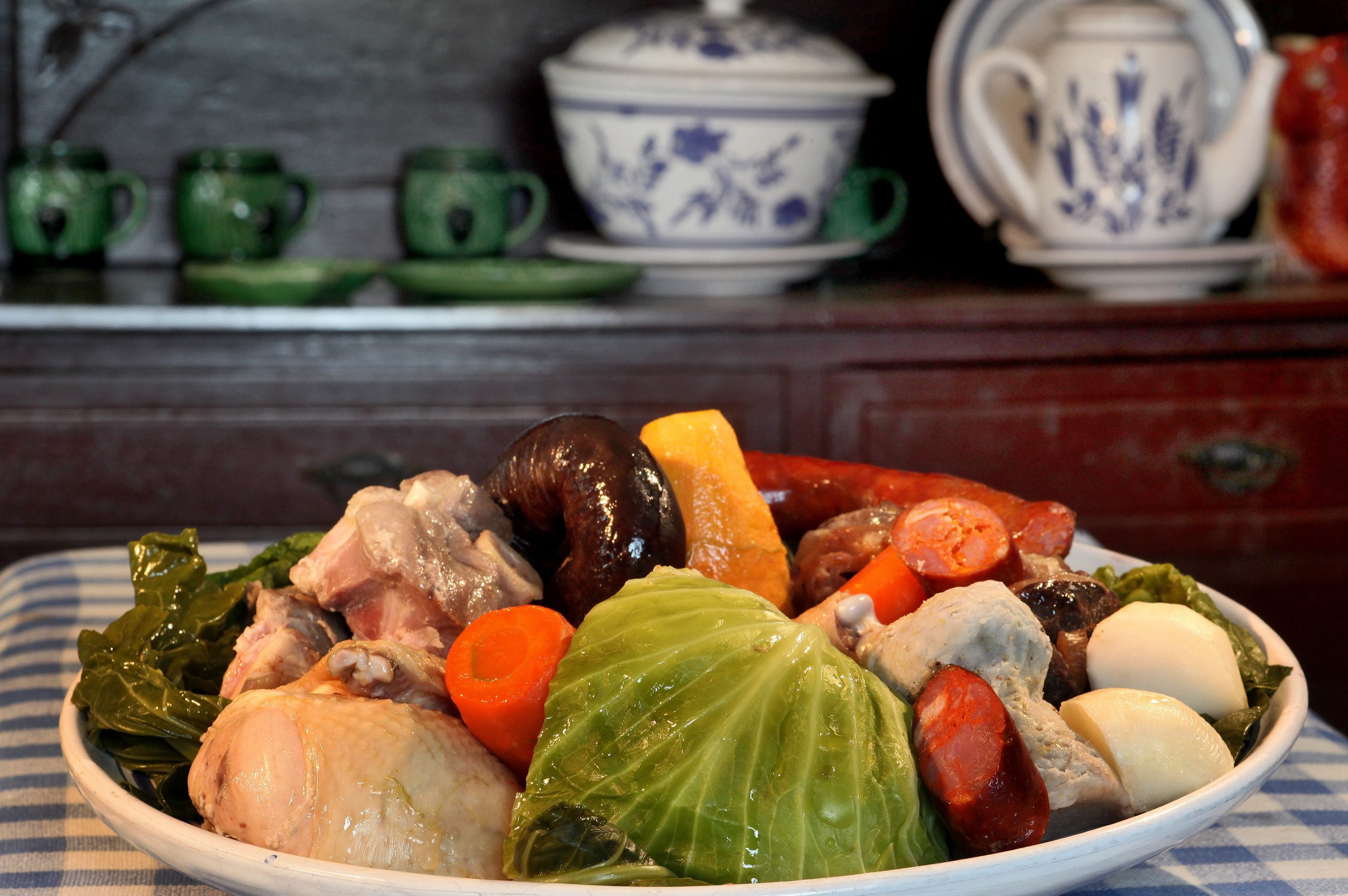Surfers’ paradise in the middle of the Atlantic Ocean, Ribeira Grande is an ode to a tranquil life by the sea. Time slows, and people seem happier as the sun warms the black-sand of Areal de Santa Barbara. In Ribeira Grande, it is always time to cool down in the transparent waters.
What is Ribeira Grande

Ribeira Grande, the surf capital, is a beautiful coastal city on the North coast of São Miguel Island. It is also the second-biggest city on the island after Ponta Delgada. Among its treasures are several churches, beautiful squares where locals and tourists meet, a farmers’ market, the river, waterfalls, and a fascinating museum about the Azorean emigration.
Geology & Volcanology
The city of Ribeira Grande is also rich in wonderful lakes, such as the famous Lagoa do Fogo or the remote Lagoa de São Brás. Due to the last eruption in the area of Lagoa do Fogo (1563), there’s still a lot of secondary volcanic activity. That same activity can be used for leisure (Caldeira Velha, Caldeiras da Ribeira Grande) or the production of energy.
Since 1994, some areas around the crater of Lagoa do Fogo have been explored for geothermal energy. Geothermal power plants and wells were established, generating approximately 24% of renewable energy.
History & Geography
After settling and populating the South Coast from Povoação to Vila Franca do Campo, the new locals moved to the North Shore. The area had good, fertile soils and freshwaters, including a big river, which gave it the name Ribeira Grande.
Following the massive eruption of Pico do Sapateiro in 1563, which destroyed the surrounding area, numerous mills were constructed, transforming Ribeira Grande into a significant agricultural hub. Several museums in Ribeira Grande offer opportunities to learn more about the region’s history. For instance, you can visit the Tobacco Museum or the Azorean Migration Museum.
Culture & Festivities
- Igreja do Espírito Santo: the Church of Espírito Santo is located in the city centre of Ribeira Grande. It was built in the 18th century and is an example of Baroque religious architecture in the Azores. The church is dedicated to the Holy Spirit and is an essential centre of devotion and popular Azorean tradition.
- Feira Quinhentista: The Feira Quinhentista is an annual historical re-enactment festival held in Ribeira Grande. The festival spans several days and celebrates the city’s rich history and cultural heritage, particularly from the 16th century. The event is designed to transport attendees back in time, giving them a sense of what life was like in Ribeira Grande during the Renaissance era.
- Cavalhadas de São Pedro: the Cavalhadas of Ribeira Grande is a traditional festival in the Azores, Portugal. It takes place every June and involves a re-enactment of the battle between the Christian and Muslim armies during the Middle Ages. The Cavalhadas of Ribeira Grande is a significant cultural event in the Azores, attracting many visitors each year.
- Museu da Emigração Açoriana: housed in the historic 19th-century fish market, this museum shares the compelling stories of Azorean emigrants who left their homeland in search of better living conditions, primarily to Brazil, the United States of America, and Canada. The museum’s collection consists mainly of objects donated by Azorean emigrants living in North America, including notable items such as the Flag and Crown of Espírito Santo, suitcases, and travel chests. It serves as a valuable repository of memories and a testament to the adventures of the people of the Azores.
→ Related Post: Public Holidays in the Azores 2025
Fauna & Flora
Ribeira Grande is a large county full of natural wonders, including unique tea plantations, tobacco fields, and sugar cane fields. On the roads, driving or just hiking, you will be surprised by the beautiful hydrangeas (macrophylla) and azaleas (Rhododendron).
What to Do at Ribeira Grande?
Ribeira Grande boasts a diverse range of trails that offer a captivating cultural and historical journey and stunning natural scenery. Among them, Pico Queimado provides incredible views of Sete Cidades and Lagoa do Fogo.
There are two hot springs in Ribeira Grande: Caldeira Velha and Caldeiras da Ribeira Grande. There, you can feel the power of the volcanic activity on the island. The waters are naturally warm year-round, offering a relaxing experience. Below you can find more detailed information about all the places you should visit and the experiences you must have.
Fábrica de Licores Mulher de Capote
Eduardo Ferreira established its liquor factory in 1993 to produce a range of regional products, including liqueurs, jams, gin, and rum, utilizing locally sourced fruits. Their passion fruit liqueur is particularly popular. They offer both free and guided tours, including a tasting of their products.
→ Explore the authentic flavors of Azorean cuisine in our articles: Bolos Lêvedos | Cozido das Furnas | Grilled Limpets | Massa Sovada | Pimenta da Terra | Gorreana Tea
Observatório Astronómico de Santana
The Santana Astronomical Observatory is a Science Center in the Azores, part of the Azores Region Science Center Network. Its primary mission is to promote science and education through outreach activities, with a particular focus on astronomy and space exploration.
Caldeiras da Ribeira Grande

The site features a picturesque landscape surrounded by trees, with a small cluster of fumaroles and numerous mineral springs. The central building, constructed in 1811, was once a spa establishment and boasts the region’s first stone bath. According to local lore, King Carlos visited the site in 1901 during his trip to the Azores, a region steeped in history. The lush vegetation, often used to demarcate public areas, creates a pleasant and distinctive atmosphere, with intimate spaces nestled throughout the site.
Portuguese-style stew in the Caldeiras of Ribeira Grande
Since August 2014, nine traditional cooking pits have been in use near the Caldeiras da Ribeira Grande area. Utilizing the heat from the volcanic earth, it conducts warmth to the pot through the soil during the cooking process. To prepare traditional Azorean stews, the process takes about 6 hours.
→ Explore the authentic flavors of Azorean cuisine in our articles: Bolos Lêvedos | Cozido das Furnas | Grilled Limpets | Massa Sovada | Pimenta da Terra | Gorreana Tea
Thermal Baths of Caldeiras da Ribeira Grande

The picturesque spa complex Thermal Baths of Caldeiras da Ribeira Grande is located in the municipality of Ribeira Grande on the island of São Miguel. The complex features white-painted 19th-century buildings, nestled in a valley surrounded by vegetation typical of Laurissilva forests and intersected by a stream.
Since the 17th century, the site has been used for therapeutic purposes to treat a range of medical conditions. In the 18th century, the popularity of spas grew due to the perceived healing properties of volcanic waters. The hot spring in the central area of the complex produces boiling water with light blue tones and typically maintains a temperature of around 30 °C.
Salto do Cabrito

Salto do Cabrito is a waterfall about 20 meters high. Lush green vegetation surrounds it, making it a popular spot for nature lovers and hikers. Visitors can access this imposing waterfall in Ribeira Grande by following a hiking trail to a viewing platform overlooking the falls.
→ Related Tours: Canyoning in Salto do Cabrito | Hiking in Salto do Cabrito
Caldeira Velha

This is an excellent option for relaxing after a day of exploring the island. The hot springs of Caldeira Velha are ideal when it is cold or windy. Its hot waterfall is famous across the islands and provides a great back massage. In the summer, it is better to book in advance. Alternatively, consider arriving early, as crowds can form and there is a limit on entry.
Ponta do Cintrão

Constructed in 1943 by União das Armações Baleeiras de São Miguel, this structure served as a lookout point for whaling companies. During the late 19th and early 20th centuries, people used it. The building offers panoramic views of the north coast, including the Ponta do Cintrão lighthouse. The lighthouse began operating on May 28, 1957. It is 14 meters tall and was equipped with a 3rd-order fixed drum dioptric lenticular apparatus. This is a large model with a 500 mm focal length and an acetylene gas incandescence light source. An oil lamp served as a backup light.
Extreme Sports

For adrenaline seekers, Ribeira Grande has it all. The Azorean capital of surf also earns recognition as a good paragliding spot. There are also many aquatic sports to discover. Not to mention canyoning!
→ Related Tour: Canyoning in Ribeira dos Caldeirões
Miradouro de Santa Iria

At the Miradouro de Santa Iria, located on the North shore of São Miguel Island, you can have a fantastic panoramic view over the coast. This is where the green cliffs meet the wild Atlantic Ocean. Don’t forget your camera to capture beautiful pictures.
Miradouro do Pico da Barrosa

Miradouro do Pico da Barrosa, being one of the highest points on the island at 947m, offers stunning views of the interior of Lagoa do Fogo crater, as well as panoramic vistas of the surrounding areas to the north, south, and west. It must be a breathtaking experience to see nature’s beauty from such a high vantage point.
Gorreana Tea Plantation

Tea production in the Azores is a significant agricultural industry and has been a part of the islands’ economy for over a century. The Azores, particularly the island of São Miguel, offer ideal conditions for tea cultivation, characterized by mild temperatures, abundant rainfall, and fertile volcanic soil. The tea plants grown in the Azores are of the Camellia sinensis variety, the same species used to produce most teas around the world.
The tea plantations in the Azores are typically situated in the central highlands of the islands, where the climate and soil conditions are most conducive to tea growth. Some of the most popular tea plantations in the Azores include Gorreana Tea Plantation and Porto Formoso Tea Factory, both of which offer tours and tastings for visitors. The tea produced in the Azores is not only enjoyed locally but is also exported to other countries, particularly to Europe and North America.
Areal de Santa Bárbara

If you want to relax on the beach, Ribeira Grande has some of the most beautiful. Areal de Santa Bárbara, or the surfers’ paradise in the Azores, hosts international surf competitions every year. Take a surf lesson with a professional and defy the Atlantic waves. It is also ideal to have a meal with the sound of the ocean in the background at the cafe right next to this long beach.
→ Related Post: Best beaches in the Azores. Read more!
Praia dos Moinhos

Located on the north shore of São Miguel Island, Praia dos Moinhos is a beautiful black-sand beach with clear waters and a submerged islet, perfect for snorkelling on good-weather days. So, take your mask and snorkel and go on an adventure, or have a drink at the bar listening to the ocean.
Rabo de Peixe

Located in the Azores, Rabo de Peixe is the largest fishing port in the region and a part of the municipality of Ribeira Grande. Its name derives from its unique strip of land resembling a fishtail, which was named by the 16th-century Azorean chronicler Gaspar Frutuoso after the discovery of a large fishtail in the area.
One of its most prominent architectural features is the parish church of Senhor Bom Jesus, which hosts the annual religious festival day and procession in honour of São Pedro Gonçalves, the patron saint of fishermen, on the sixth Sunday after Easter.
Lagoa de São Brás
Lagoa de São Brás is a stunning natural lake located in a remote area, surrounded by lush farmland and vegetation. It is situated at an altitude of 610 meters above sea level, is 330 meters long, and 200 meters wide, and has a maximum depth of 2.3 meters. It occupies an area of 0.06 km².
Check all our articles about each one of the most relevant points of interest in Ribeira Grande: Caldeiras da Ribeira Grande | Ribeira Grande | Miradouro da Bela Vista | Lagoa de São Brás | Porto de Santa Iria | Poços de São Vicente | Praia dos Moinhos | Salto do Cabrito | Miradouro de Santa Iria | Rabo de Peixe | Pico da Barrosa | Areal de Santa Bárbara | Miradouro Vigia da Baleia | Jardim Municipal da Ribeira Grande | Waterfalls of Ribeira Grande
Plan Your Visit to Ribeira Grande

Best Season to Visit São Miguel Island
São Miguel Island is in the Eastern Group of the Azores Archipelago. Here, you will notice the atypical characteristics of this climate. These result from many factors contributing to its plant exuberance and landscape value.
The climate remains mild throughout the year, with average values showing minimal fluctuations. Temperatures range from 16 °C in spring to 21 °C in summer, 18 °C in autumn, and 14 °C in winter.
Check all our articles about the weather in the Azores throughout the year 🌤️ ☔️: January | February | March | April | May | June | July | August | September | October | November | December
Where to Eat
If you need somewhere to eat near Ribeira Quente, click here. In this link, you’ll find the 10 best restaurants on TripAdvisor.
Where to Stay
To make your life easier, we’ve filtered the search by:
Azores Guide Book
Azorean Language & Phrases 🗣️ | Currency & Banks 💵 | Credit Cards & Traveler’s Cheques 🏧 | Driving in the Azores 🚗 | Electricity 🔌 | Experiences & Tours 🗺️ | Health & Safety 🩺 | Internet & Wi-Fi Access 🛜 | Phones & Mobile Service 📞 | Post Offices & Buying Stamps ✉️ | Public Holidays 🏖️ | Shopping 🛒 | Time & Daylight 🕒 | Whale Watching Guide 🐳 | Best Island to Visit 🏞️
Nearby Attractions
Furnas

Check all our articles about each one of the most relevant points of interest in Furnas: Caldeiras das Furnas | Furnas | Capela da Nossa Senhora das Vitórias | Castelo Branco Viewpoint | Lagoa das Furnas | Lagoa das Furnas Viewpoint | Mata-Jardim José do Canto | Parque Terra Nostra’s Thermal Pool | Pico do Ferro Viewpoint | Poça da Dona Beija | Ribeira Quente | Praia do Fogo | Salto do Cavalo Viewpoint | Salto do Rosal | Terra Nostra Garden
Vila Franca do Campo

Check all our articles about each one of the most relevant points of interest in Vila Franca do Campo: Vila Franca do Campo | Ermida de Nossa Senhora da Paz | Ilhéu de Vila Franca | Praia da Amora | Praia da Vinha da Areia | Praia de Água D’Alto | Lagoa do Congro | Lagoa dos Nenúfares | Miradouro do Castelo Branco
Lagoa

Check all our articles about each one of the most relevant points of interest in Lagoa: Lagoa | Caloura | Água de Pau
Lagoa do Fogo

Check all our articles about each one of the most relevant points of interest in Lagoa do Fogo: Caldeira Velha | Lagoa do Fogo | Pico da Barrosa | Janela do Inferno
Ponta Delgada

Check all our articles about each one of the most relevant points of interest in Ponta Delgada: Gruta do Carvão | Ponta Delgada | Jardim António Borges | Jardim Botânico José do Canto | Pinhal da Paz | Portas da Cidade | Milícias & Pópulo Beaches | Praia de São Roque | Pico Vermelho Windmill | Rocha da Relva | Mercado da Graça | Miradouro Vigia da Baleia
Complementary Information
Best Season to Visit the Azores
The Azores Archipelago boasts a unique climate that shapes its lush landscapes, making it a splendid year-round destination. With mild temperatures and minimal fluctuations, each season offers something unique. Spring averages 16 °C, summer reaches 21 °C, autumn cools to 18 °C, and winter remains mild at 14 °C.
→ For a detailed breakdown of the weather by month, check the following links 🌤️☔️: January | February | March | April | May | June | July | August | September | October | November | December
How to Get to the Azores
The Azorean Archipelago is easily accessible through numerous flight routes. Lisbon and Porto are the main entry points to the continent, with direct flights available to São Miguel (PDL), Terceira (TER), Faial (HOR), Pico (PIX), and Santa Maria (SMA). To find the best flight, use search engines like eDreams or Skyscanner. These platforms let you compare prices and schedules from multiple airlines in one convenient location.
For more details on how to get to the Azores, take a look at our complete guide. But what if you want to explore beyond your arrival island? We’ve got you covered!
- Azores airports 🛬
- Flights between islands ✈️
- Ferries between islands ⛴️
- Which island to choose? 🏝️
- What airlines fly to the Azores? 🛩️
→ Once you’ve found the perfect route, book your tickets and get ready to experience one of the world’s most stunning island groups!
Travel Essentials
Essential Information for your Azores trip: Azorean Language & Phrases 🗣️ | Currency & Banks 💵 | Credit Cards & Traveler’s Cheques 🏧 | Driving in the Azores 🚗 | Electricity 🔌 | Experiences & Tours 🗺️ | Health & Safety 🩺 | Internet & Wi-Fi Access 🛜 | Phones & Mobile Service 📞 | Post Offices & Buying Stamps ✉️ | Public Holidays 🏖️ | Shopping 🛒 | Time & Daylight 🕒 | Whale Watching Guide 🐳 | Best Island to Visit 🏞️
Useful Tools & Apps
The weather in the Azores can be variable, so it’s helpful to use some apps before visiting the islands. Spotazores provides live camera feeds from the main tourist attractions, allowing you to check the weather and plan your visit. For accurate weather predictions, use Windy or Windguru — they provide the most reliable predictions.
Video
Conclusion
Ribeira Grande is the second-largest city on the island of São Miguel and the only city located in the north. This municipality offers a unique variety of landscapes, including the stunning beauty of Lagoa do Fogo, which was elected one of the seven wonders of Portugal in the category of wild beaches.
With thermal baths, several trails, and cultural museums, the city also boasts fantastic beaches dedicated to surfing. This natural reserve has significant environmental, scenic, and touristic value, and it is considered one of the highlights of the Azores.
Authors’ Note
I am pleased to inform you that all the recommendations in this article are based on my personal experience and observations. As the author, I have personally visited each attraction mentioned, ensuring that every suggestion is grounded in first-hand knowledge and genuine enthusiasm.
FAQs
The Caldeiras da Ribeira Grande Hot Springs are located on the island of São Miguel in the Azores, Portugal. To find them, head northeast from Ponta Delgada along the northern coast. They sit near the town of Ribeira Grande, easily accessible by following signs from the main coastal road.
Yes, Ribeira Grande, situated on São Miguel Island in the Azores, boasts stunning beaches, including Praia do Monte Verde and Areal de Santa Bárbara. These beaches have earned a reputation for their natural beauty, offering picturesque settings that are ideal for relaxation and outdoor activities.
In Ribeira Grande, explore the historic city center, Areal de Santa Bárbara, Praia dos Moinhos, and the Ribeira Grande Municipal Museum. Engage in surfing along scenic coastlines and relax in natural hot springs for a truly immersive experience in this picturesque Azorean town.

